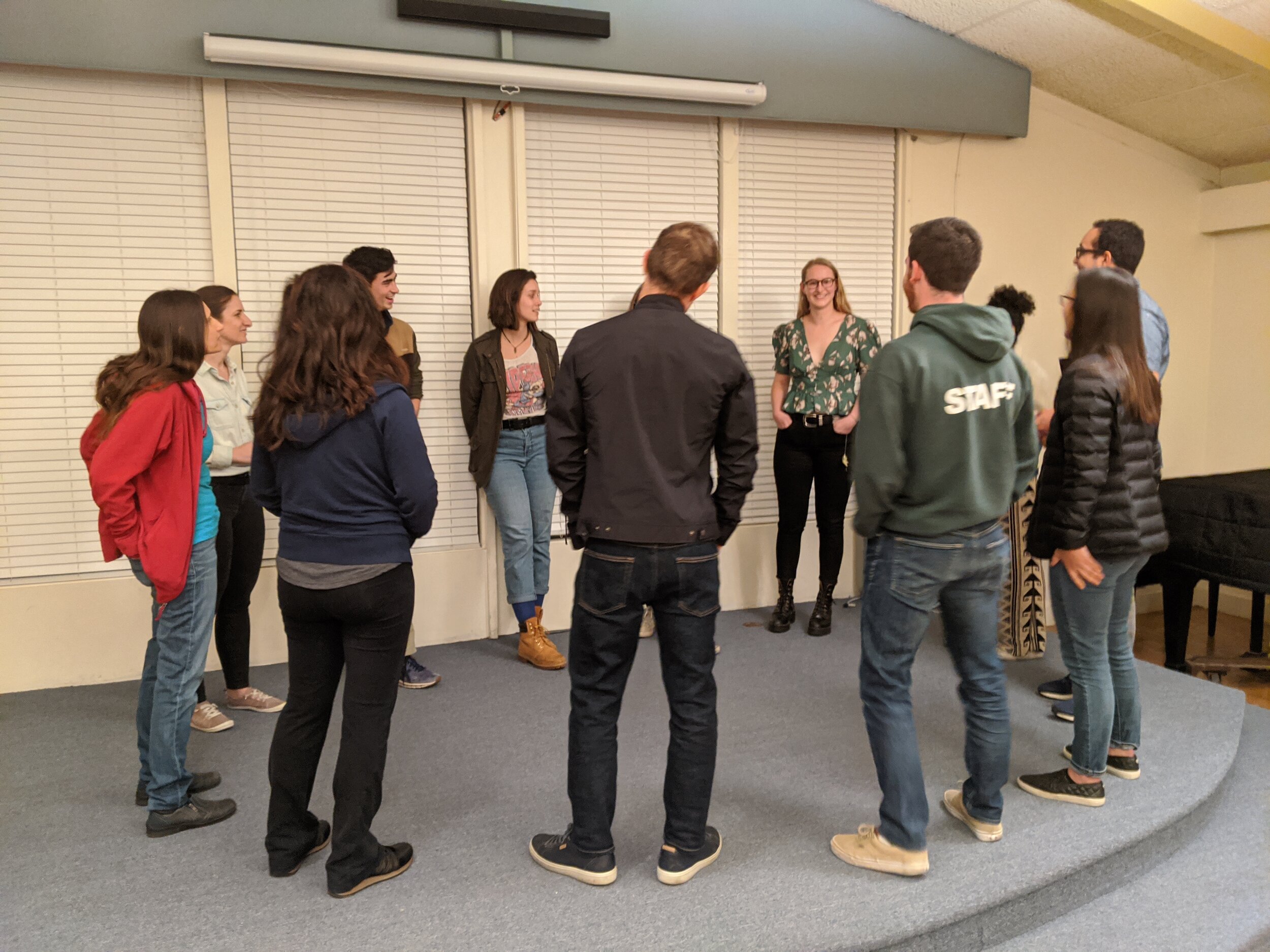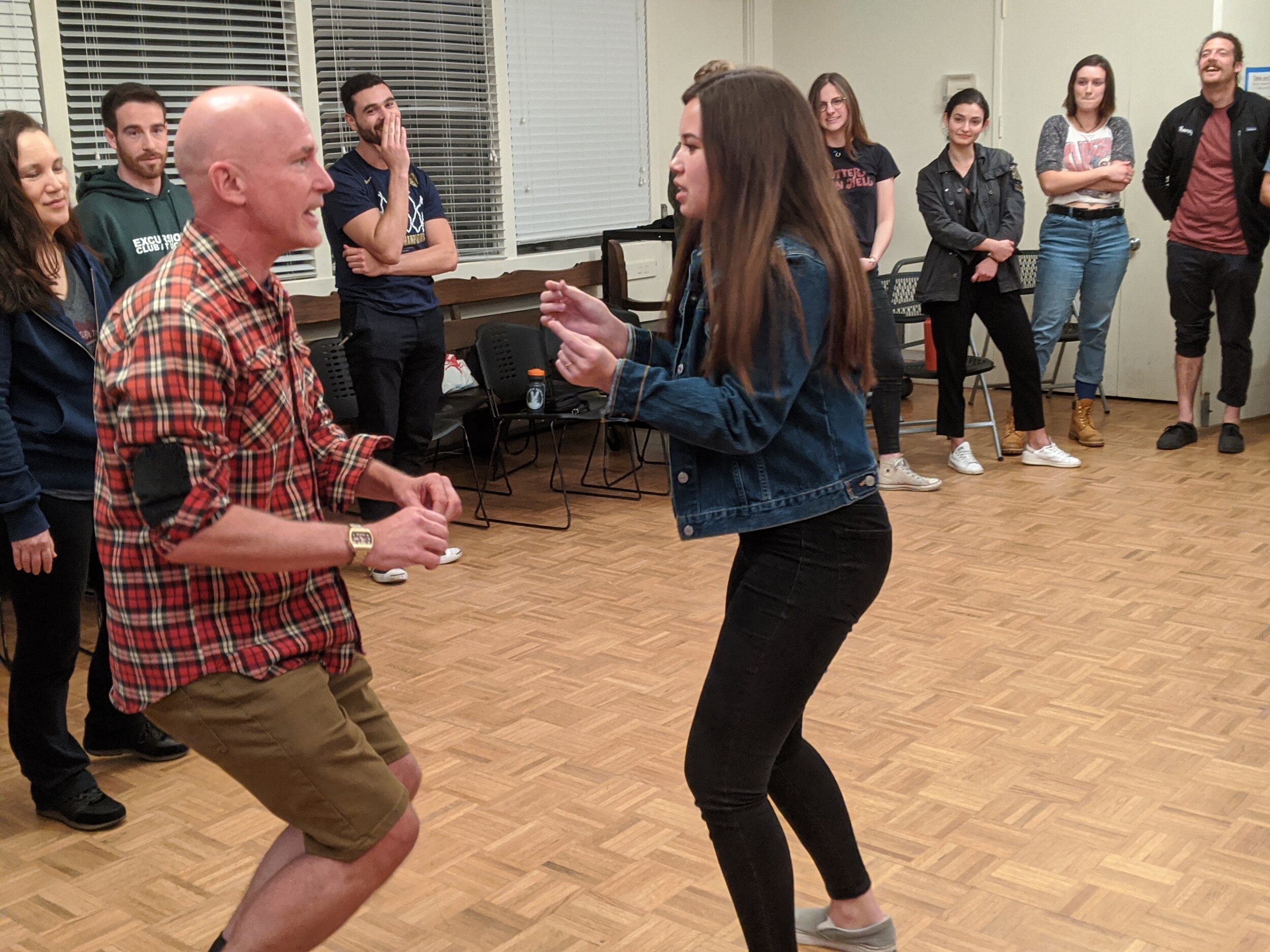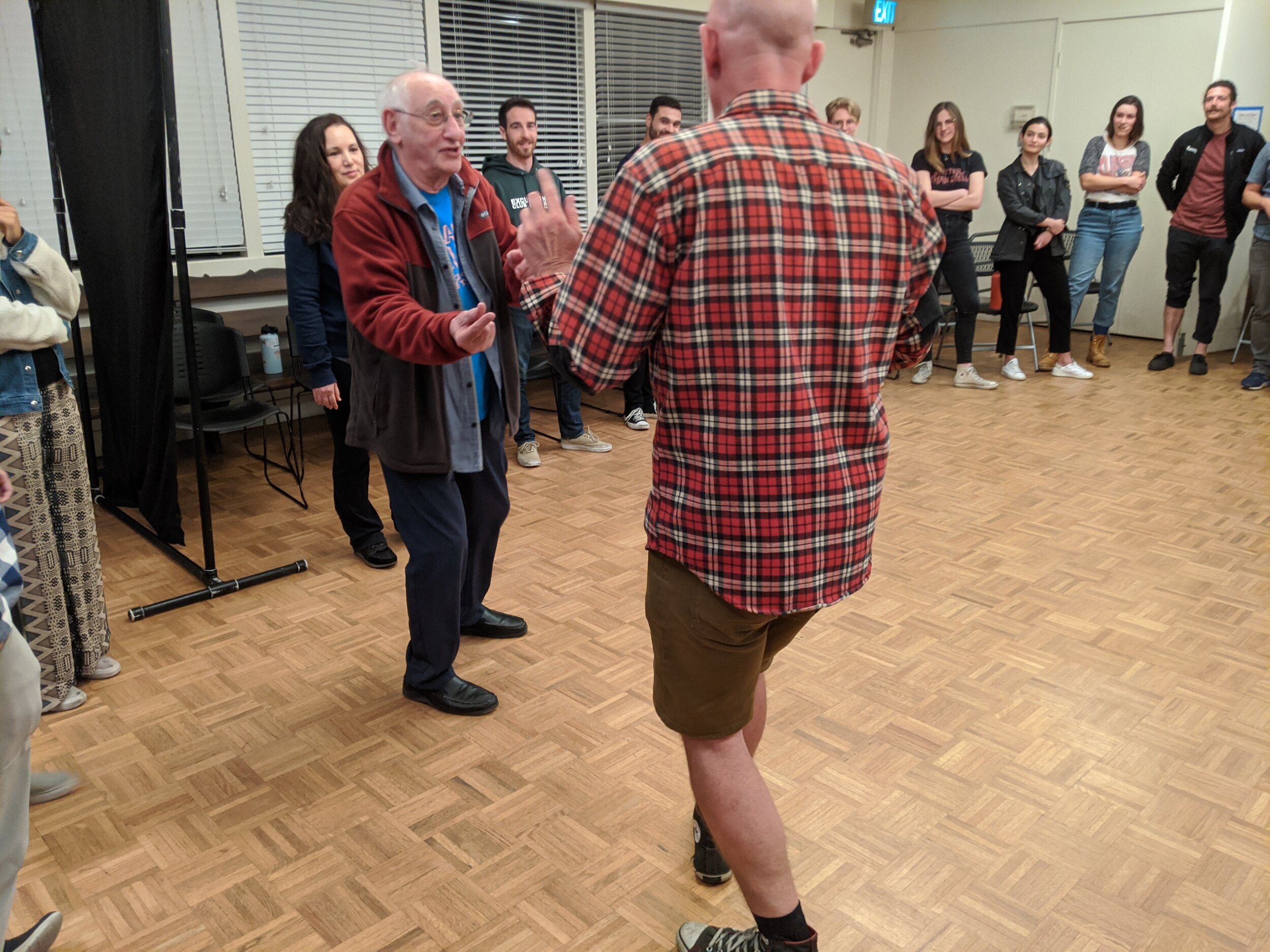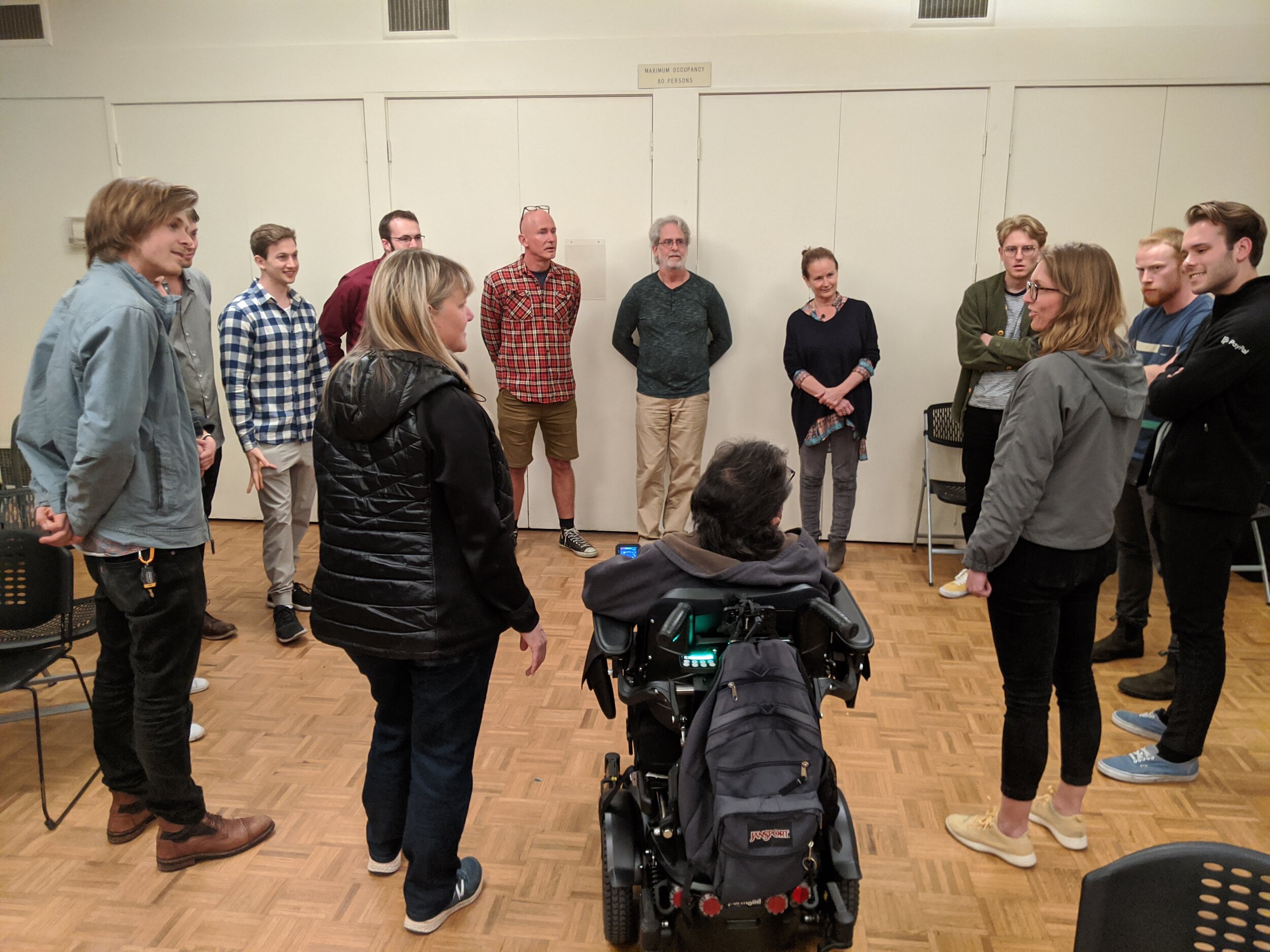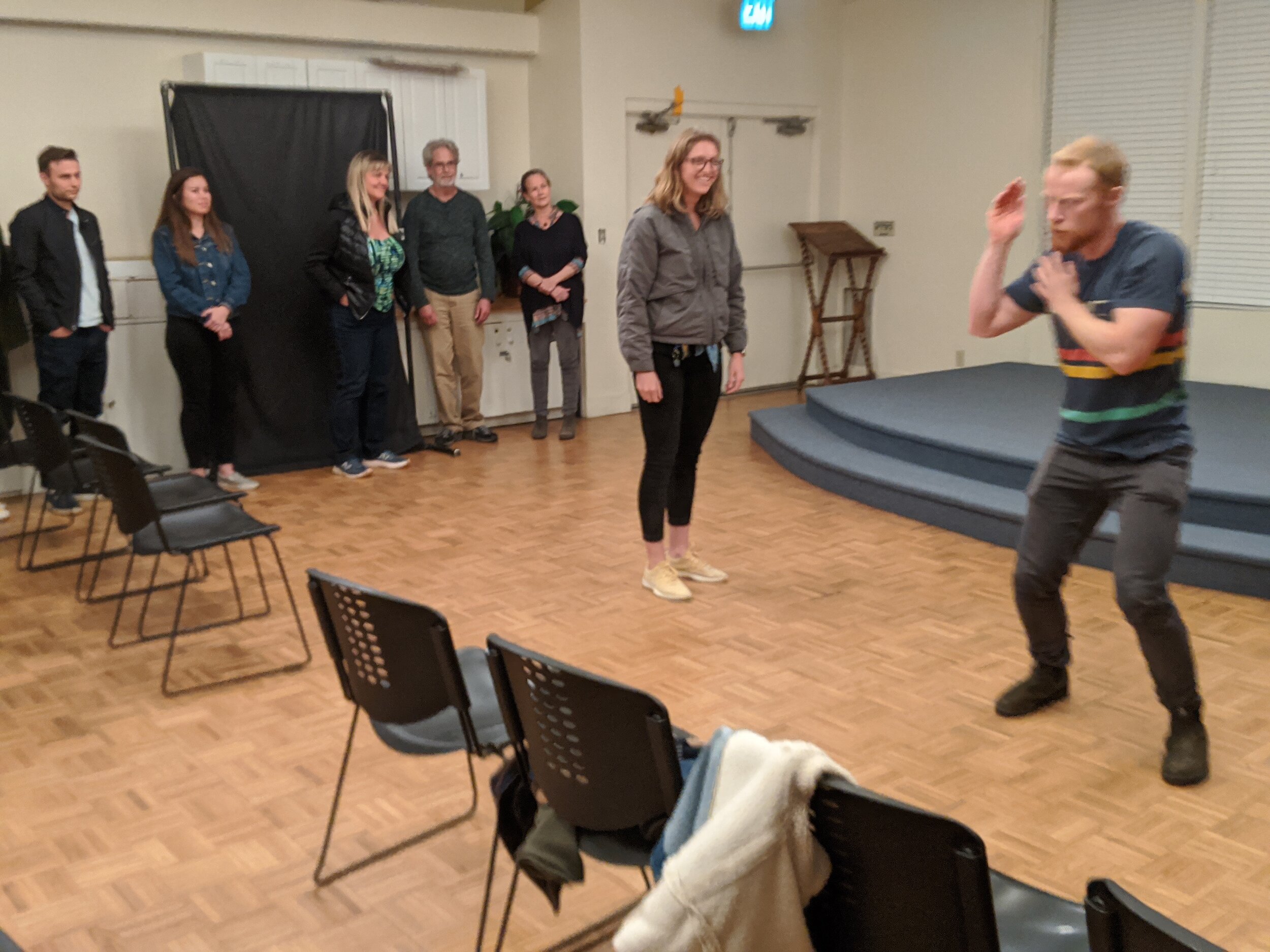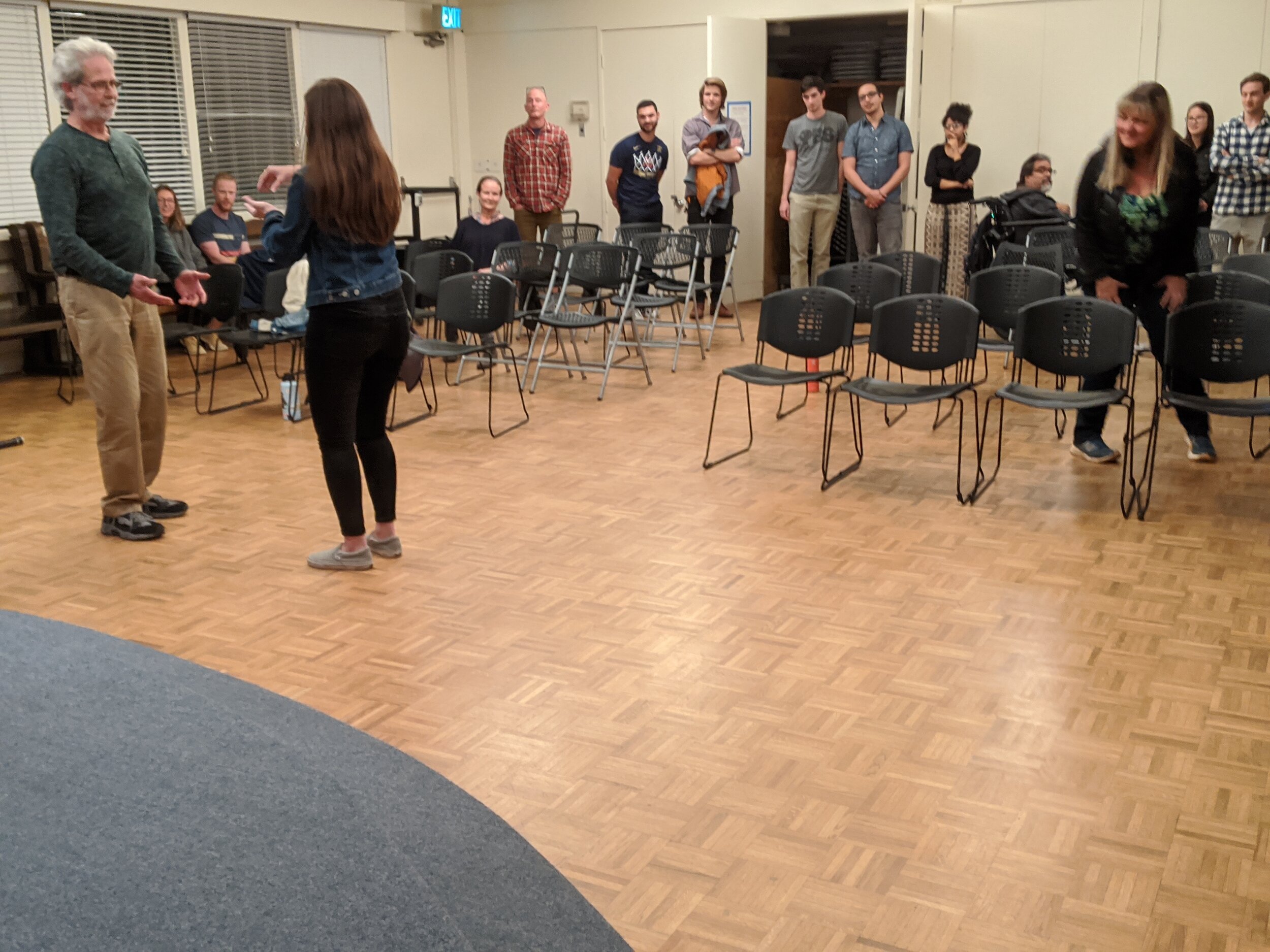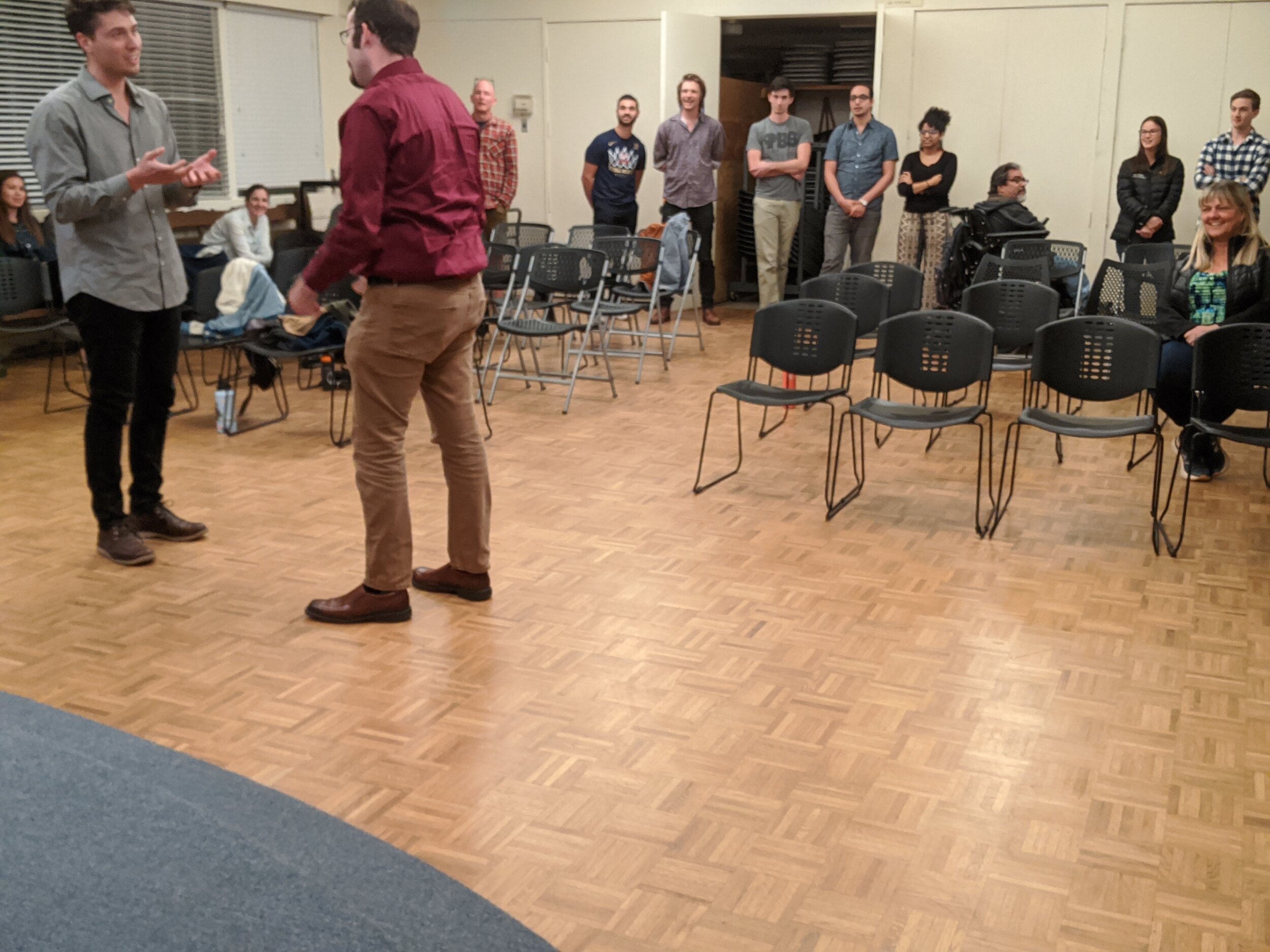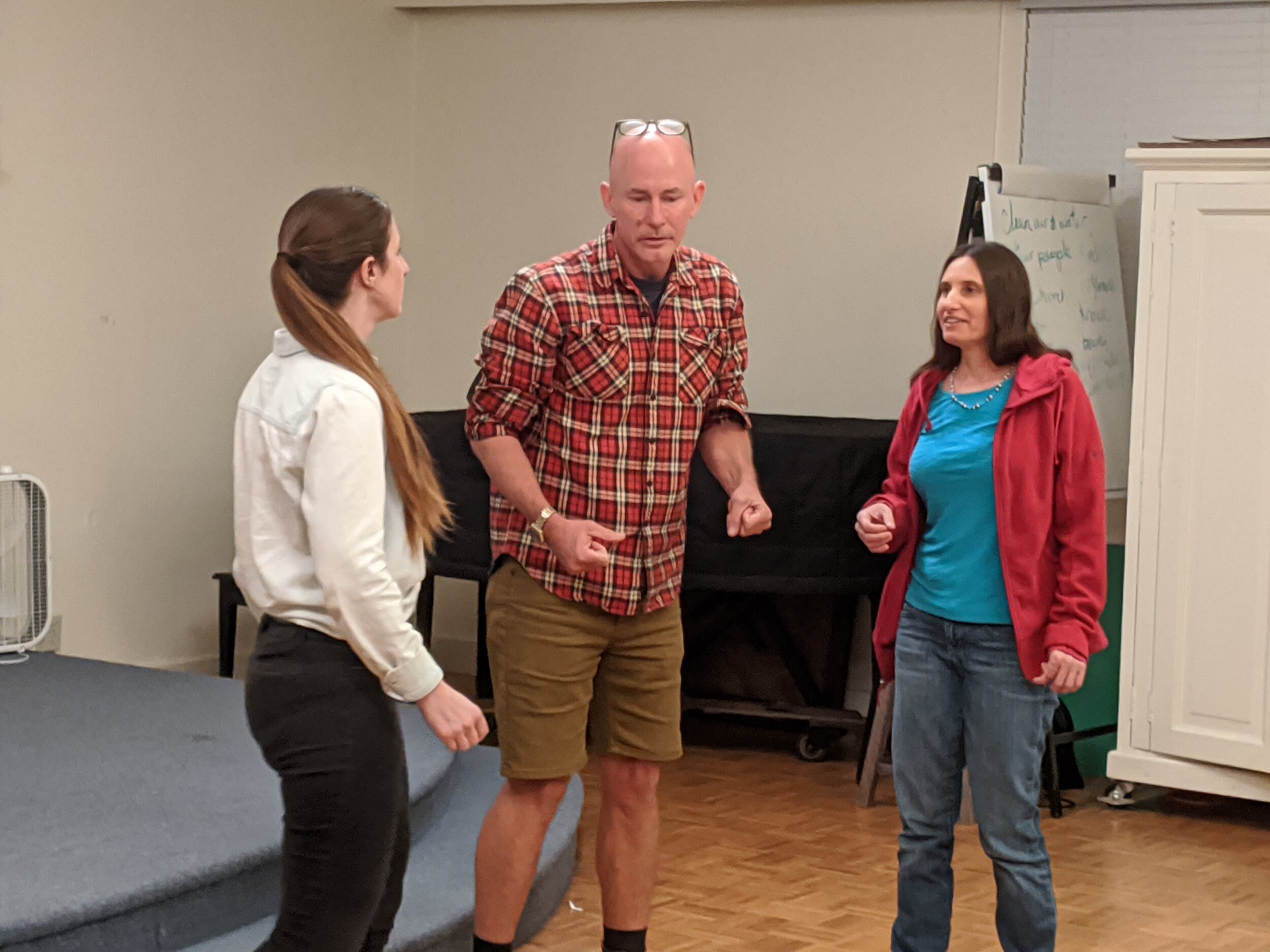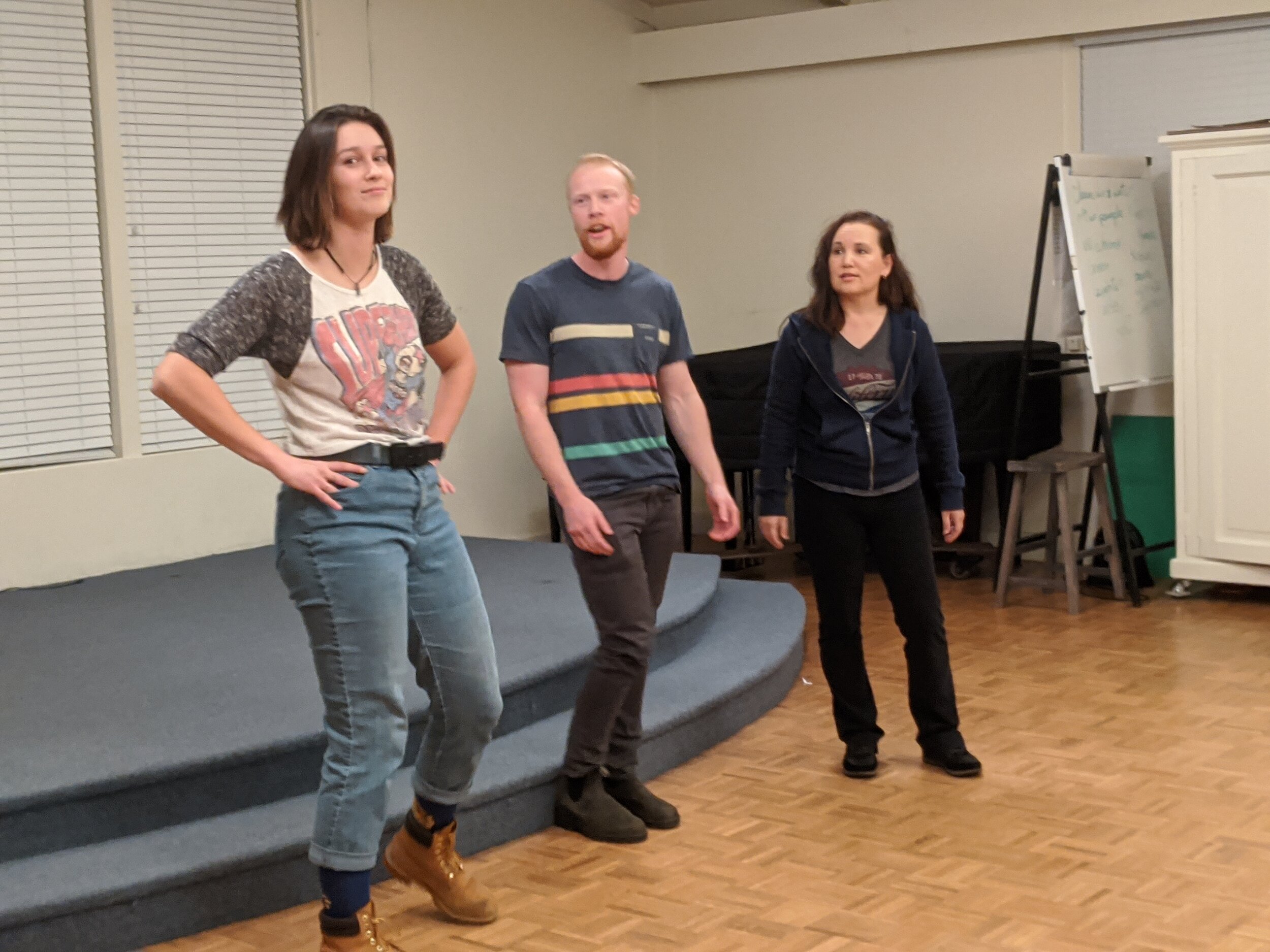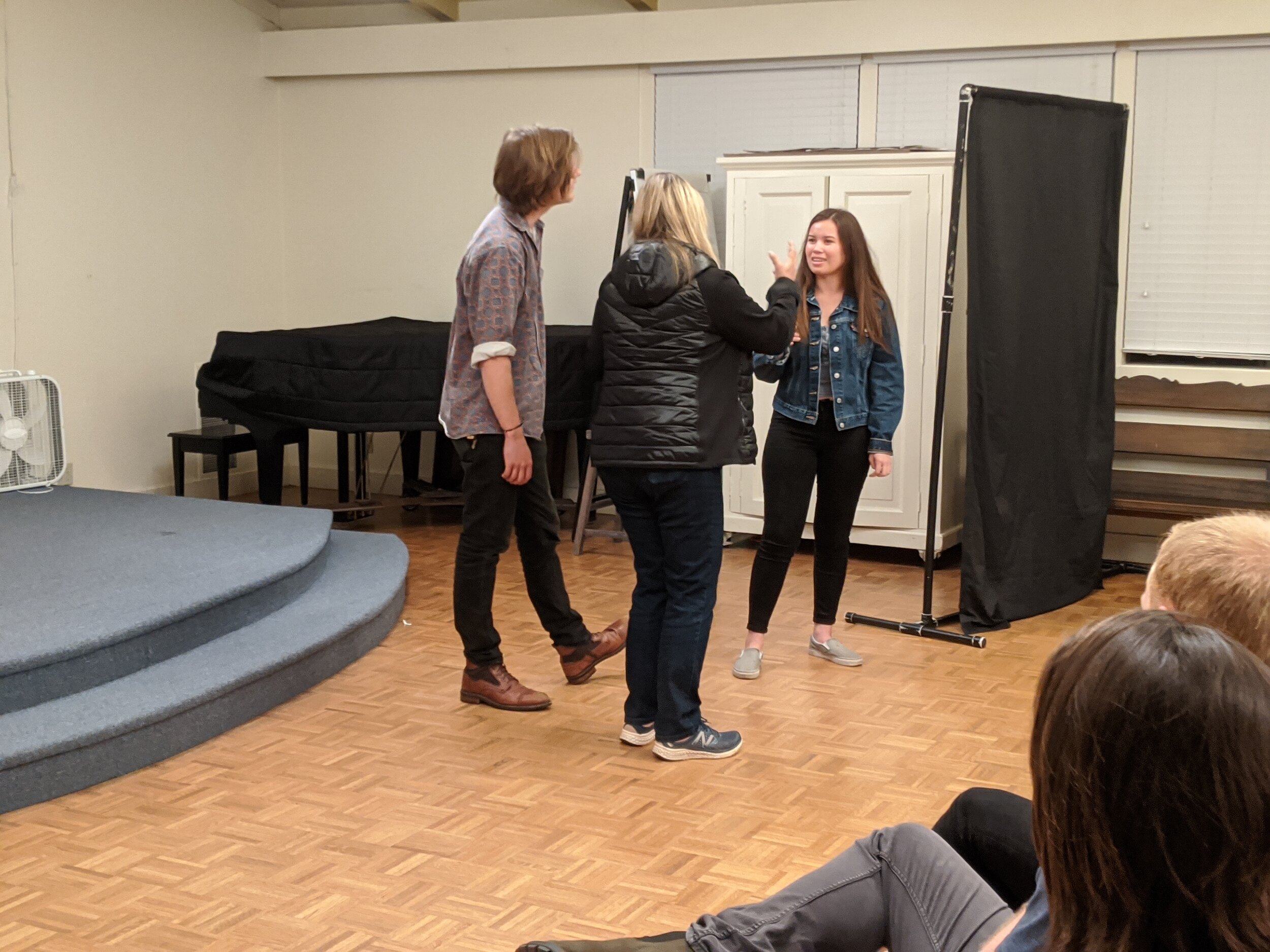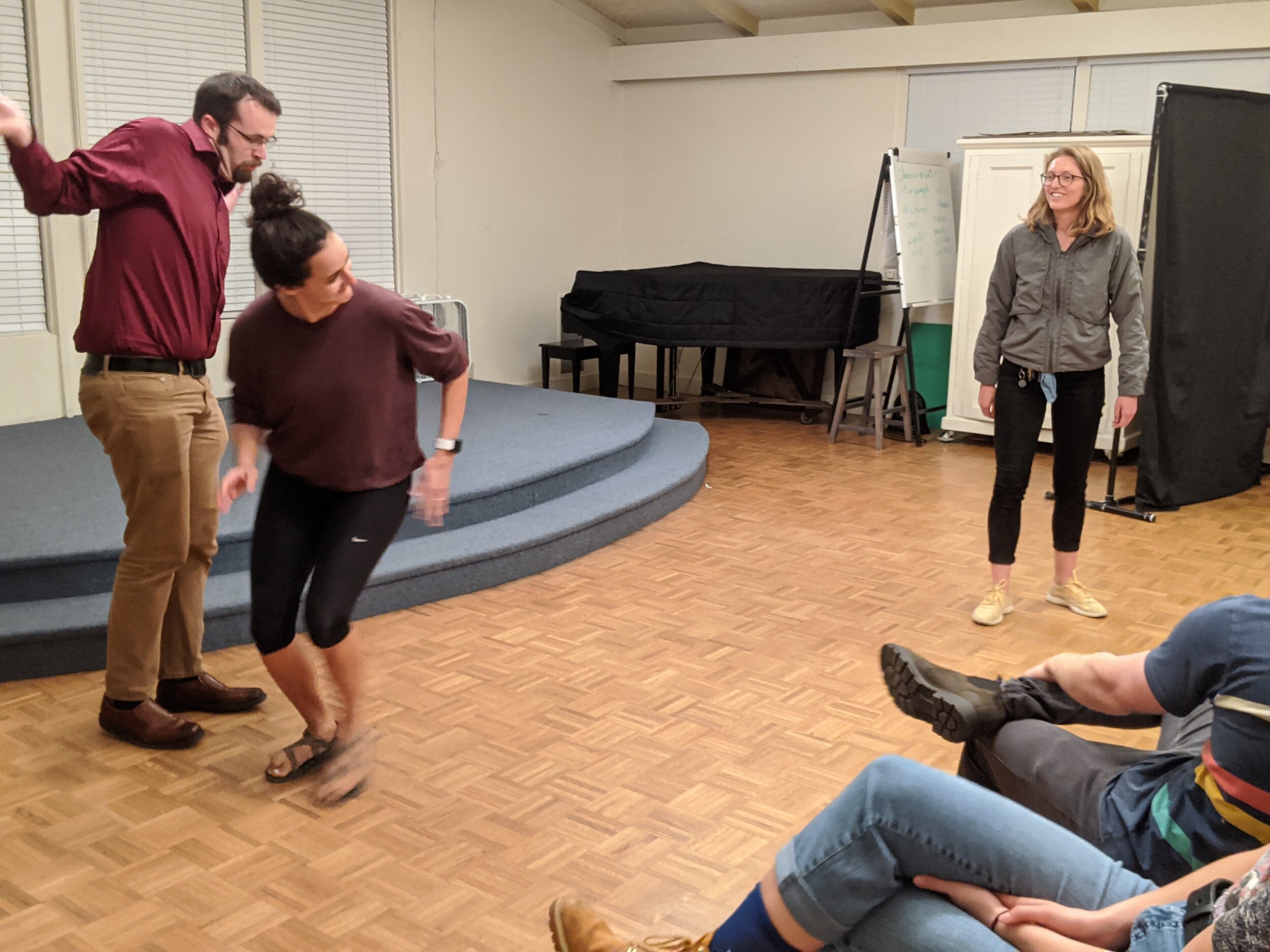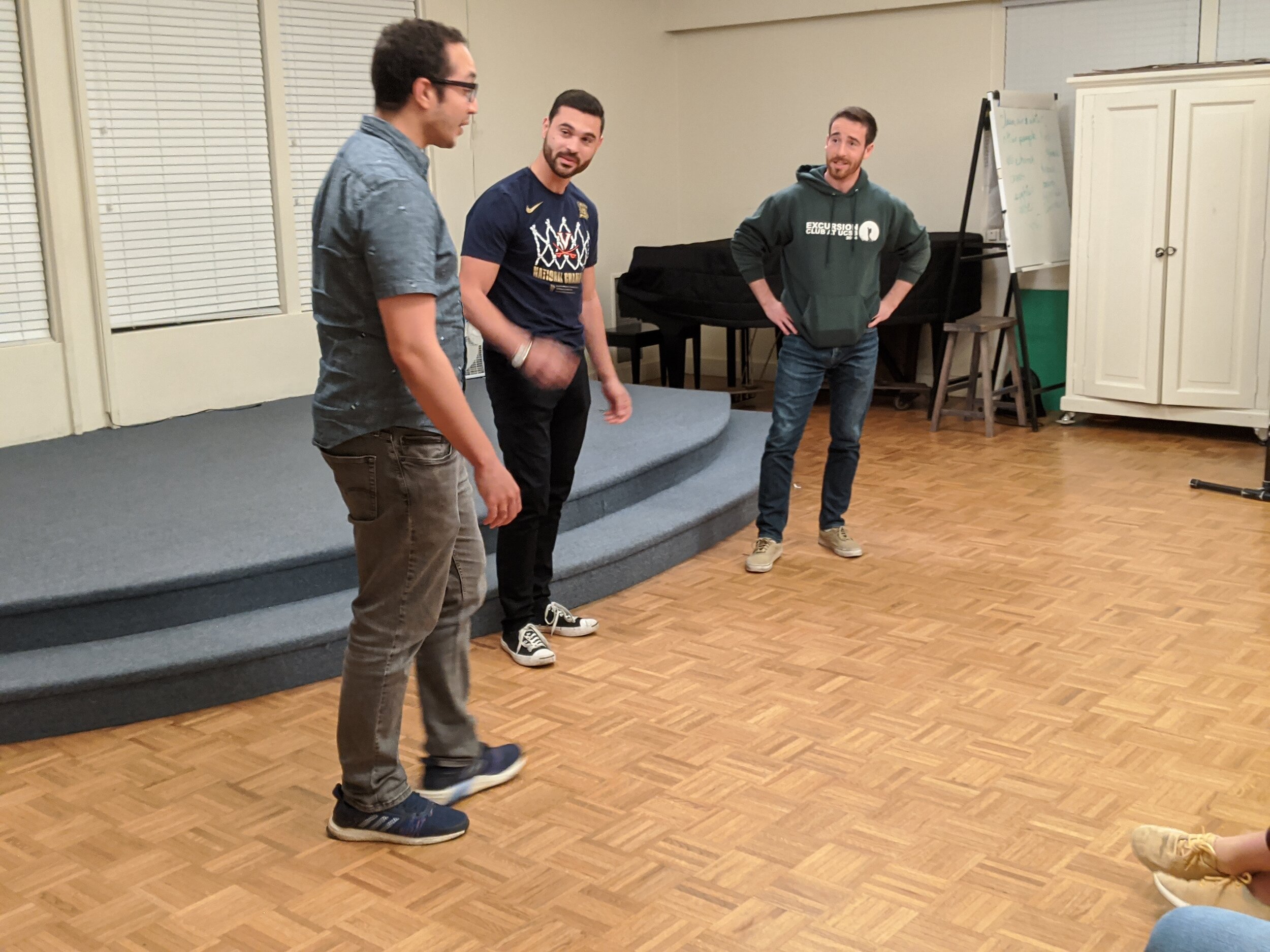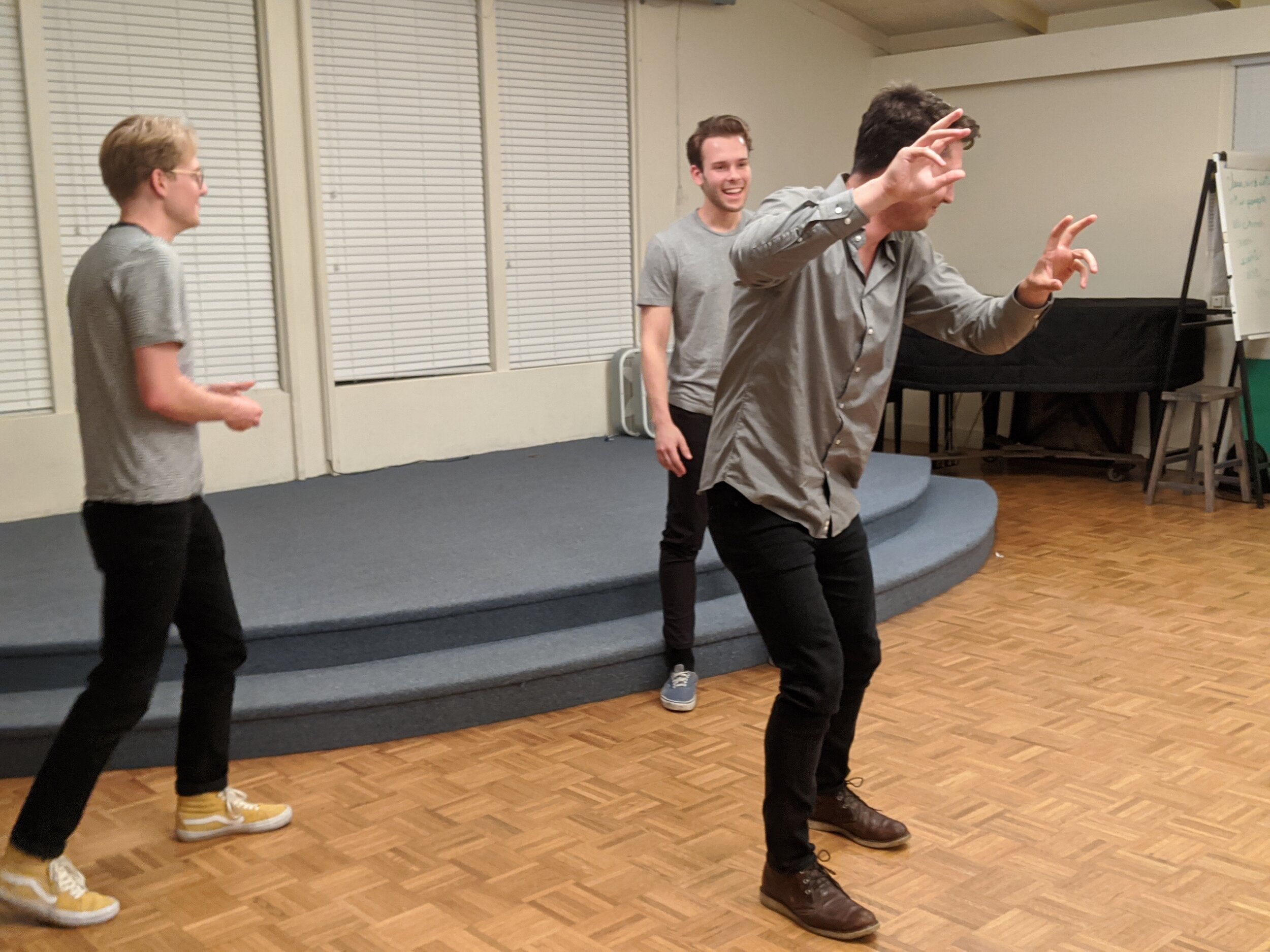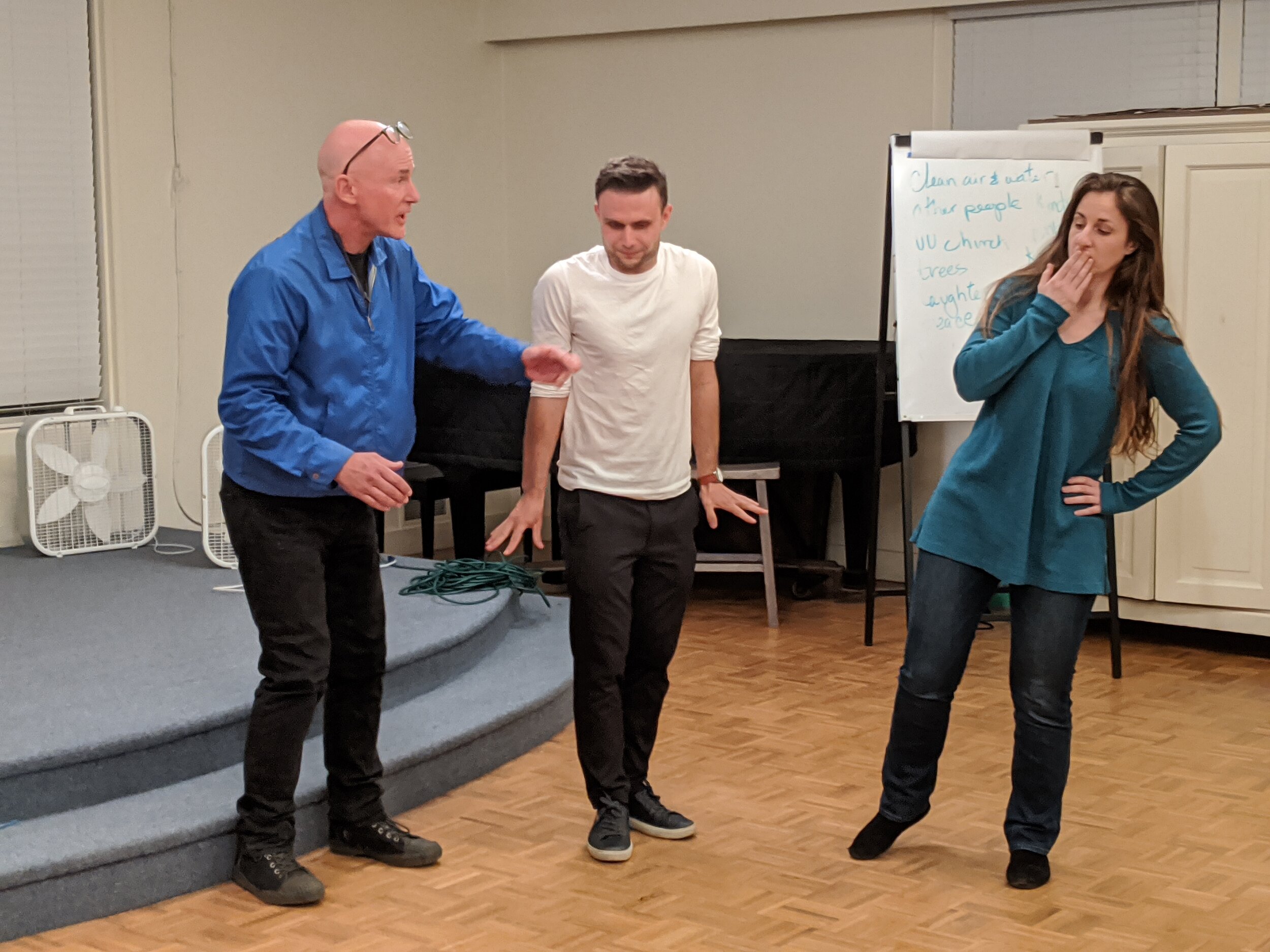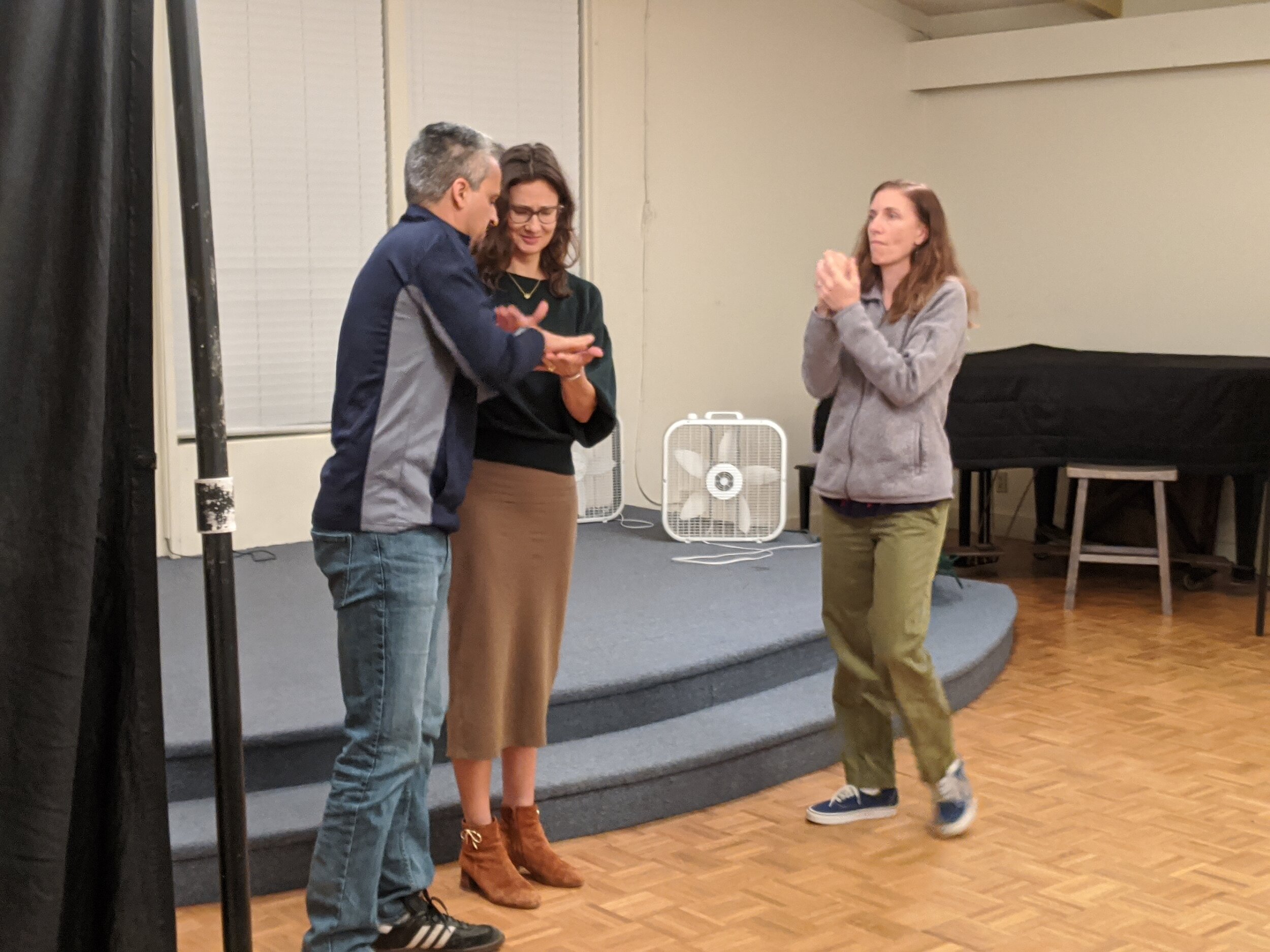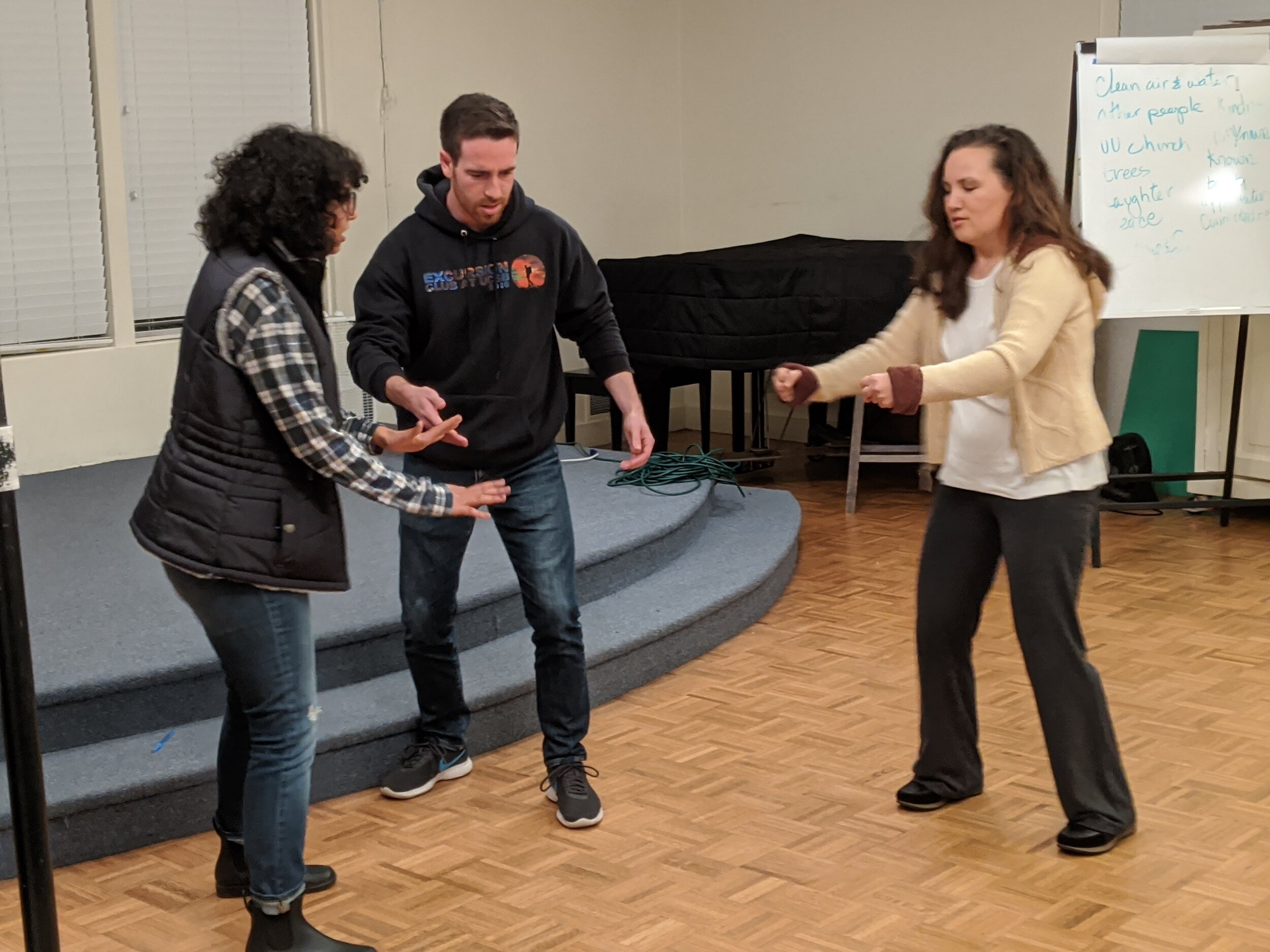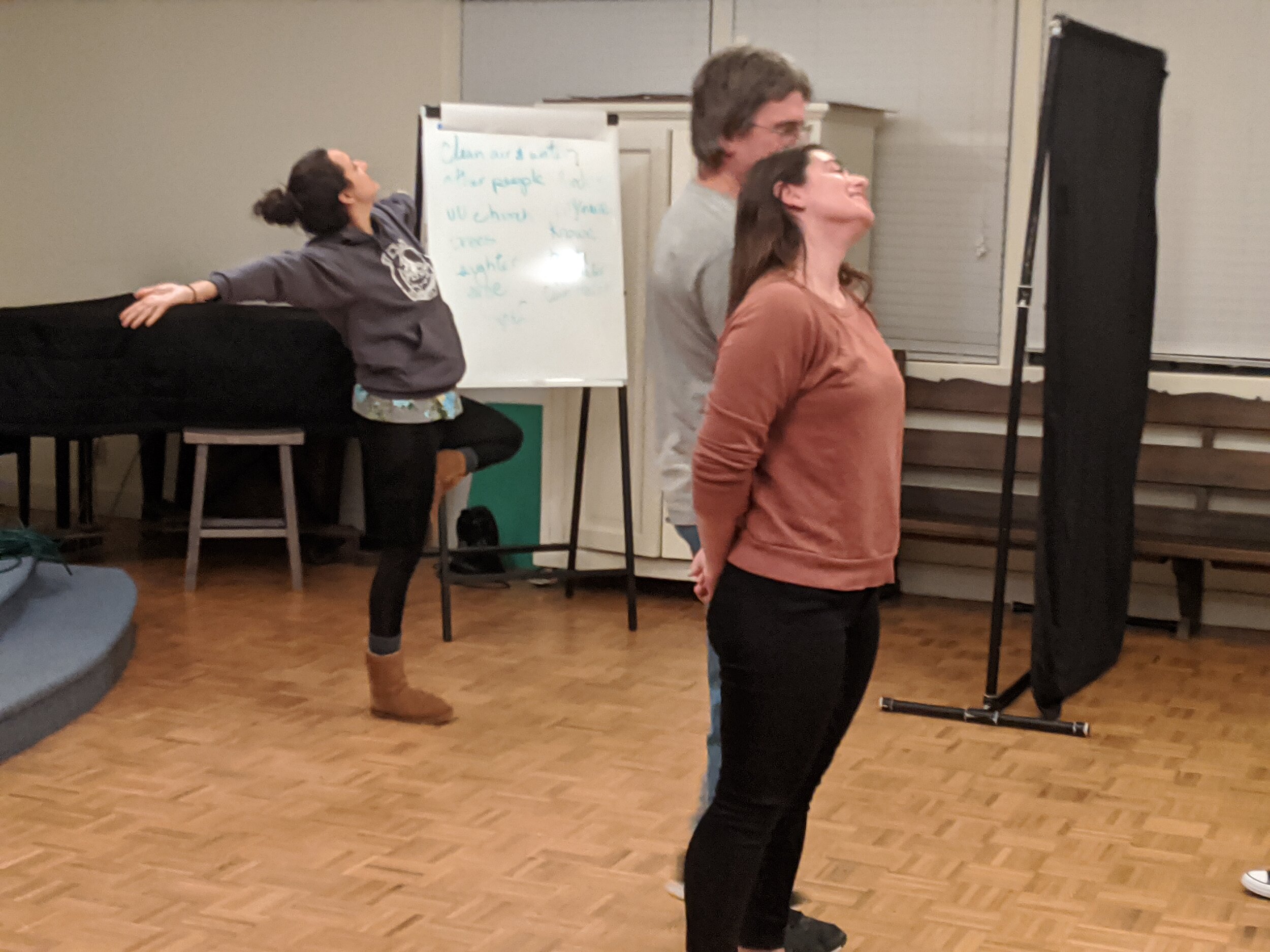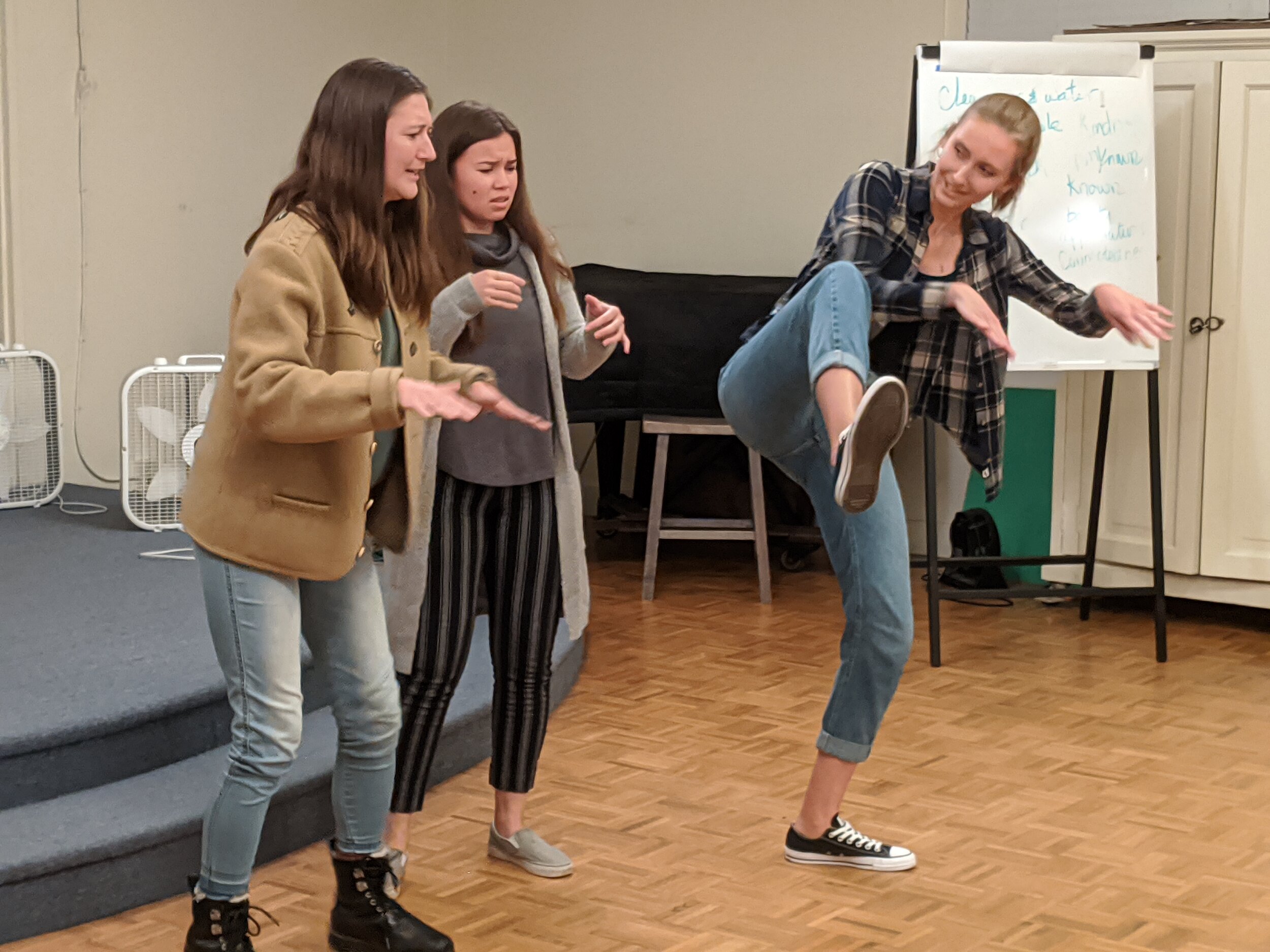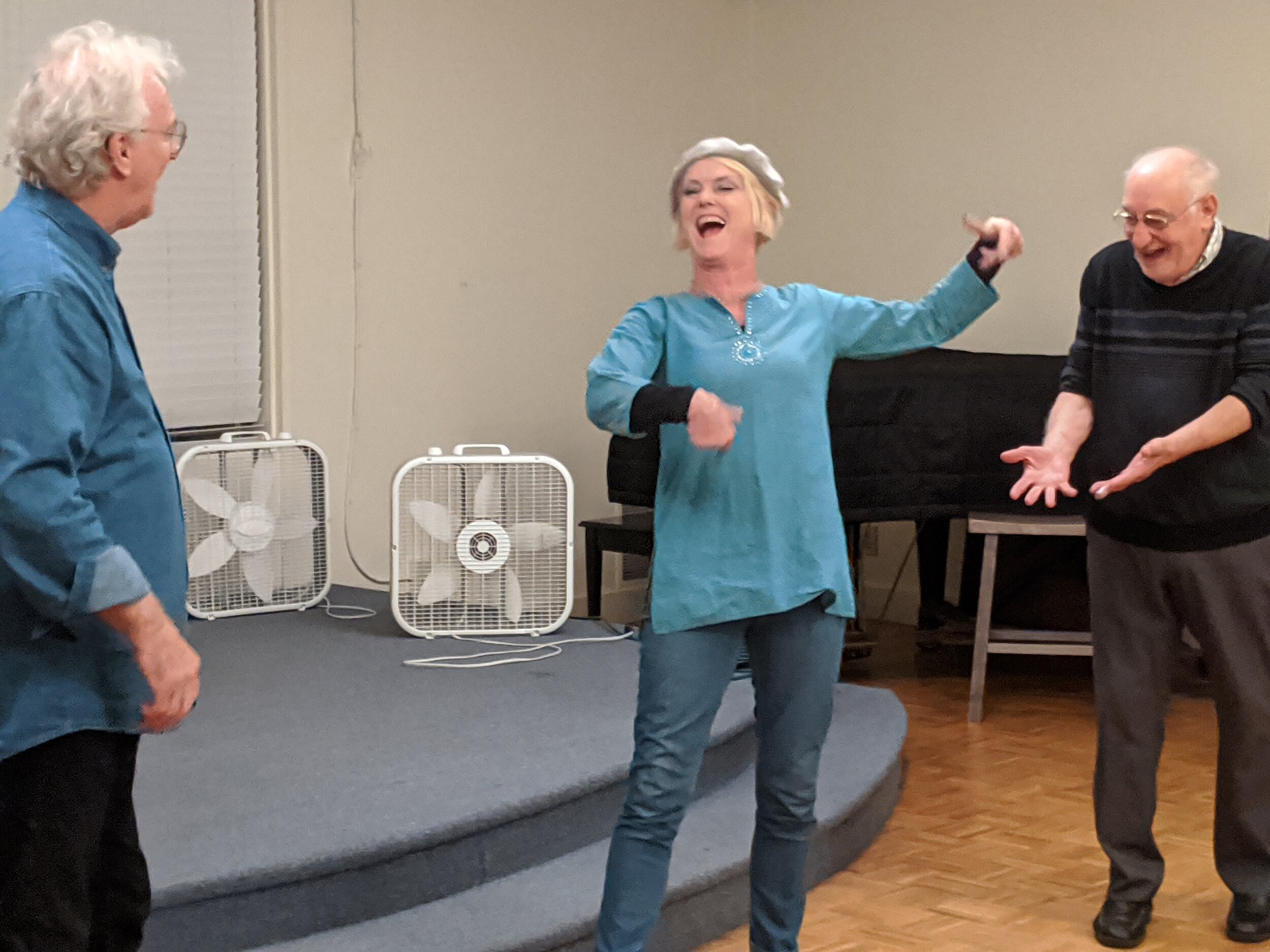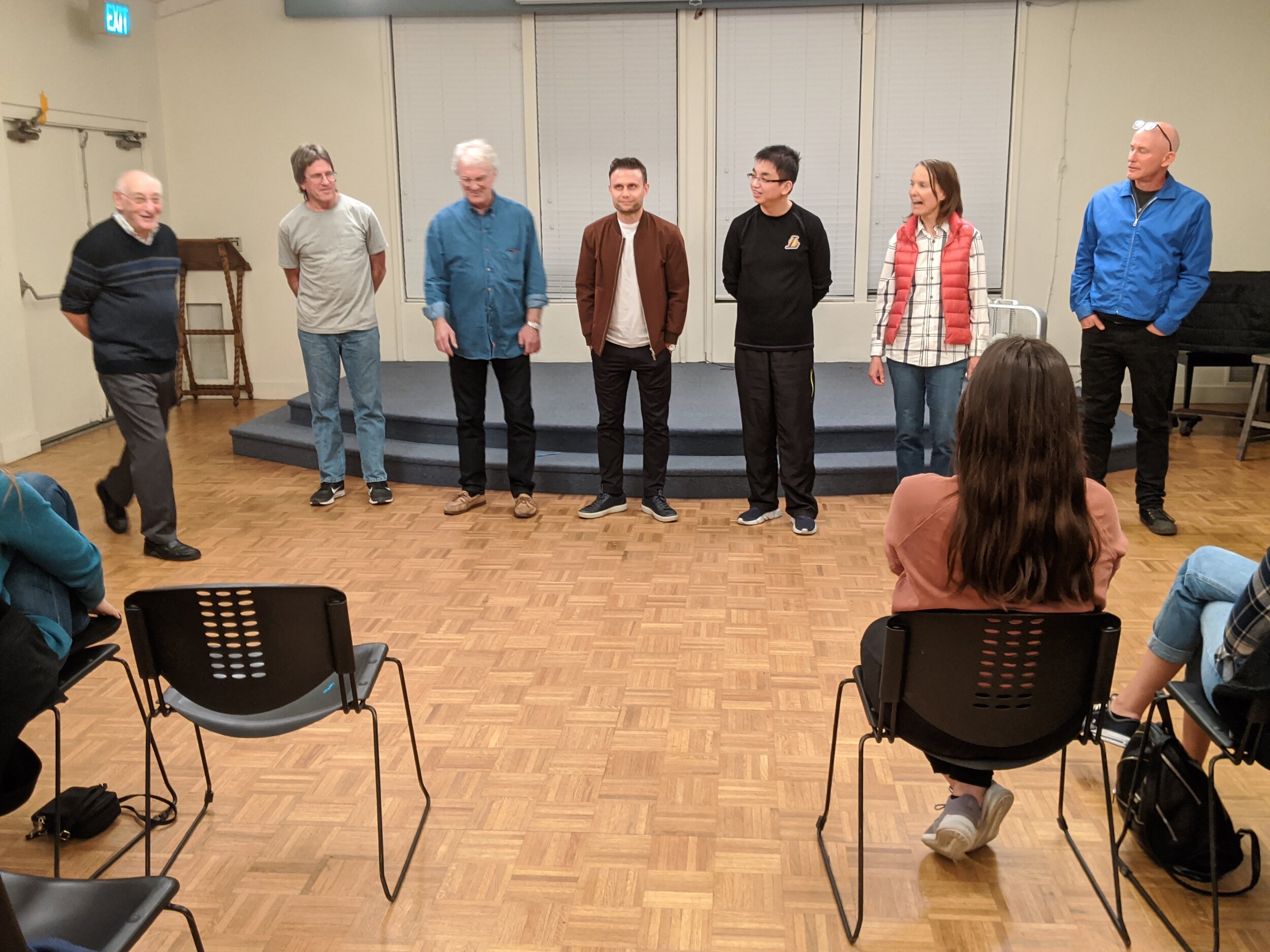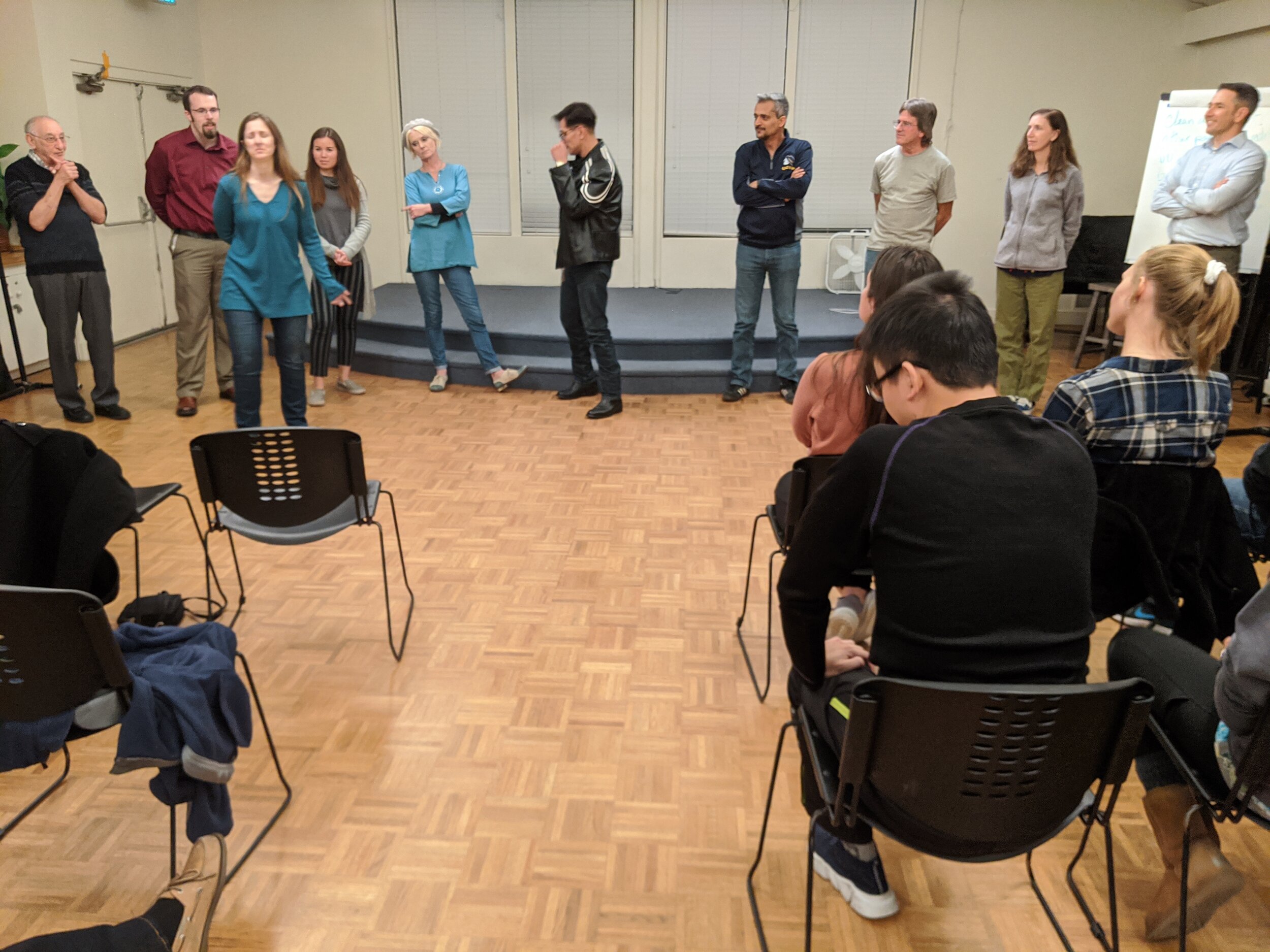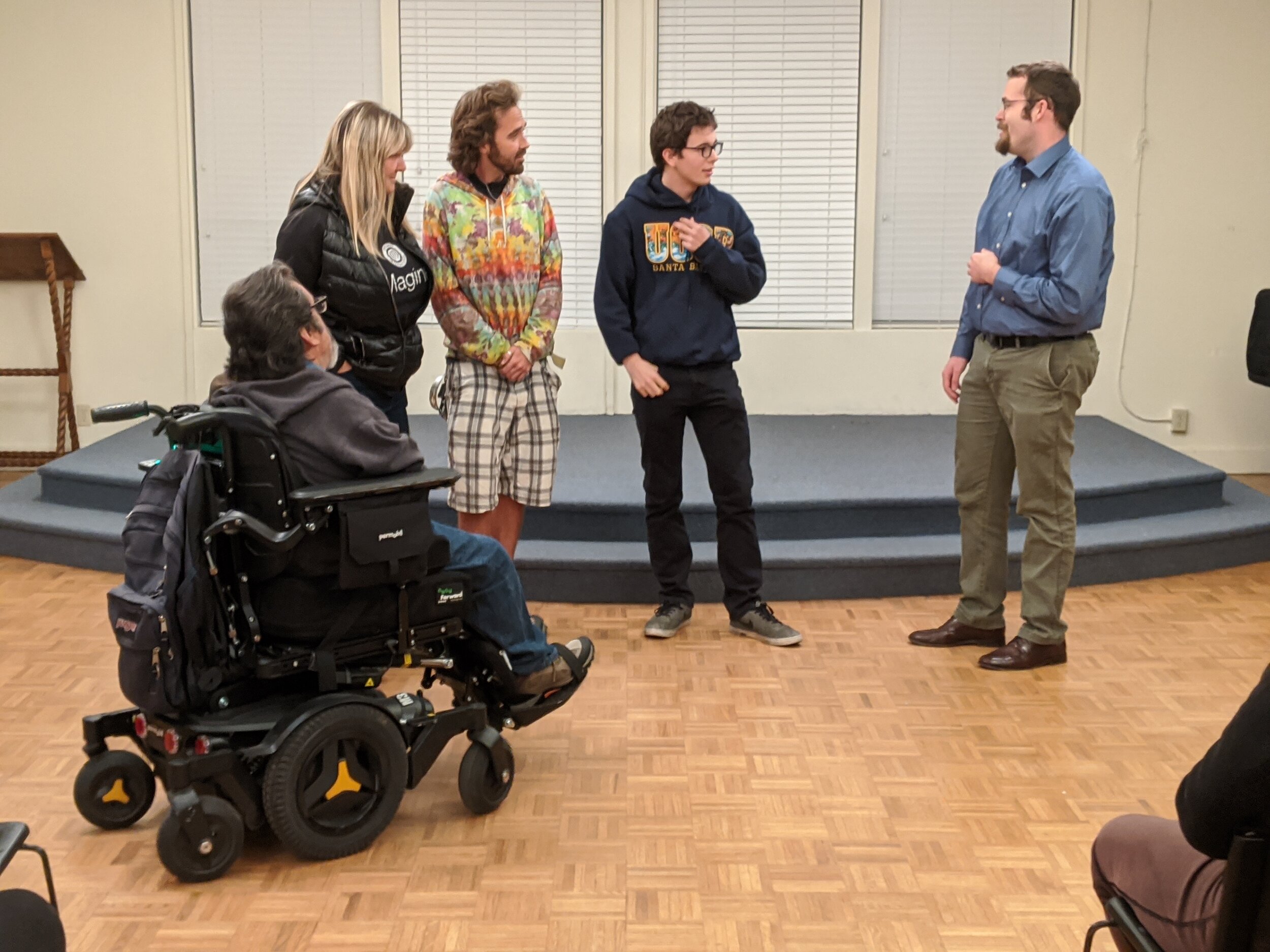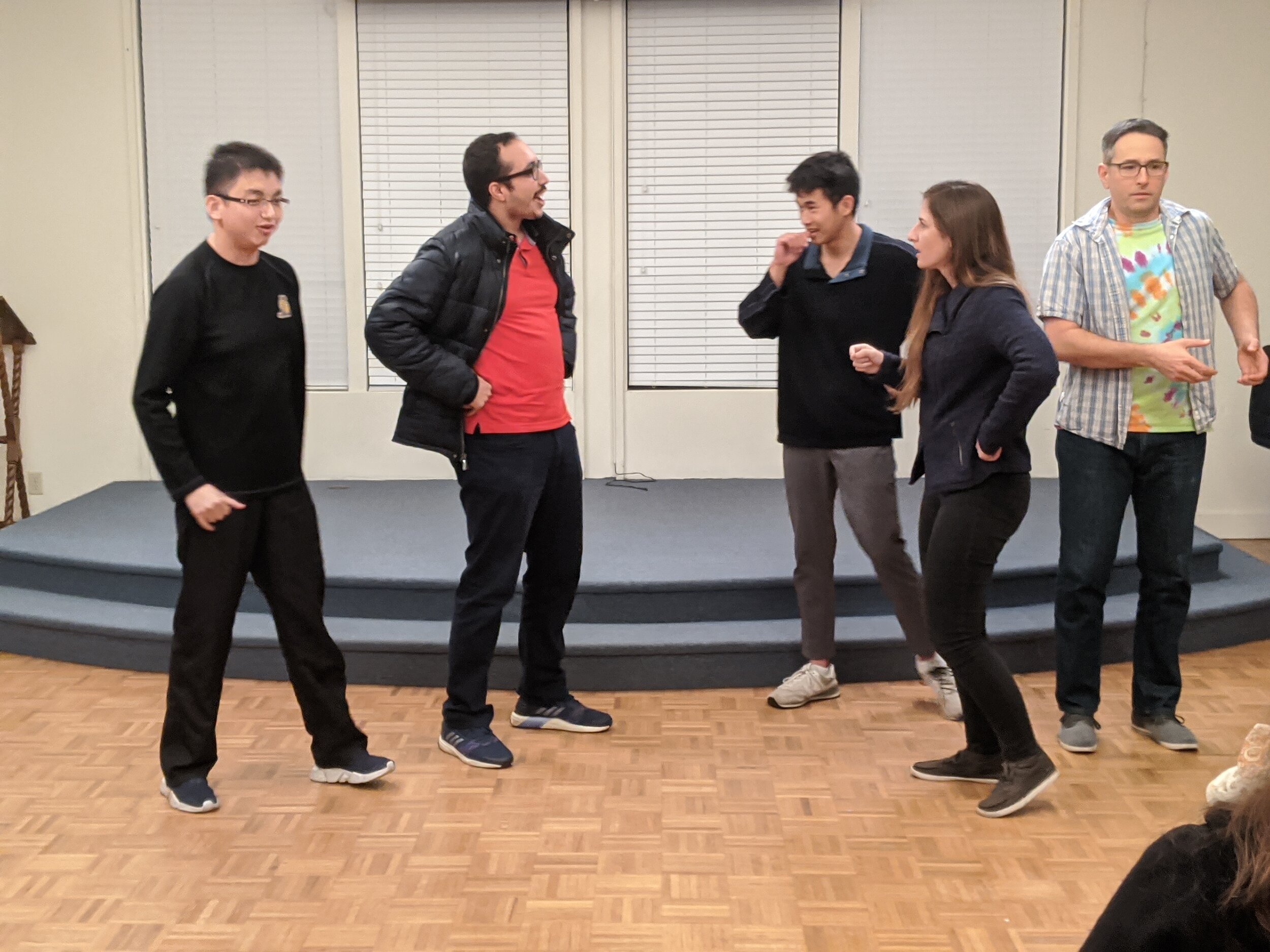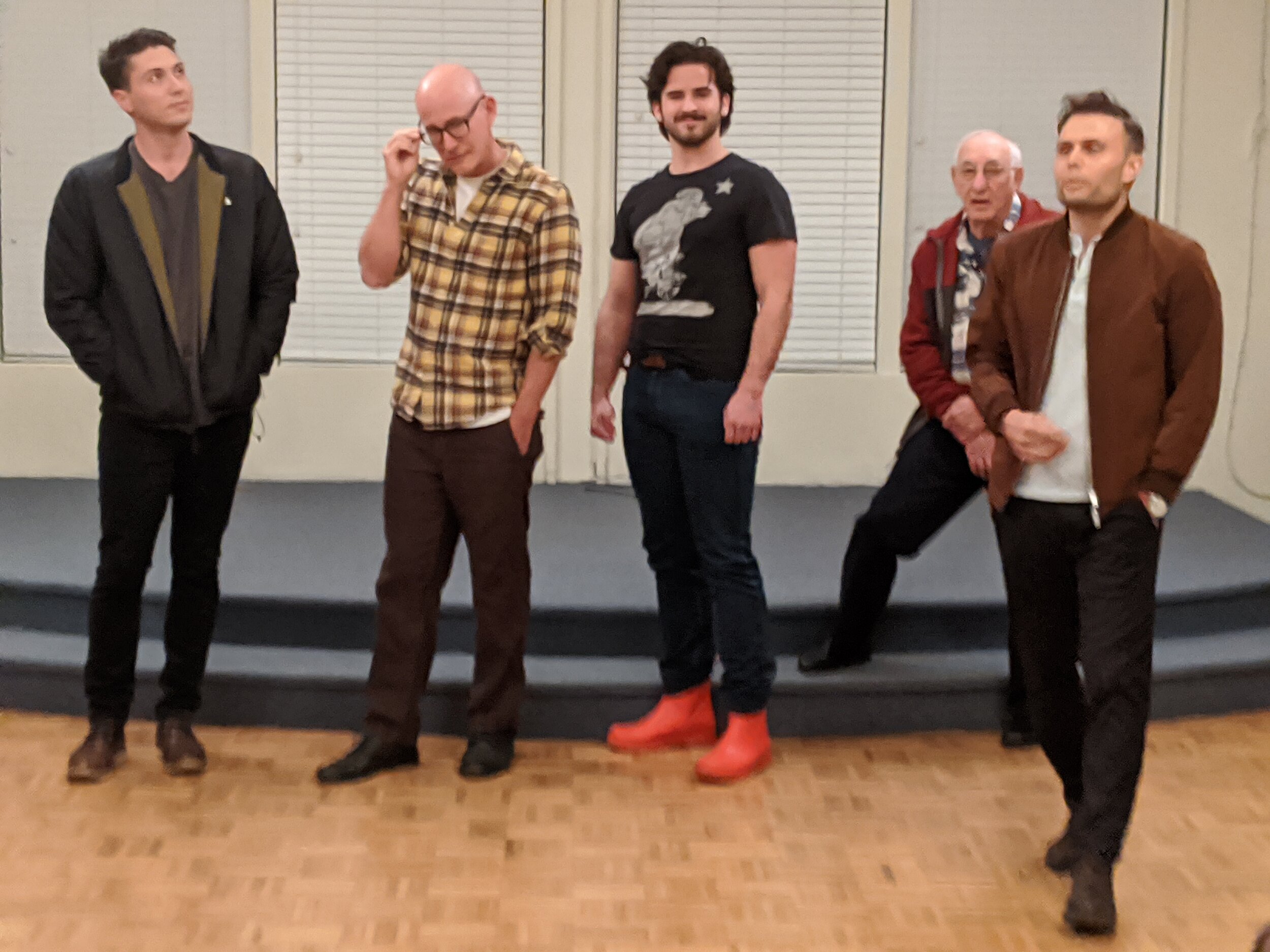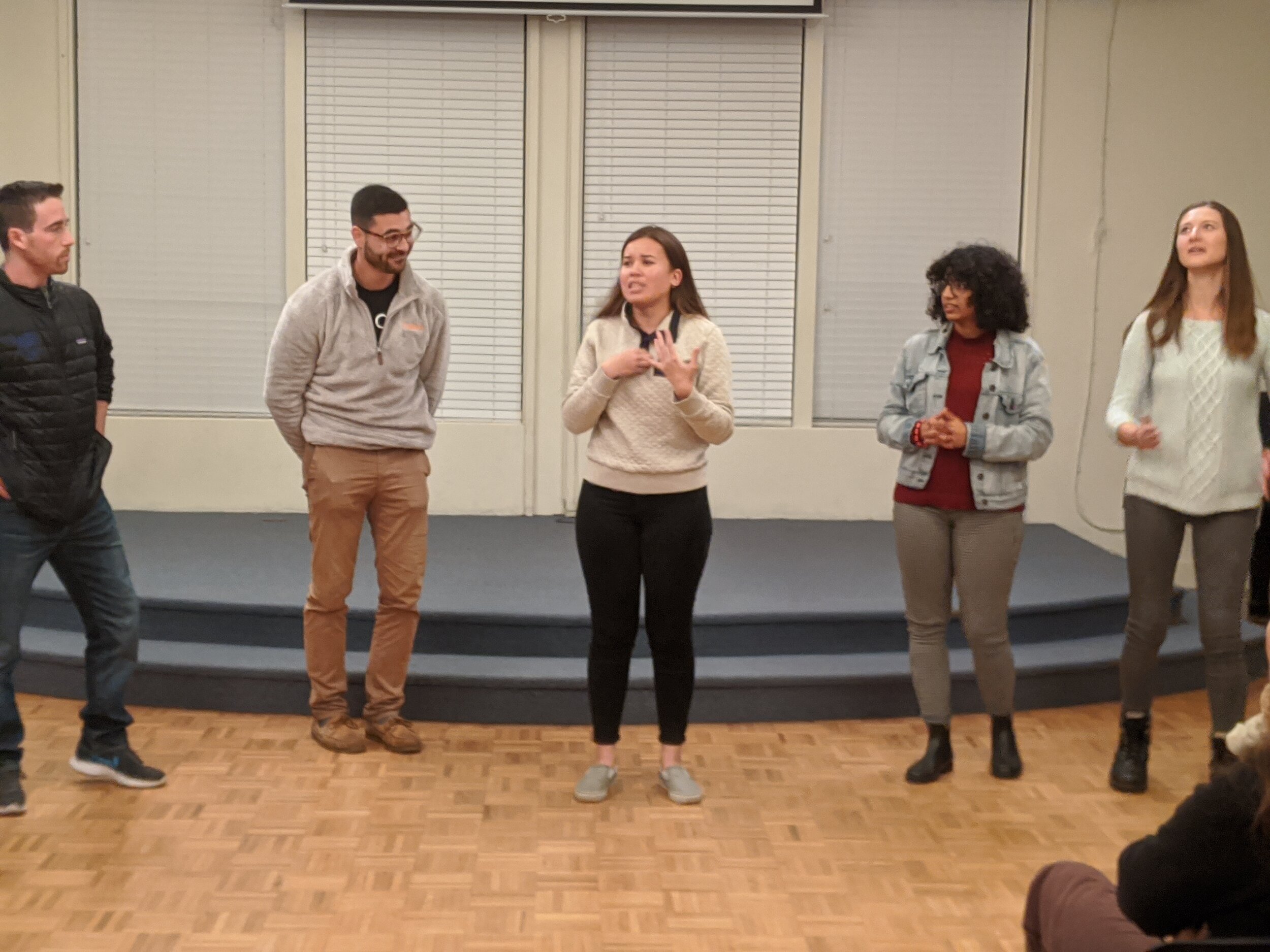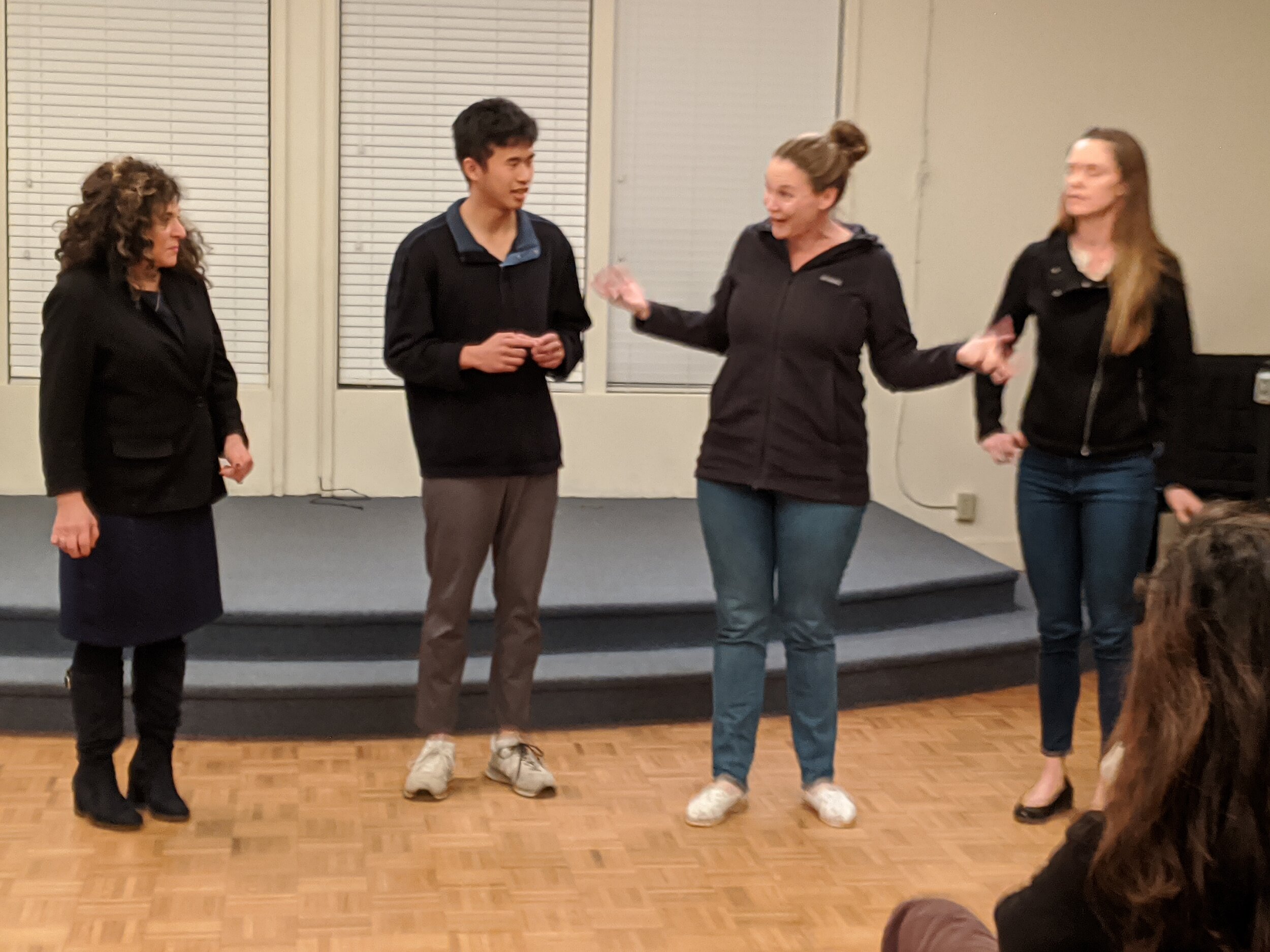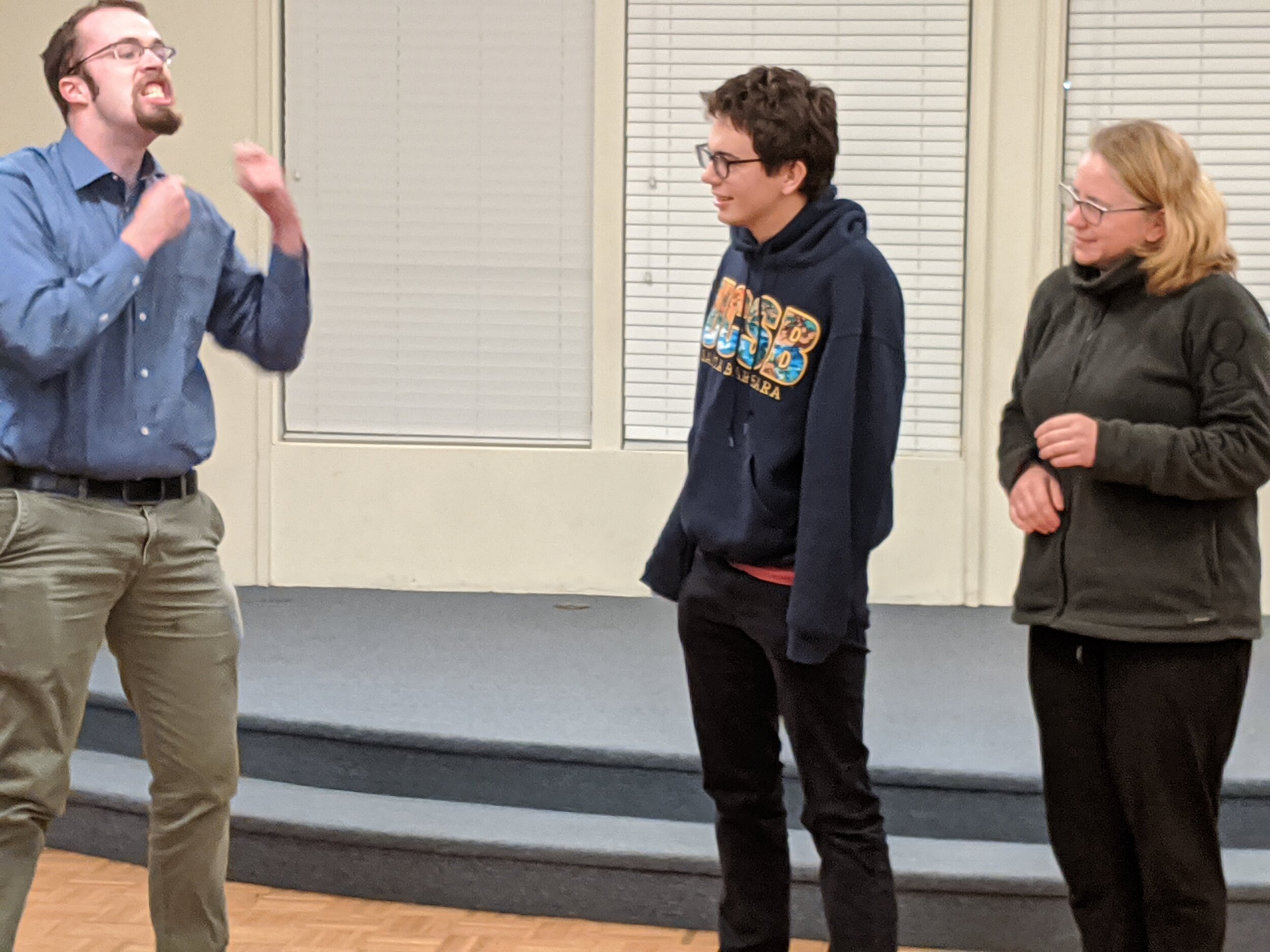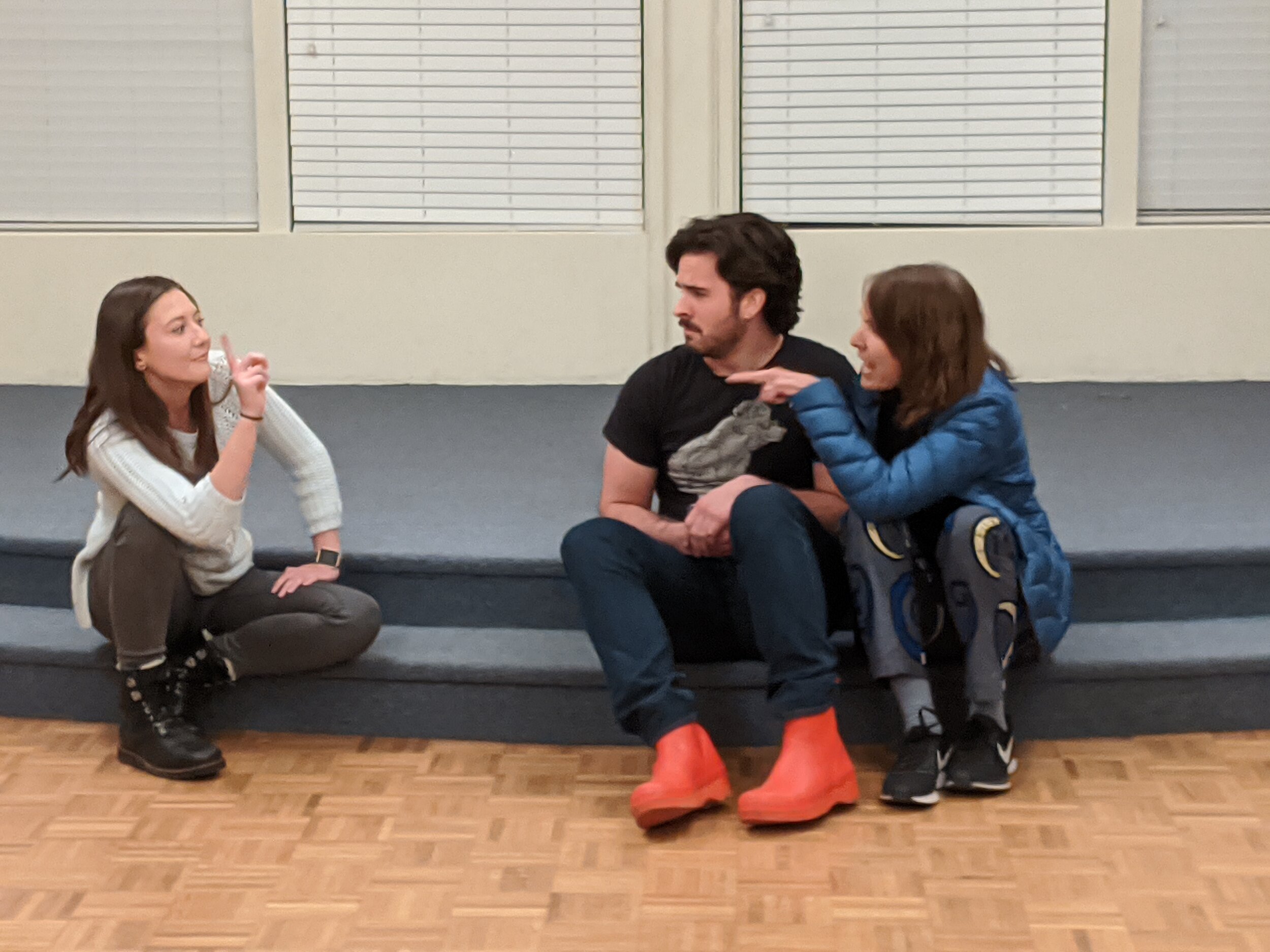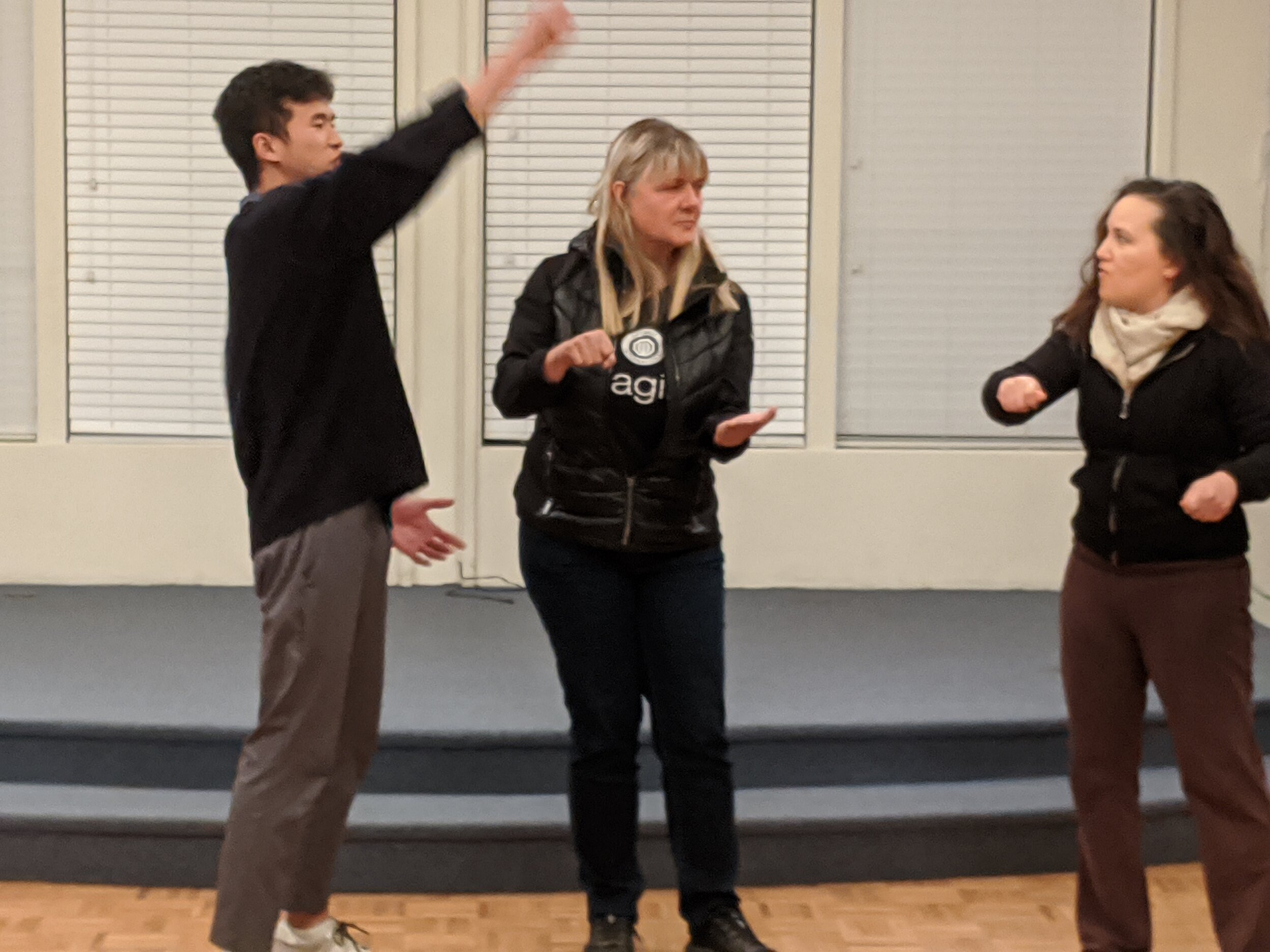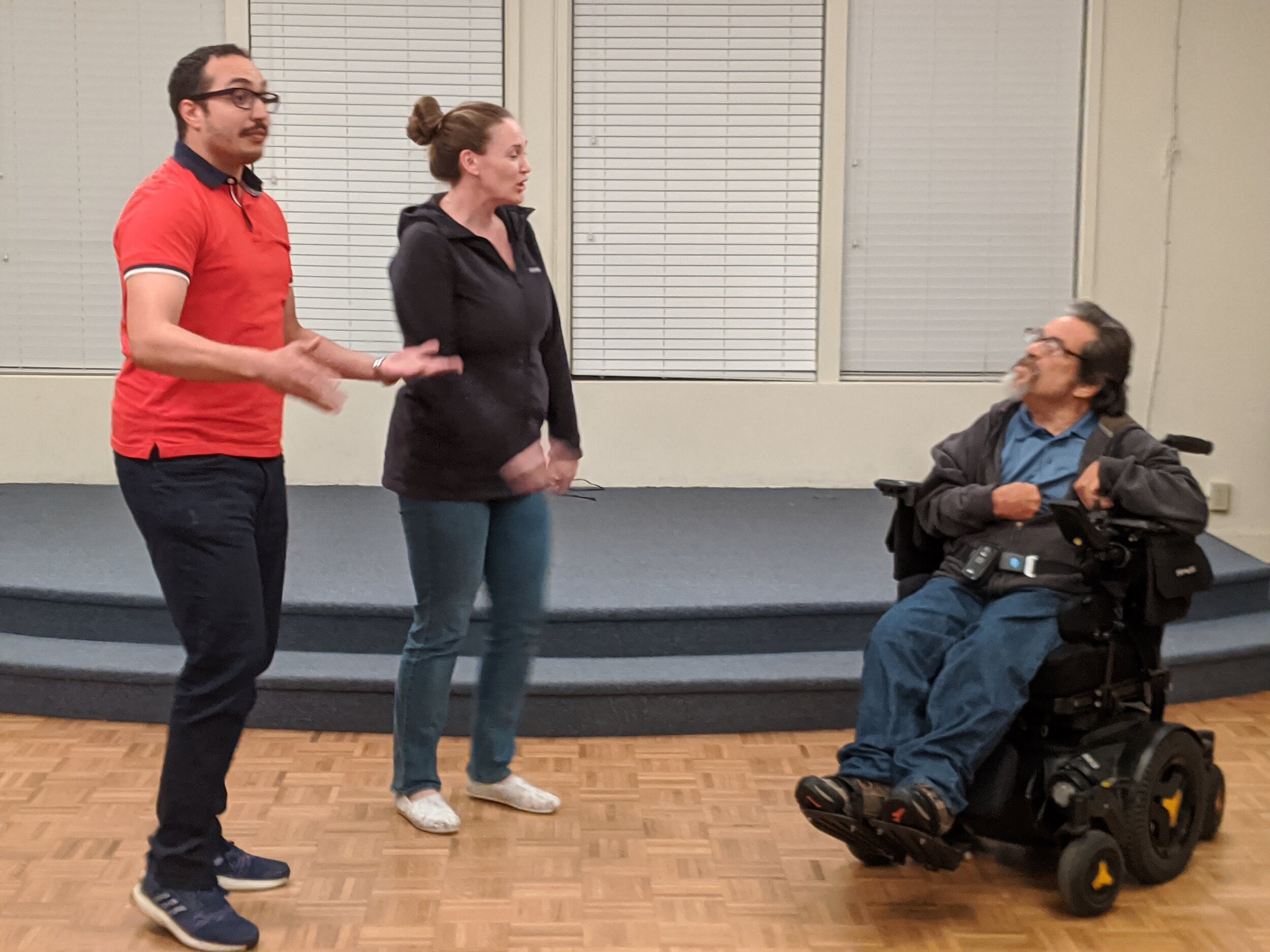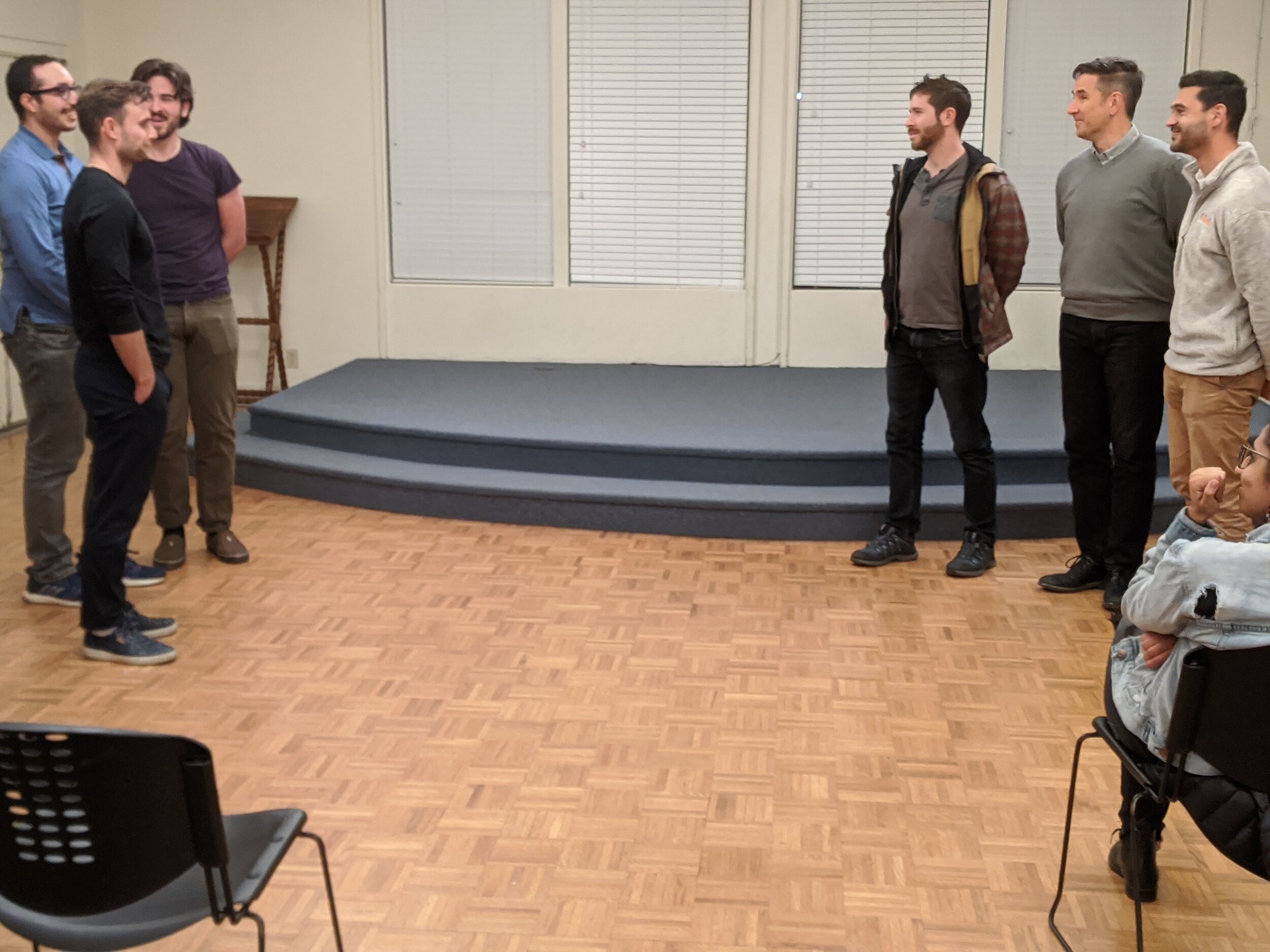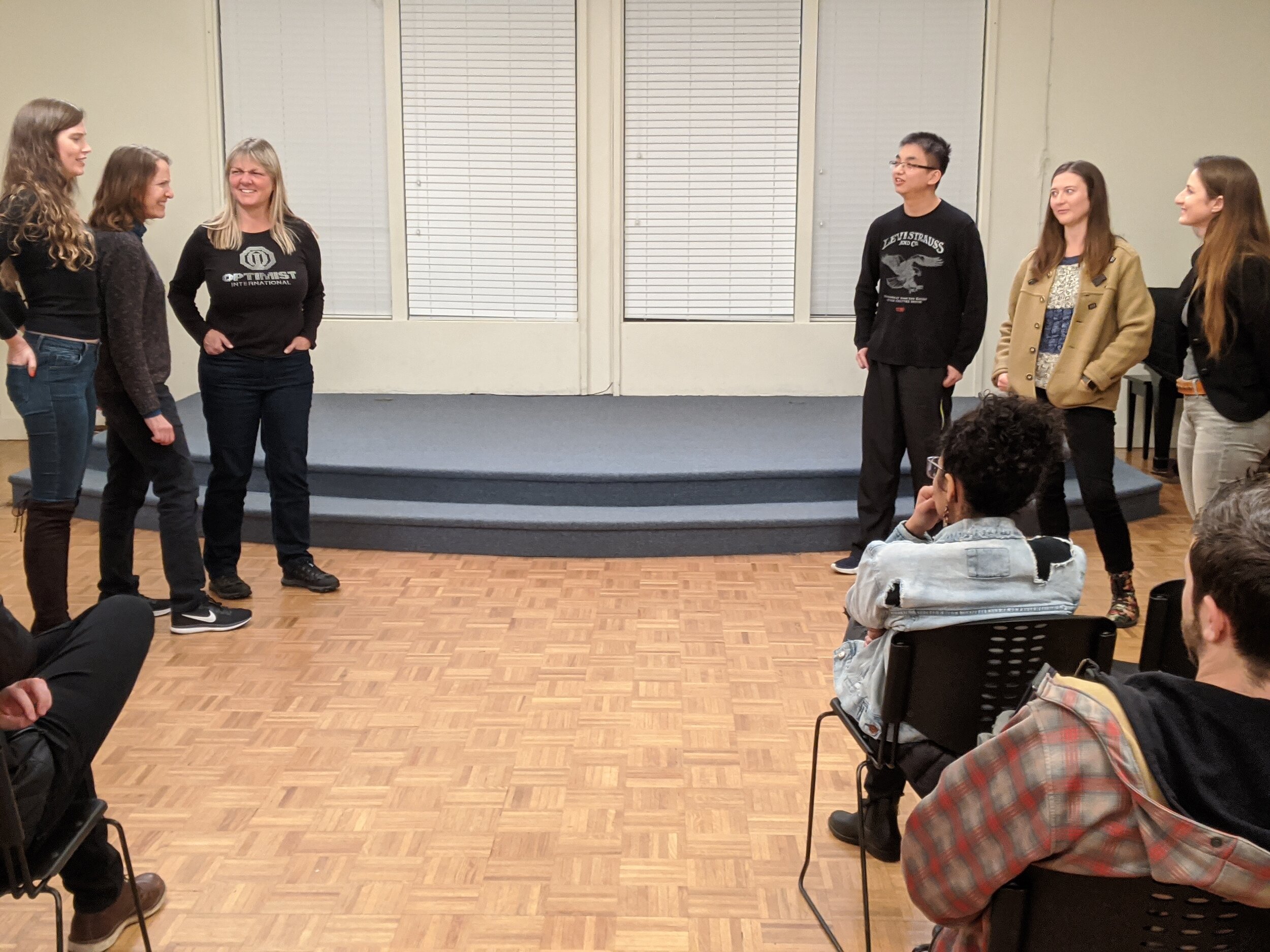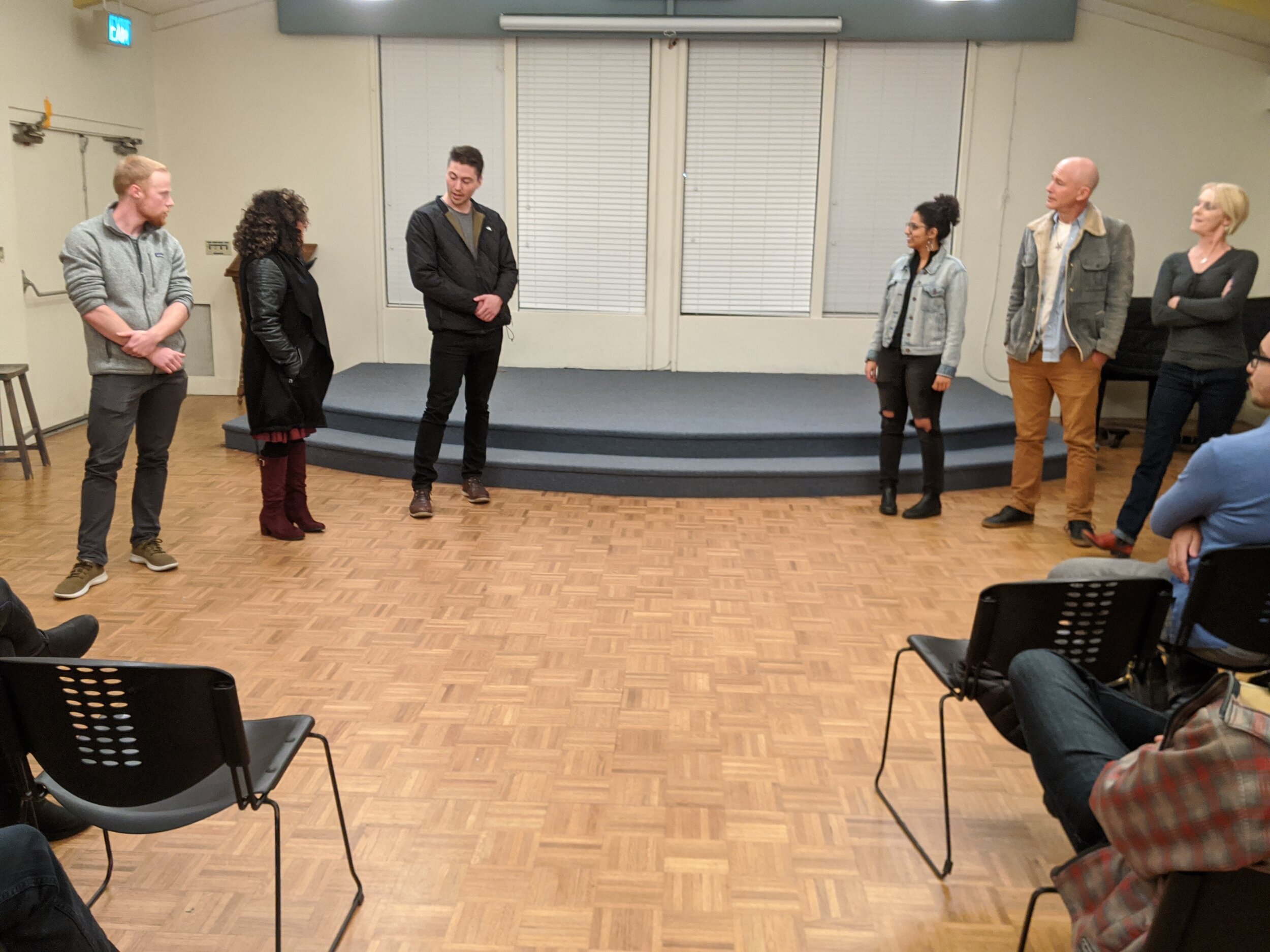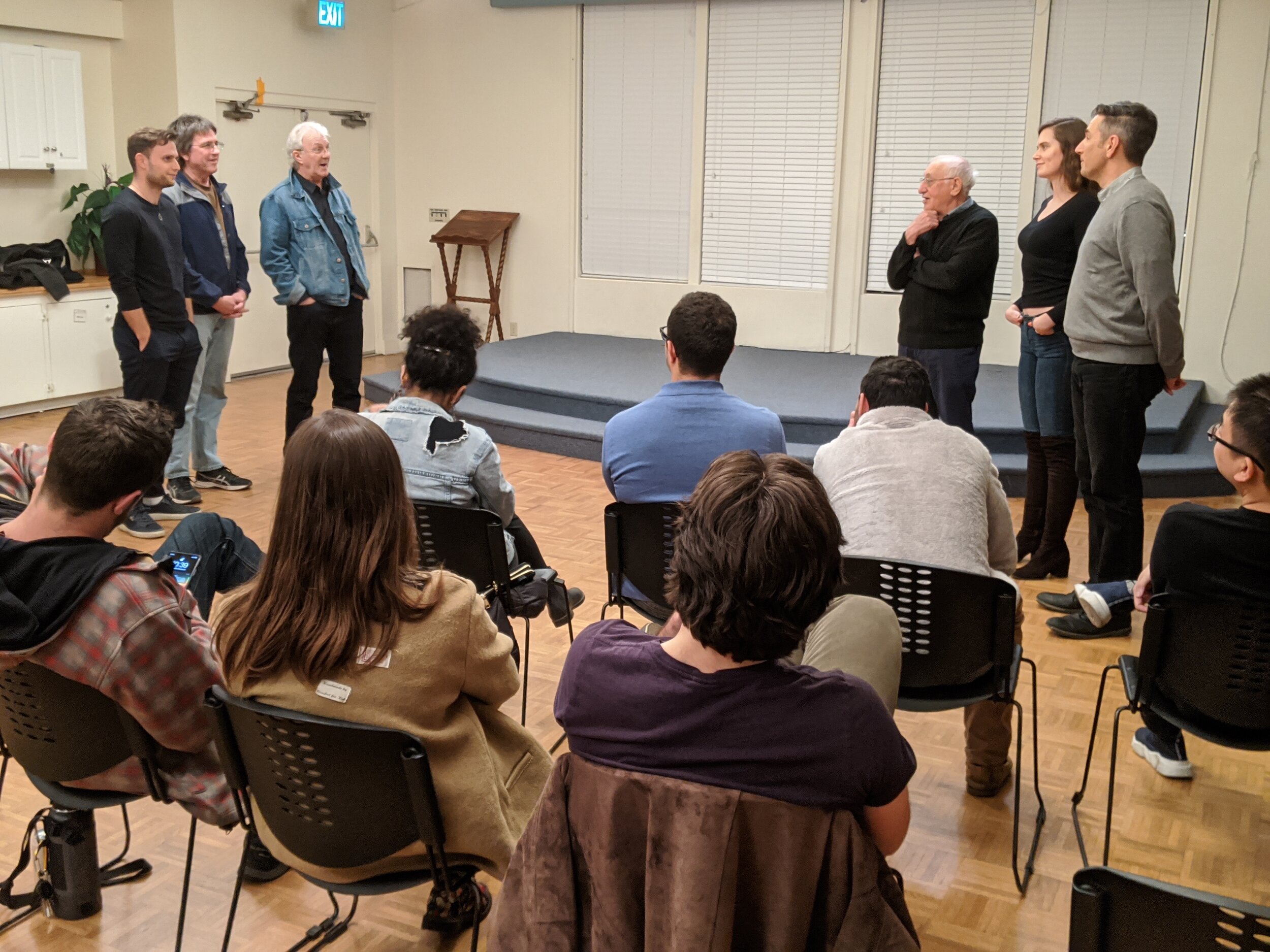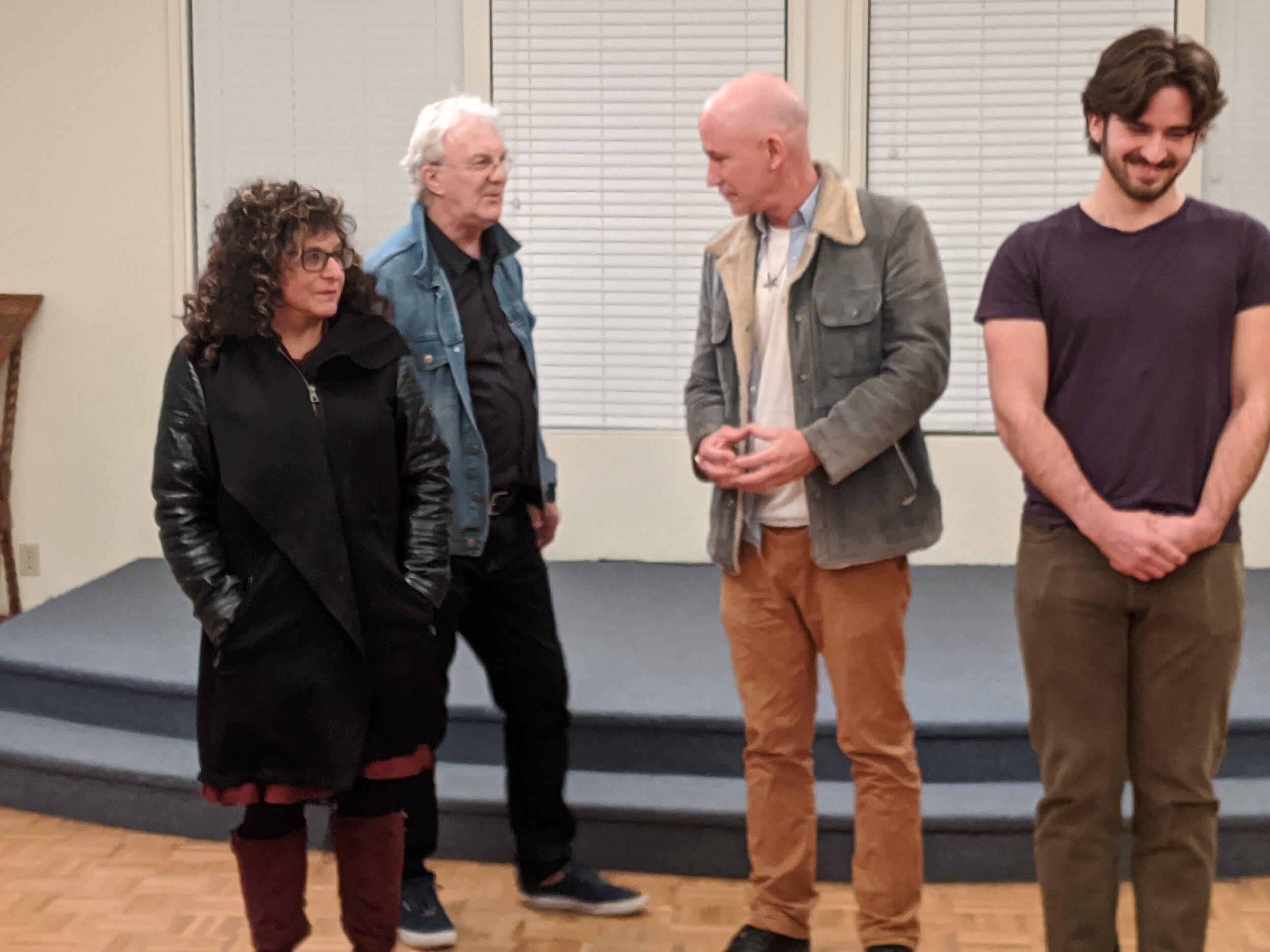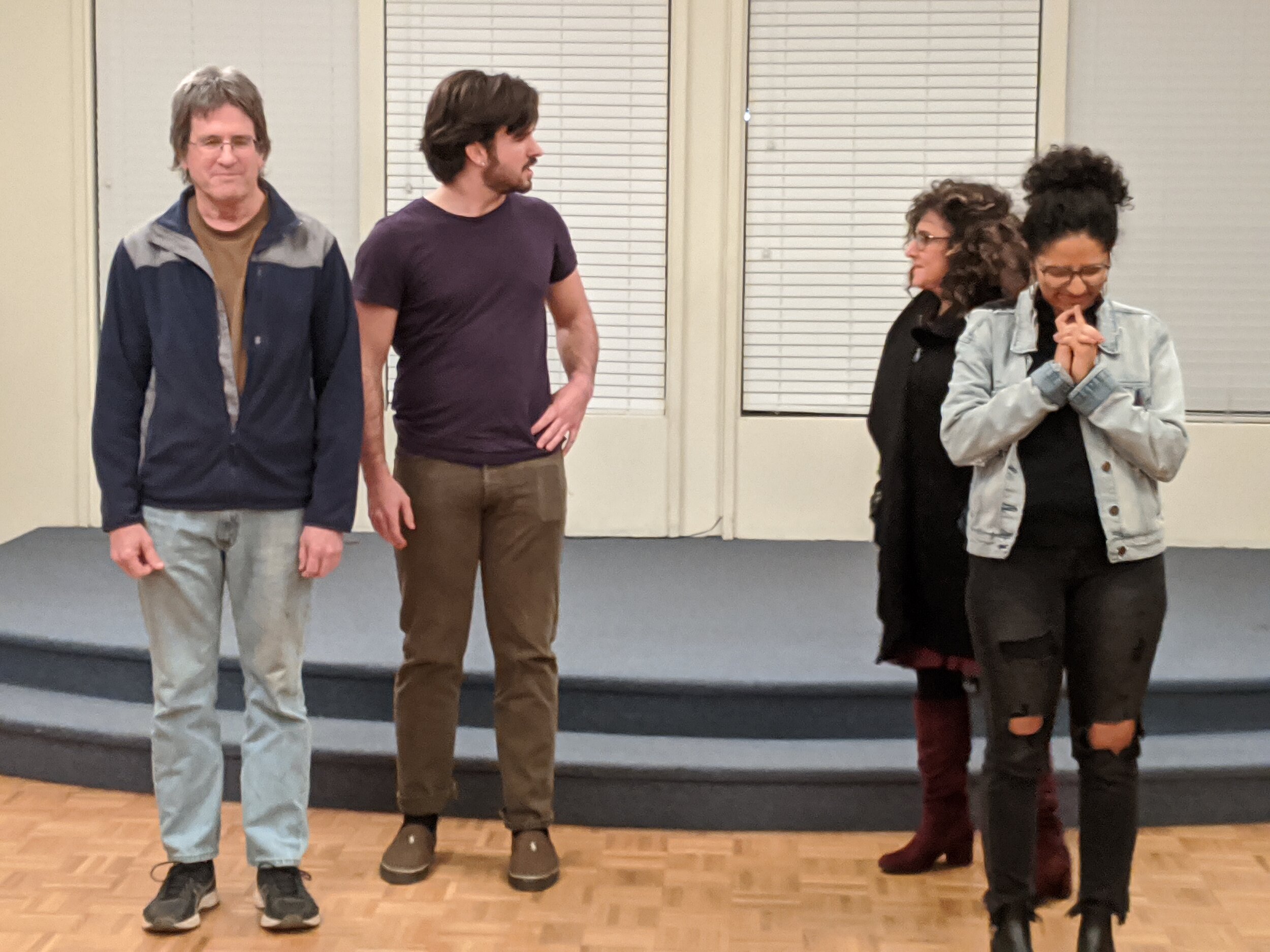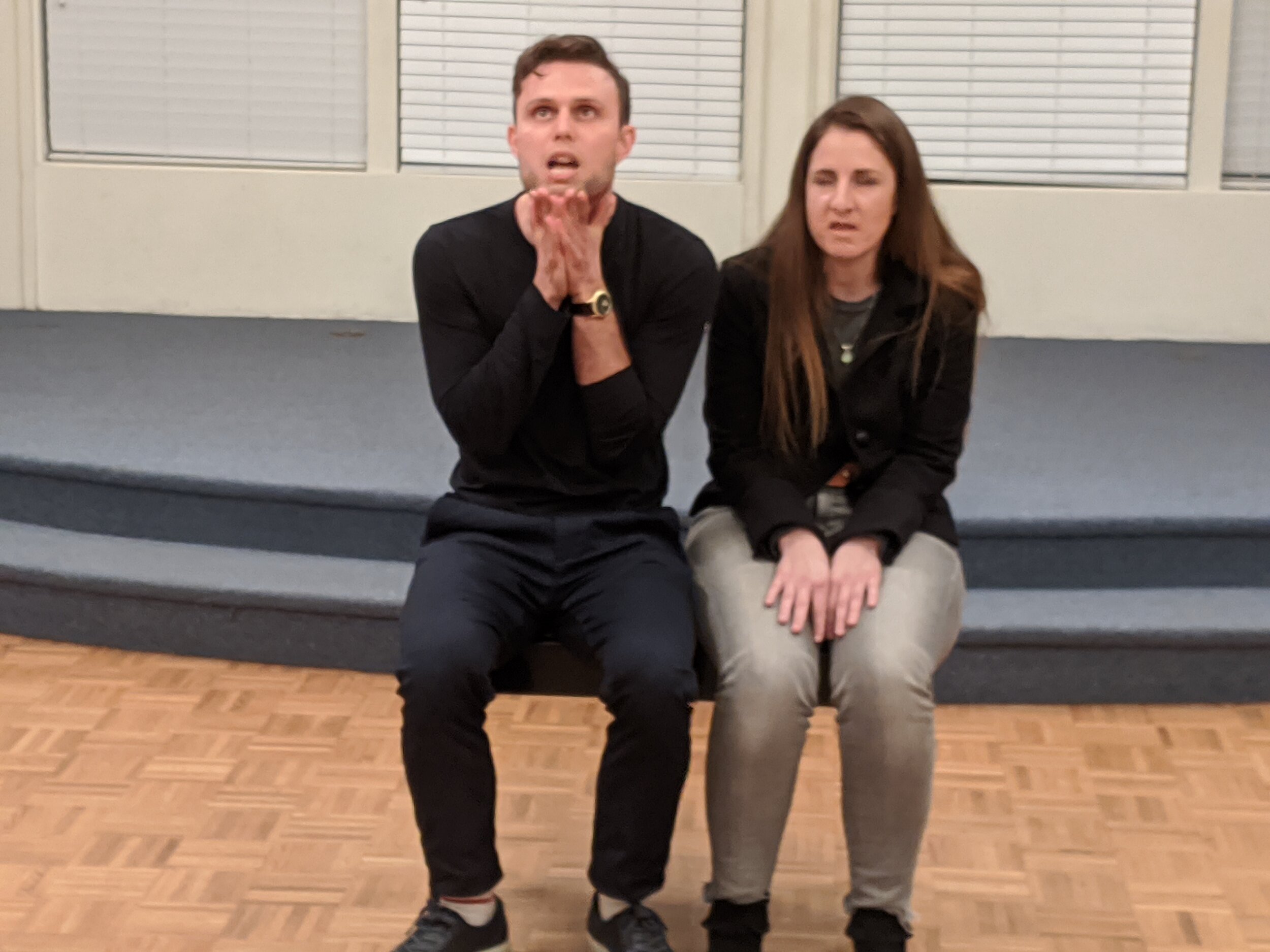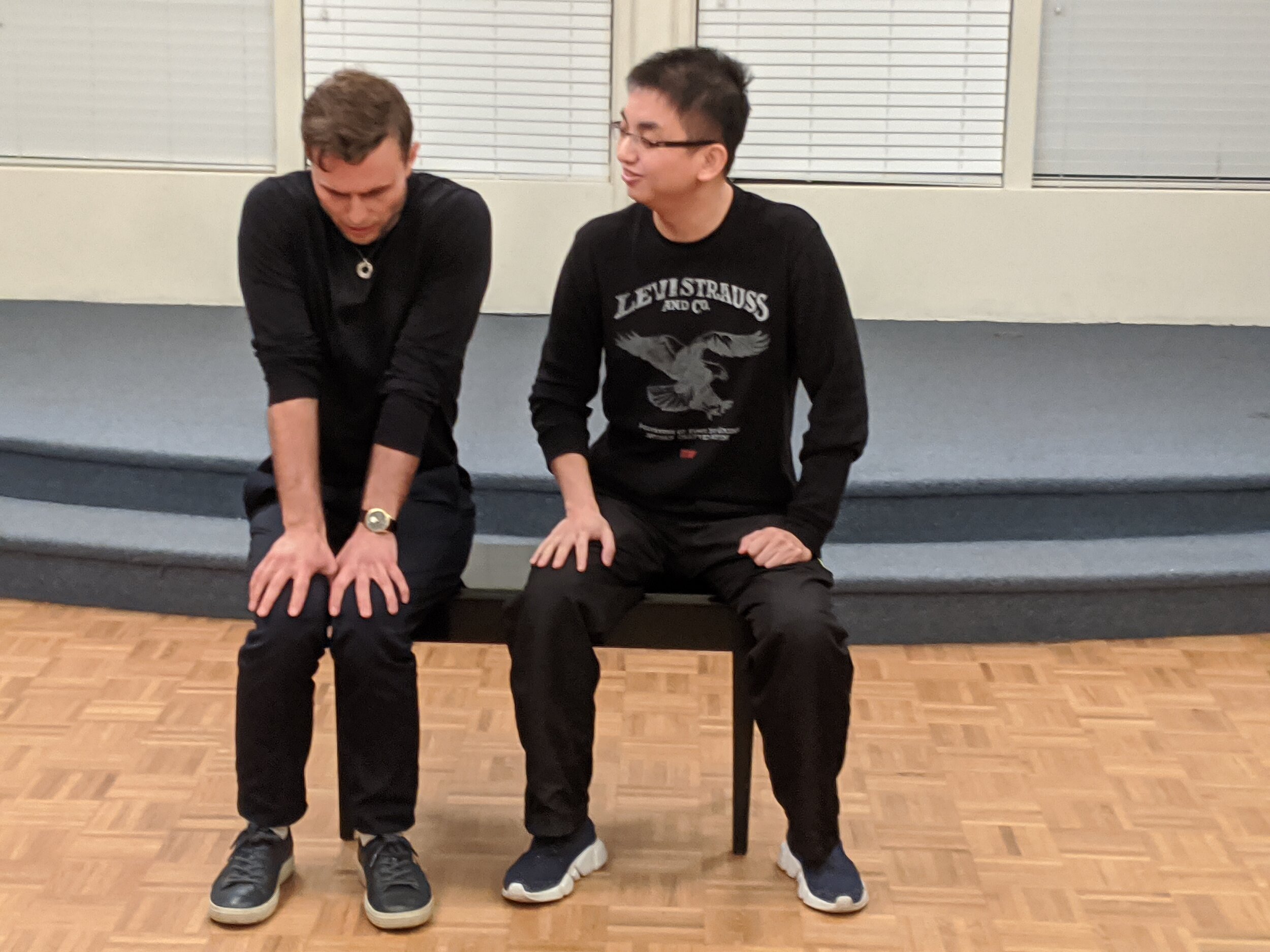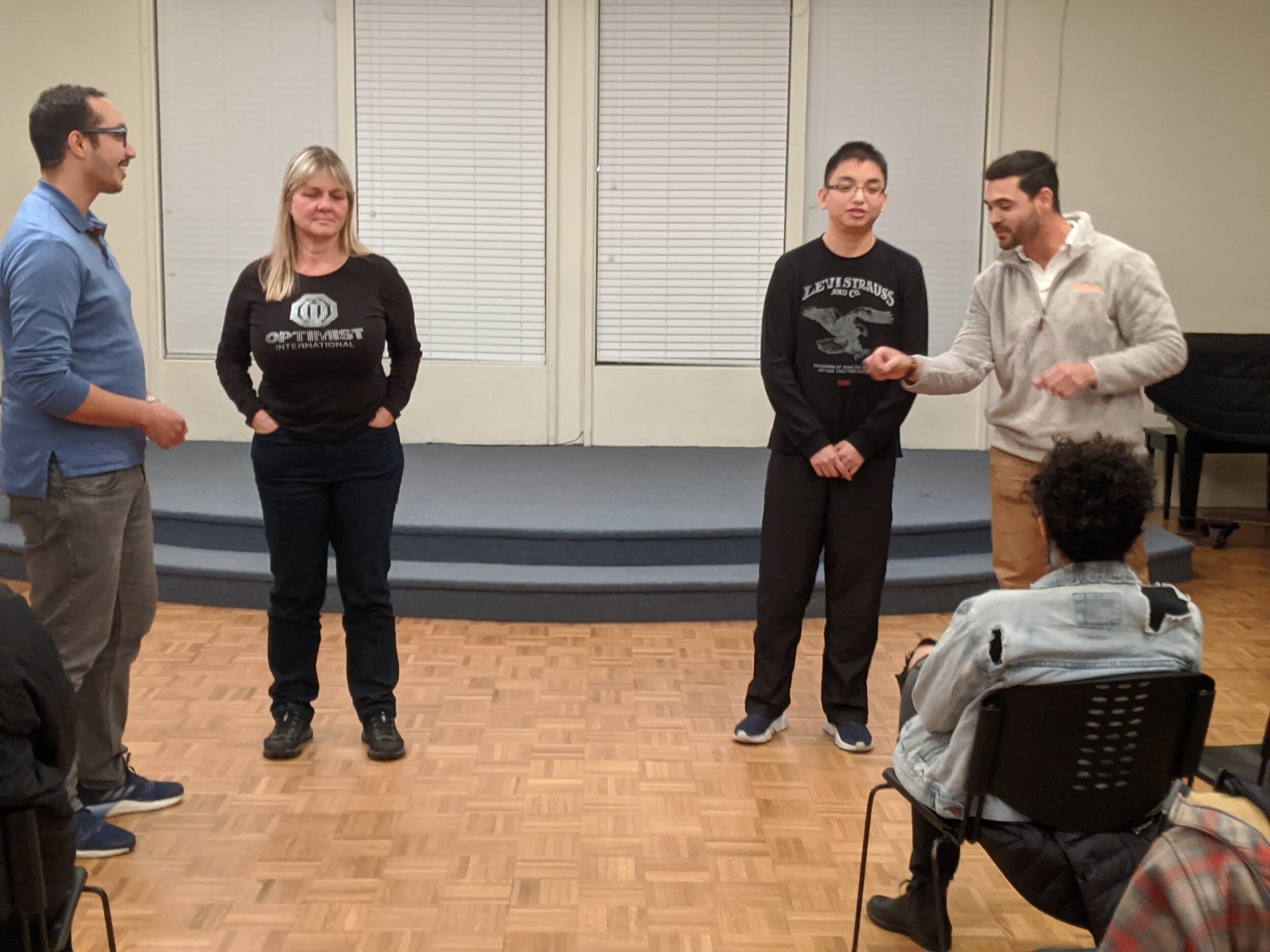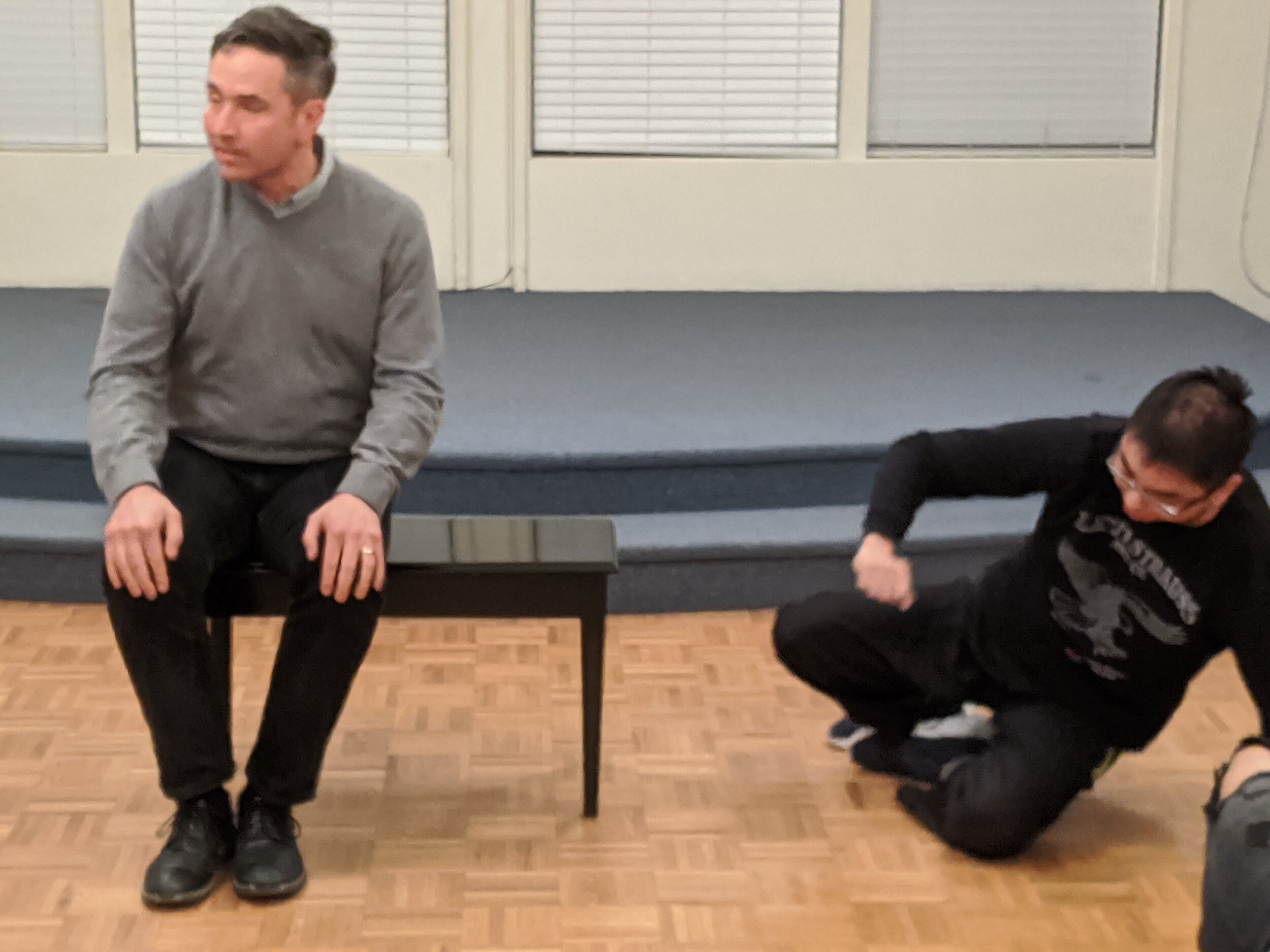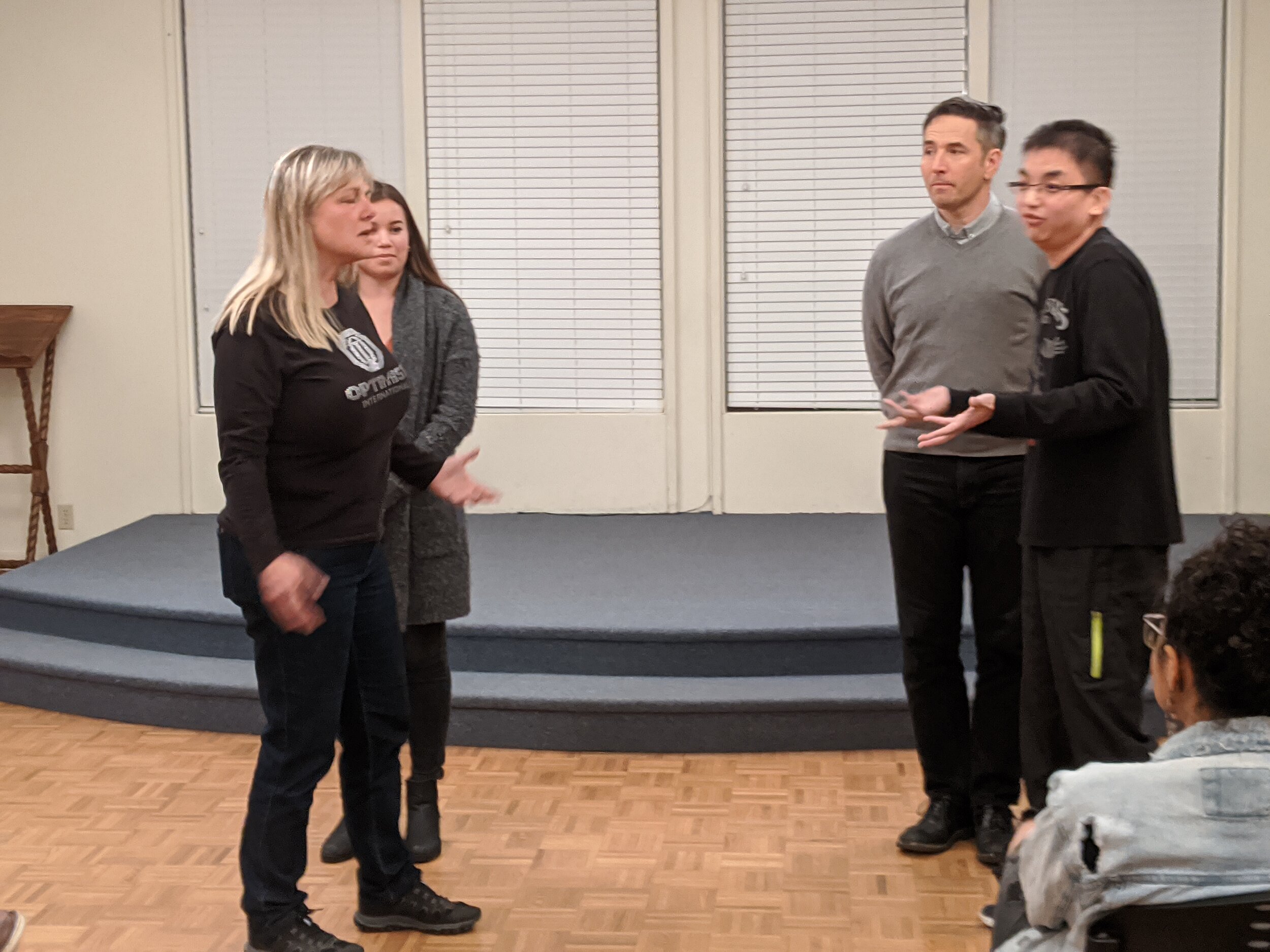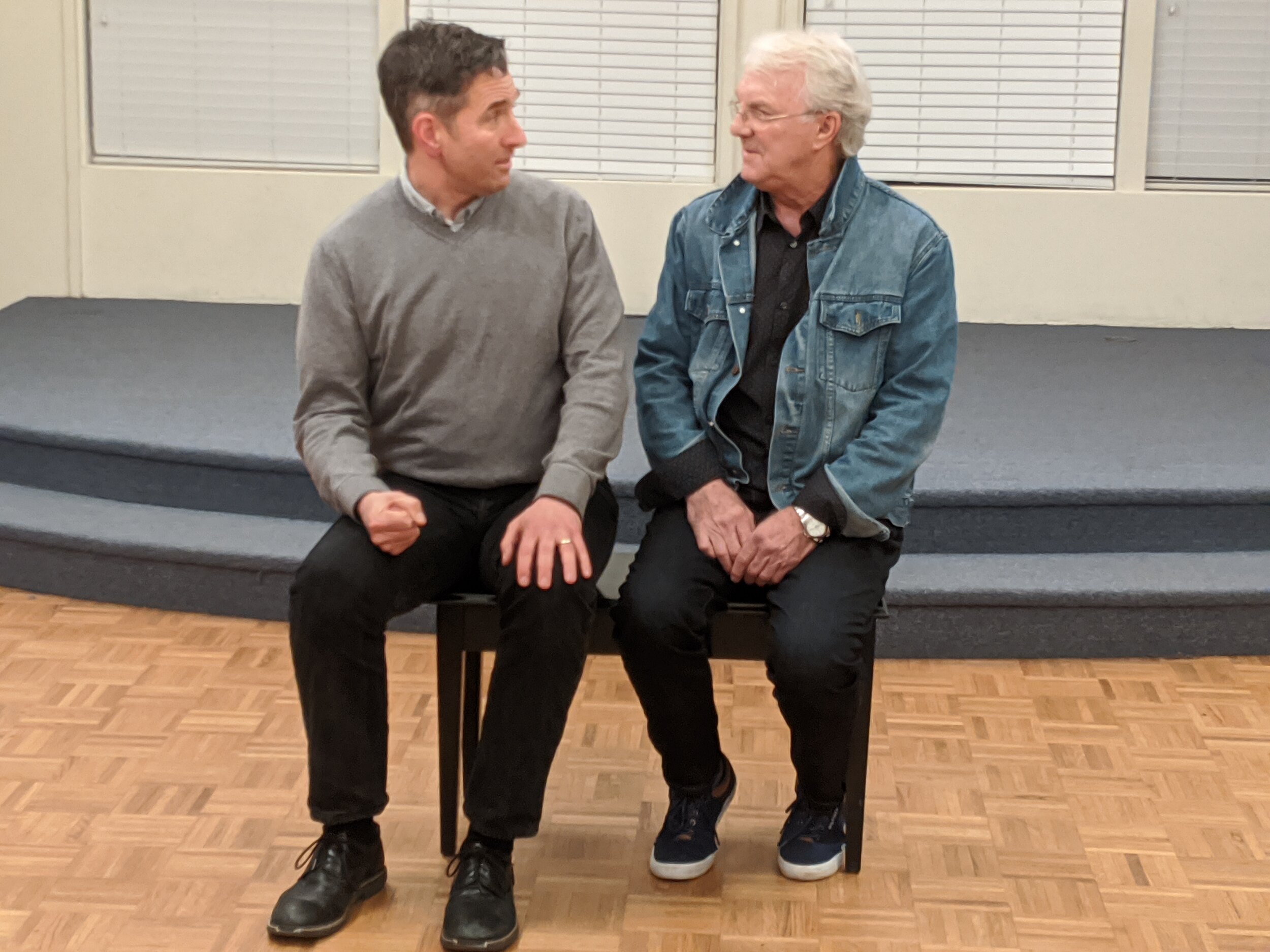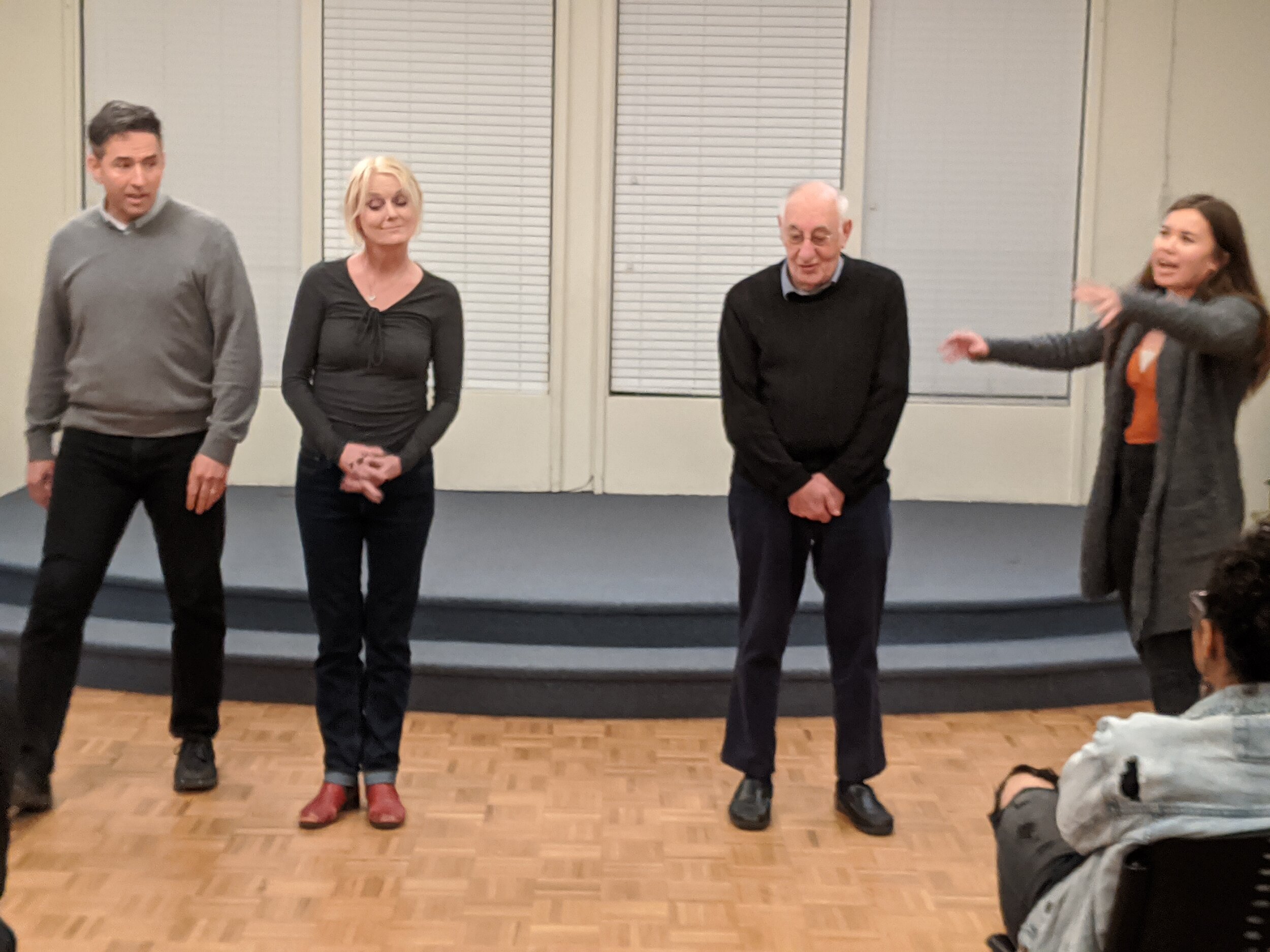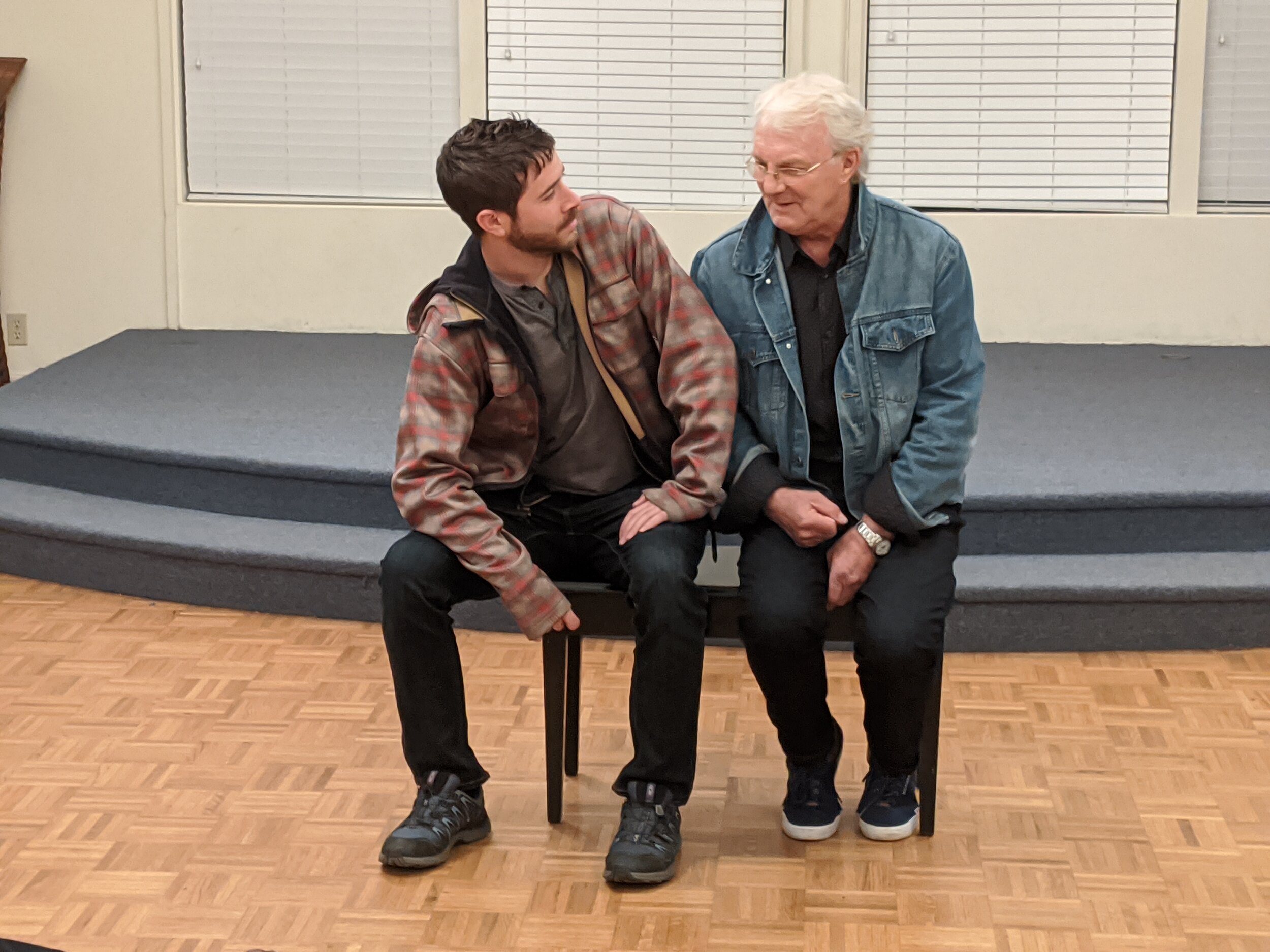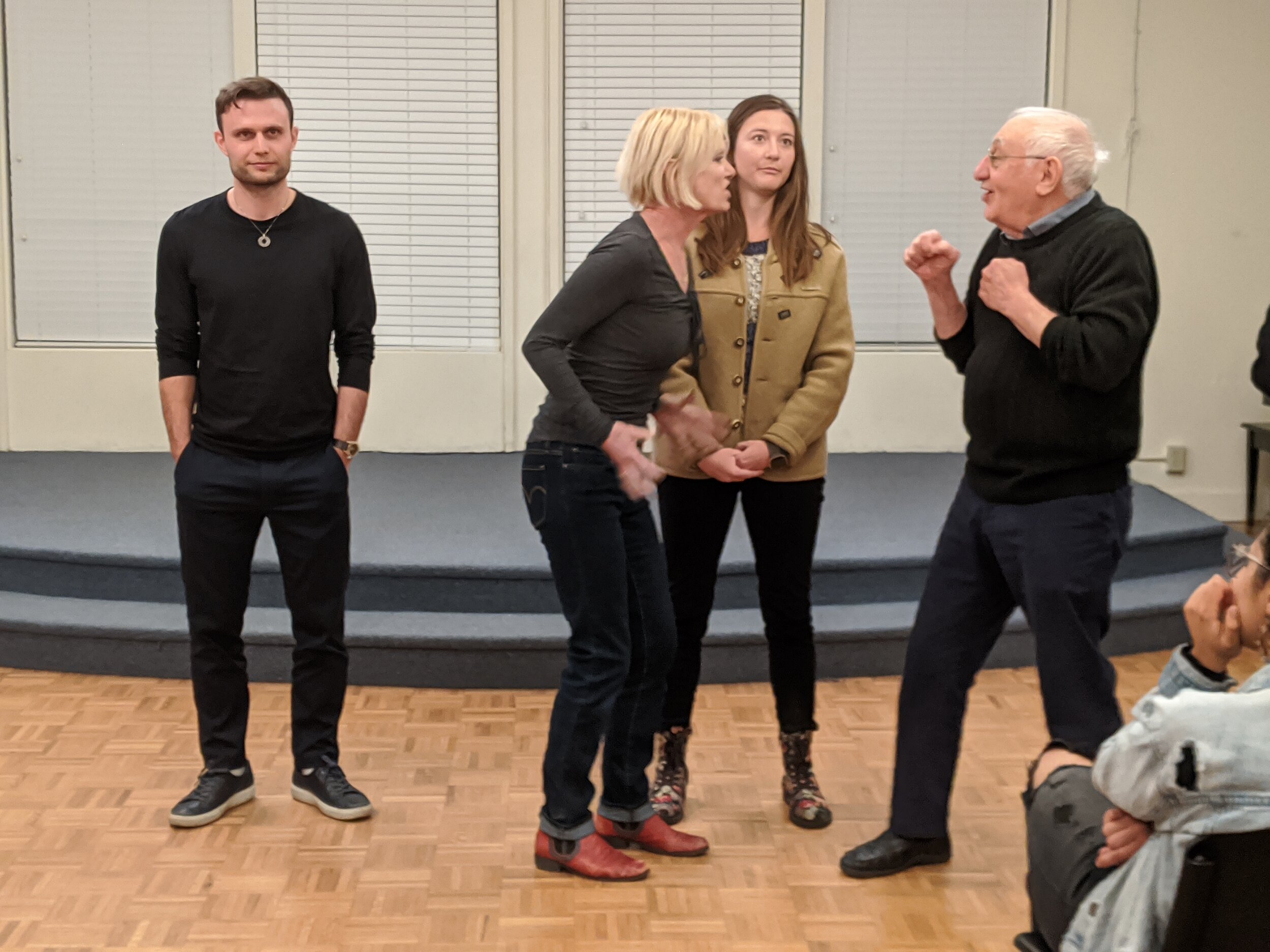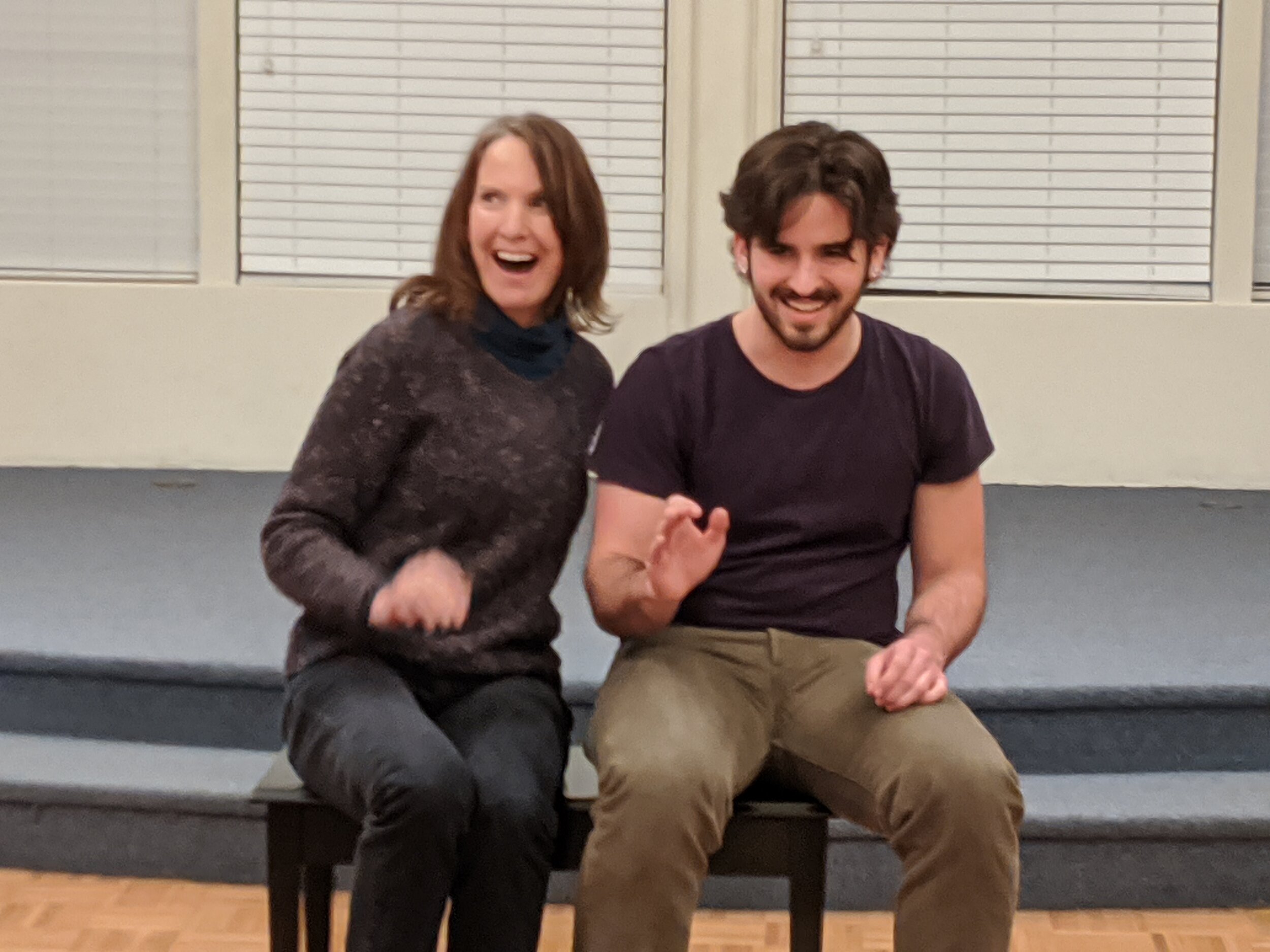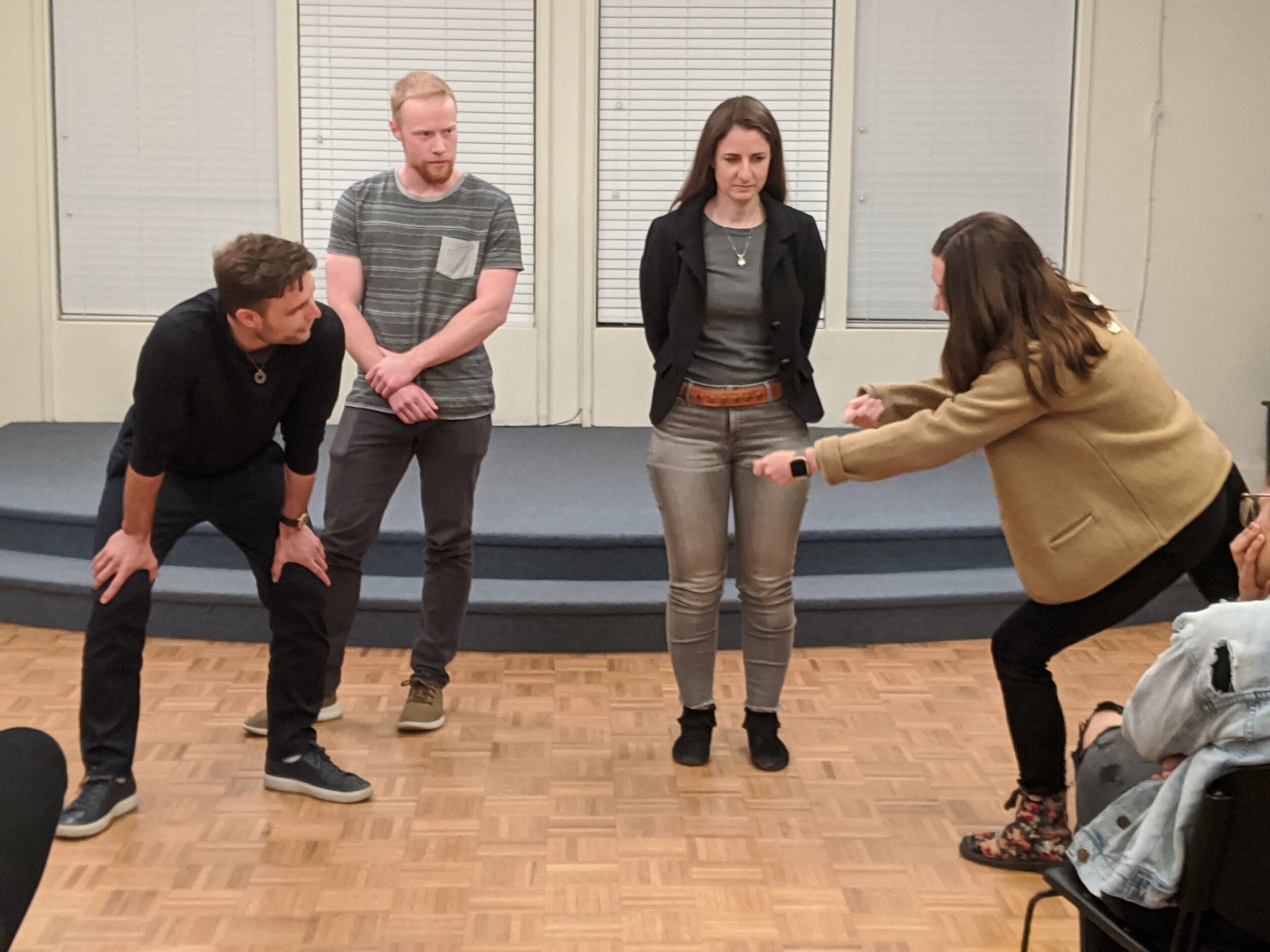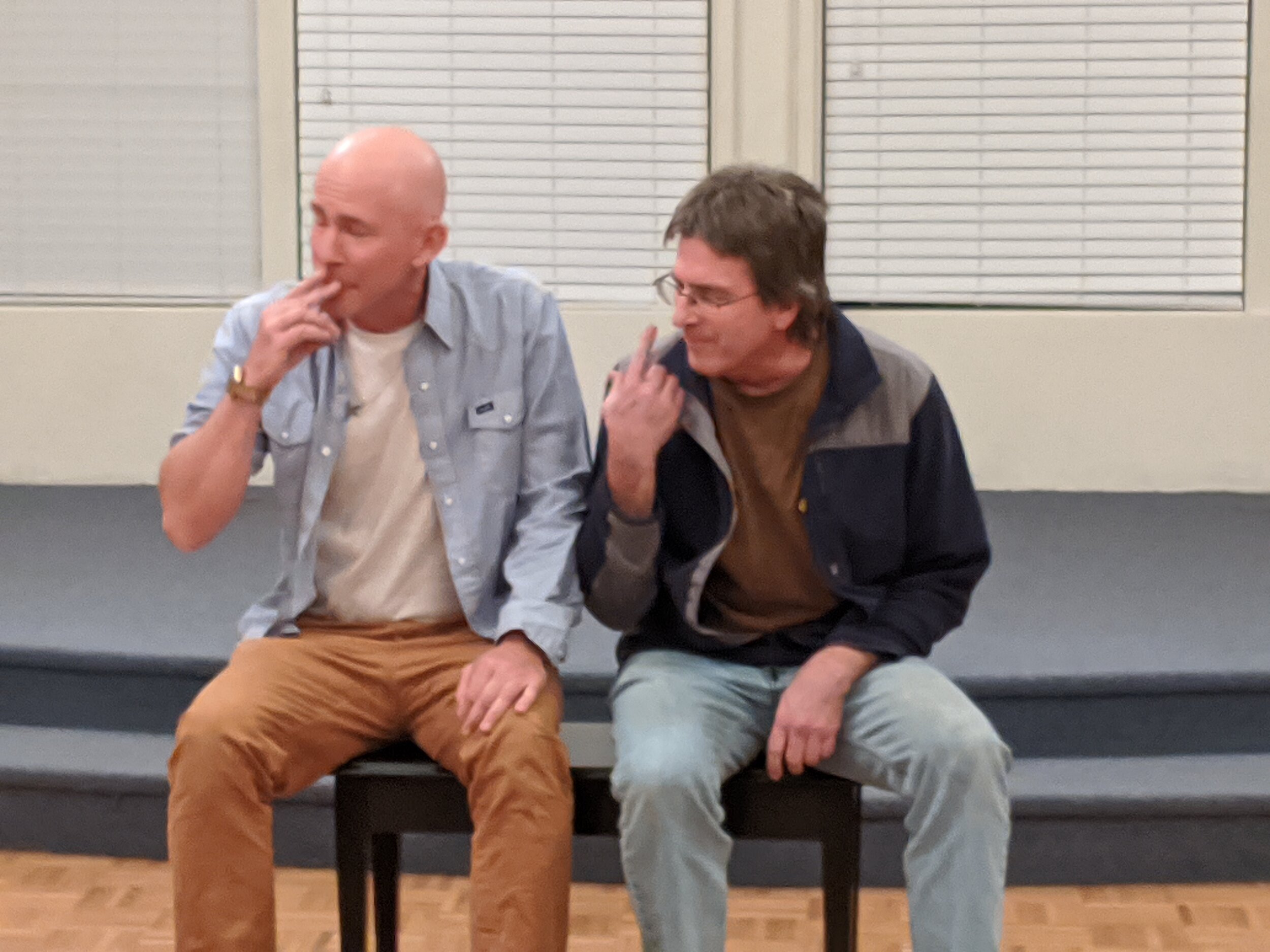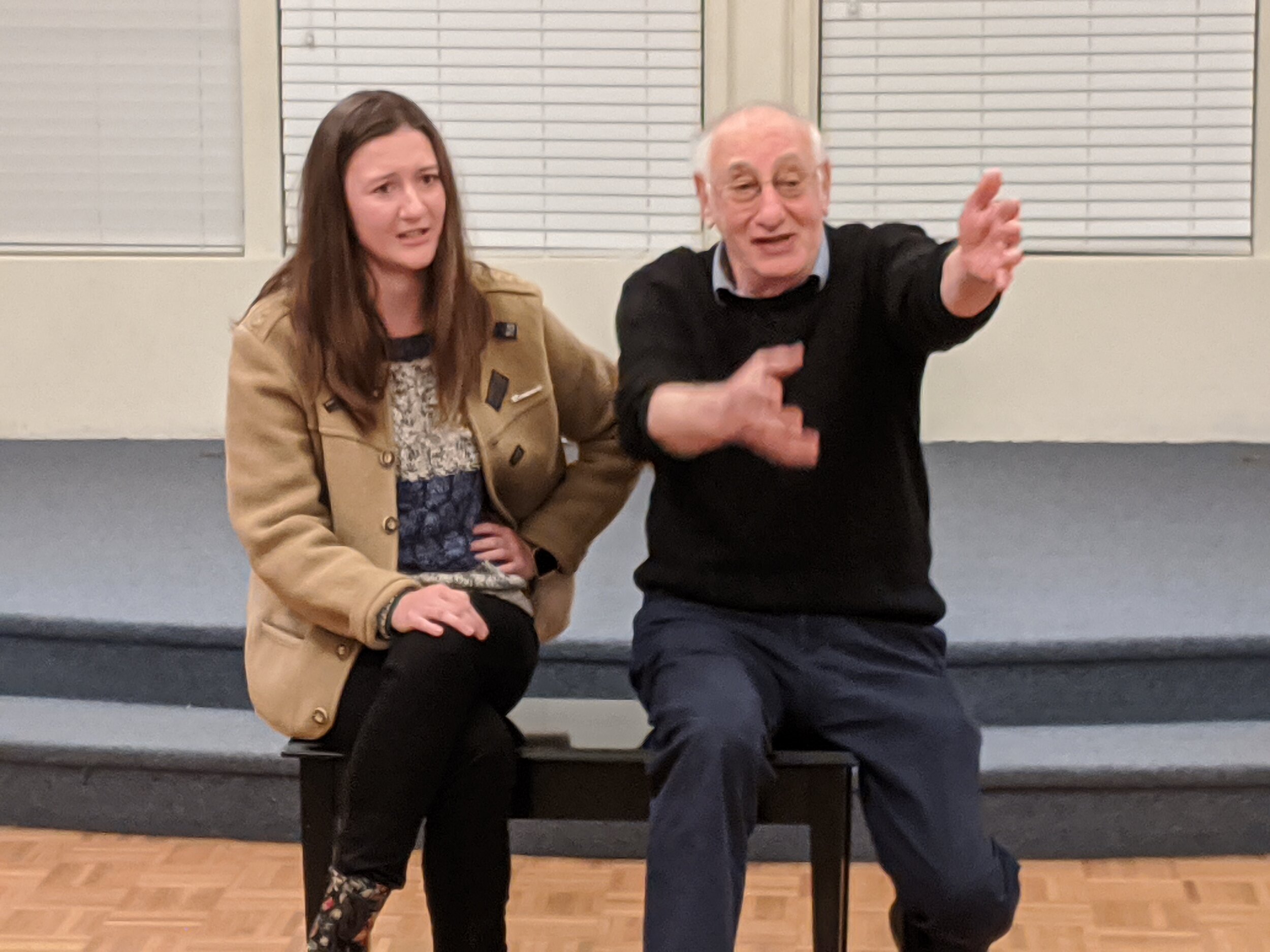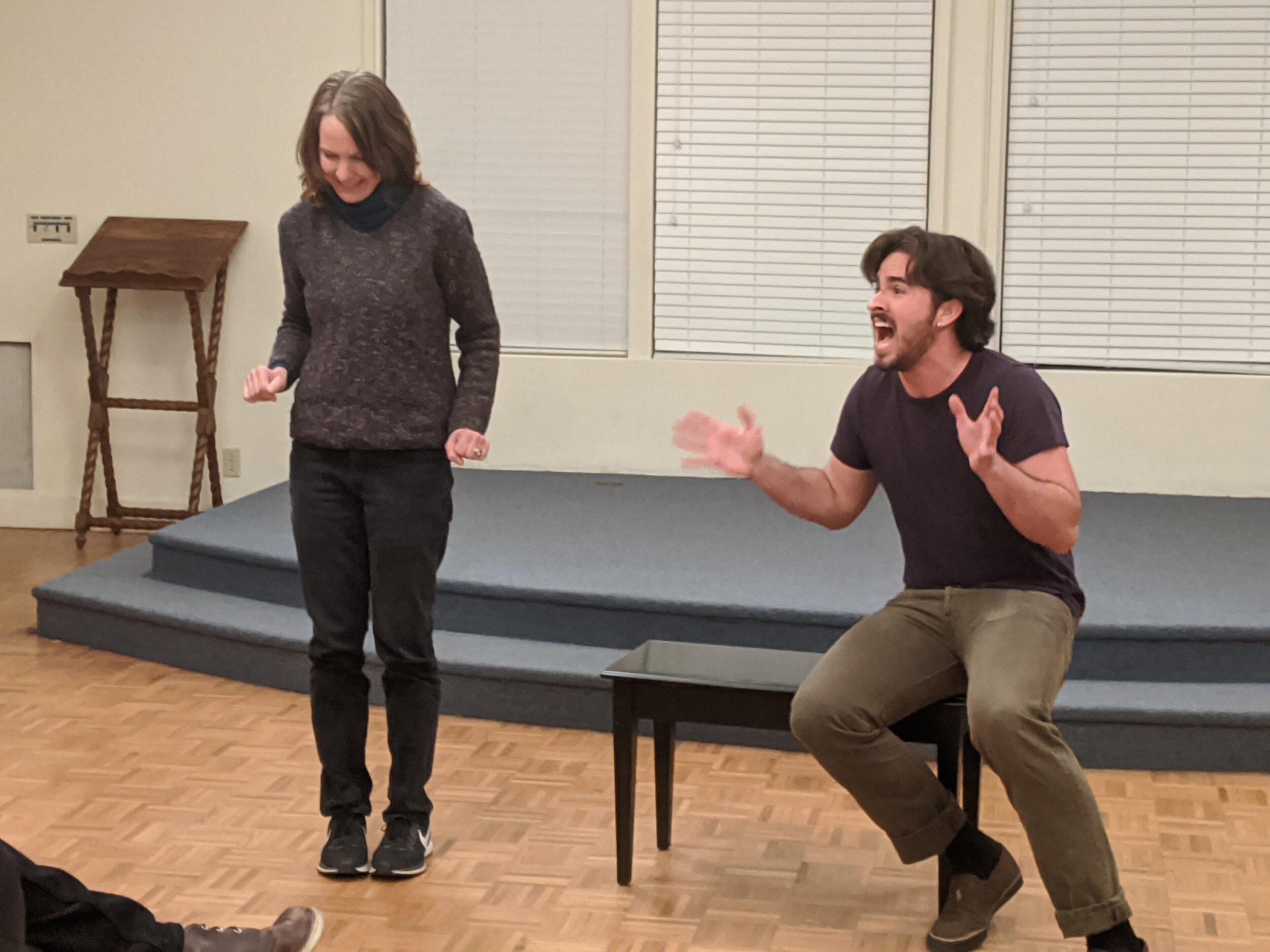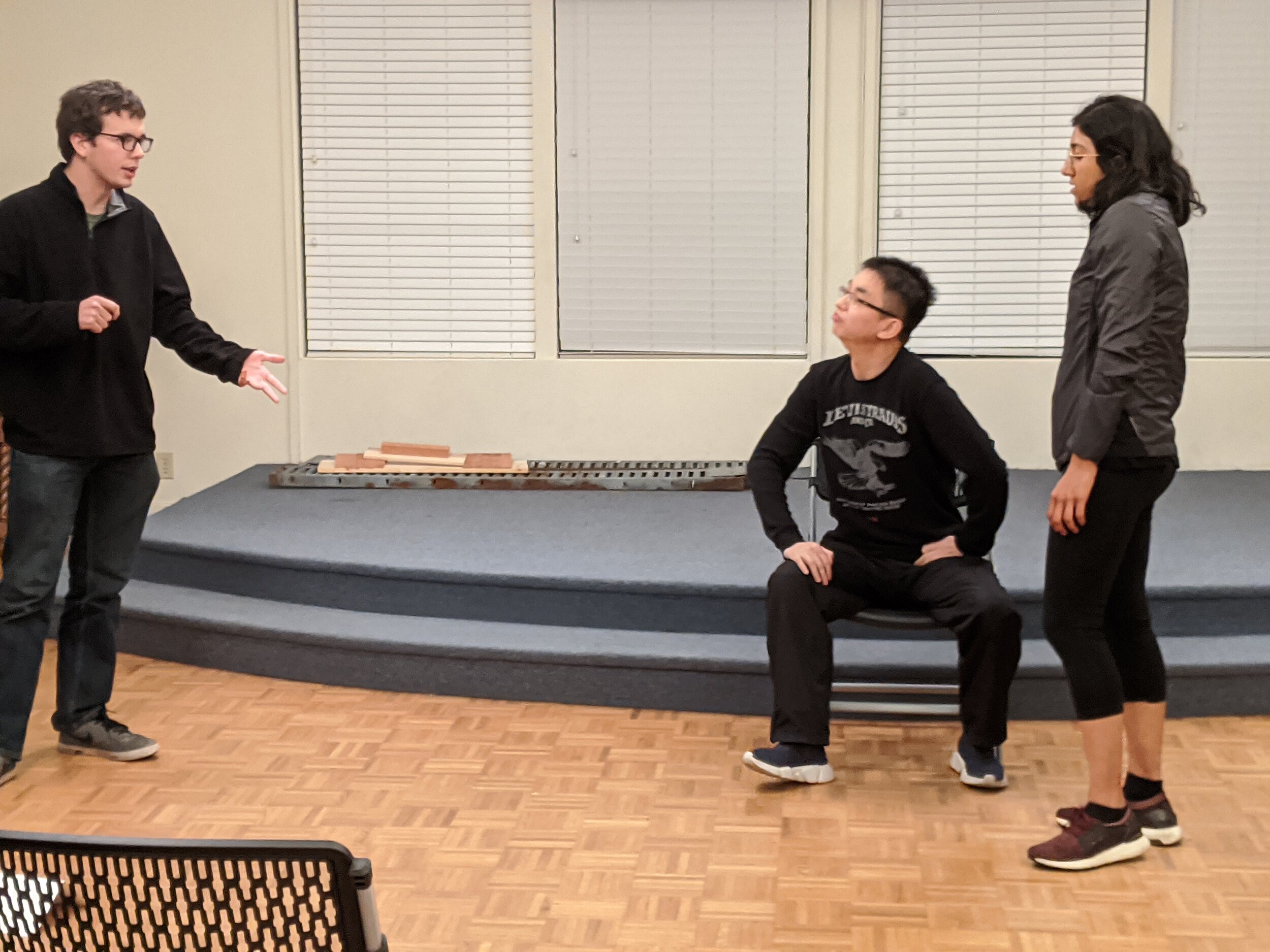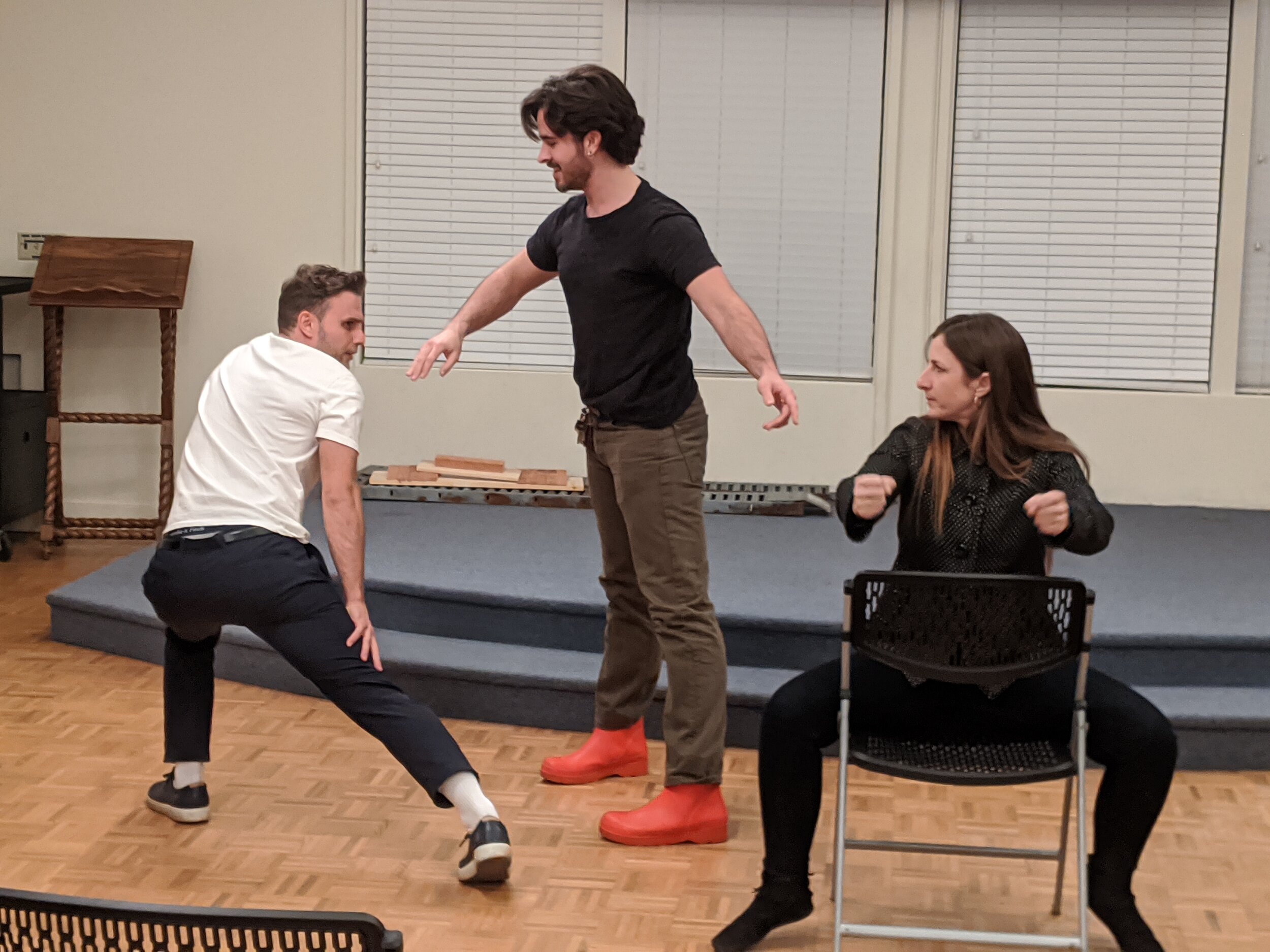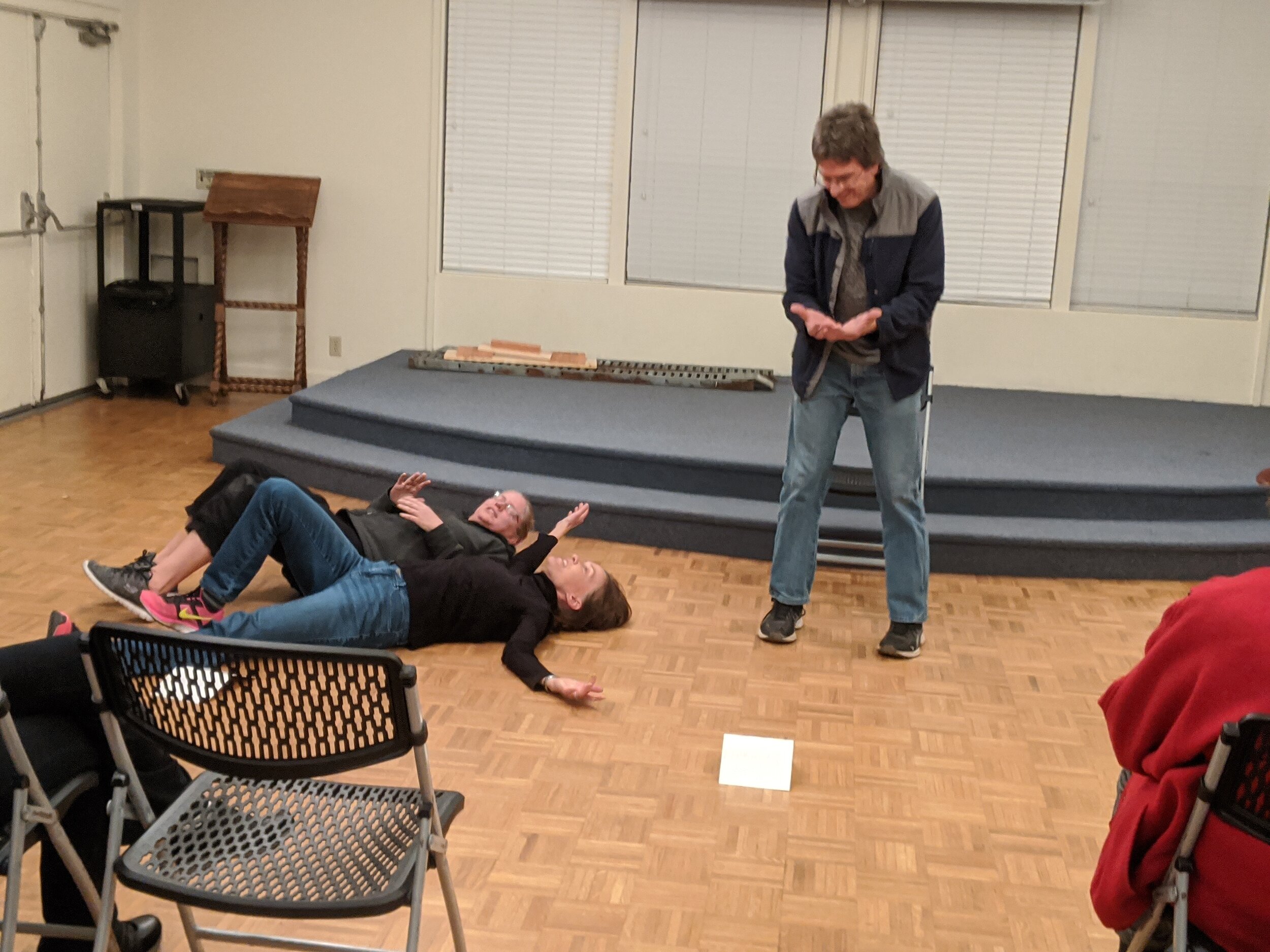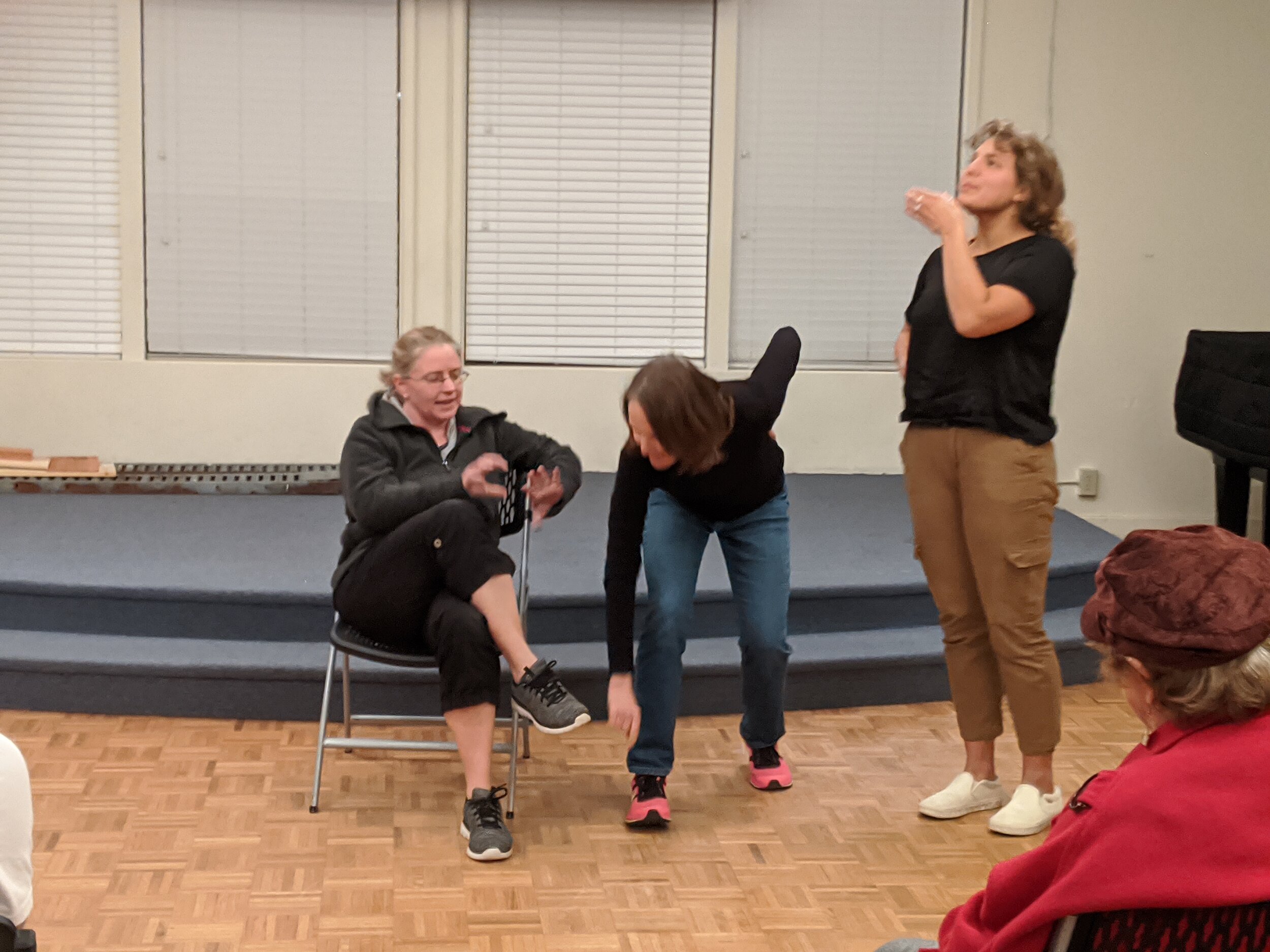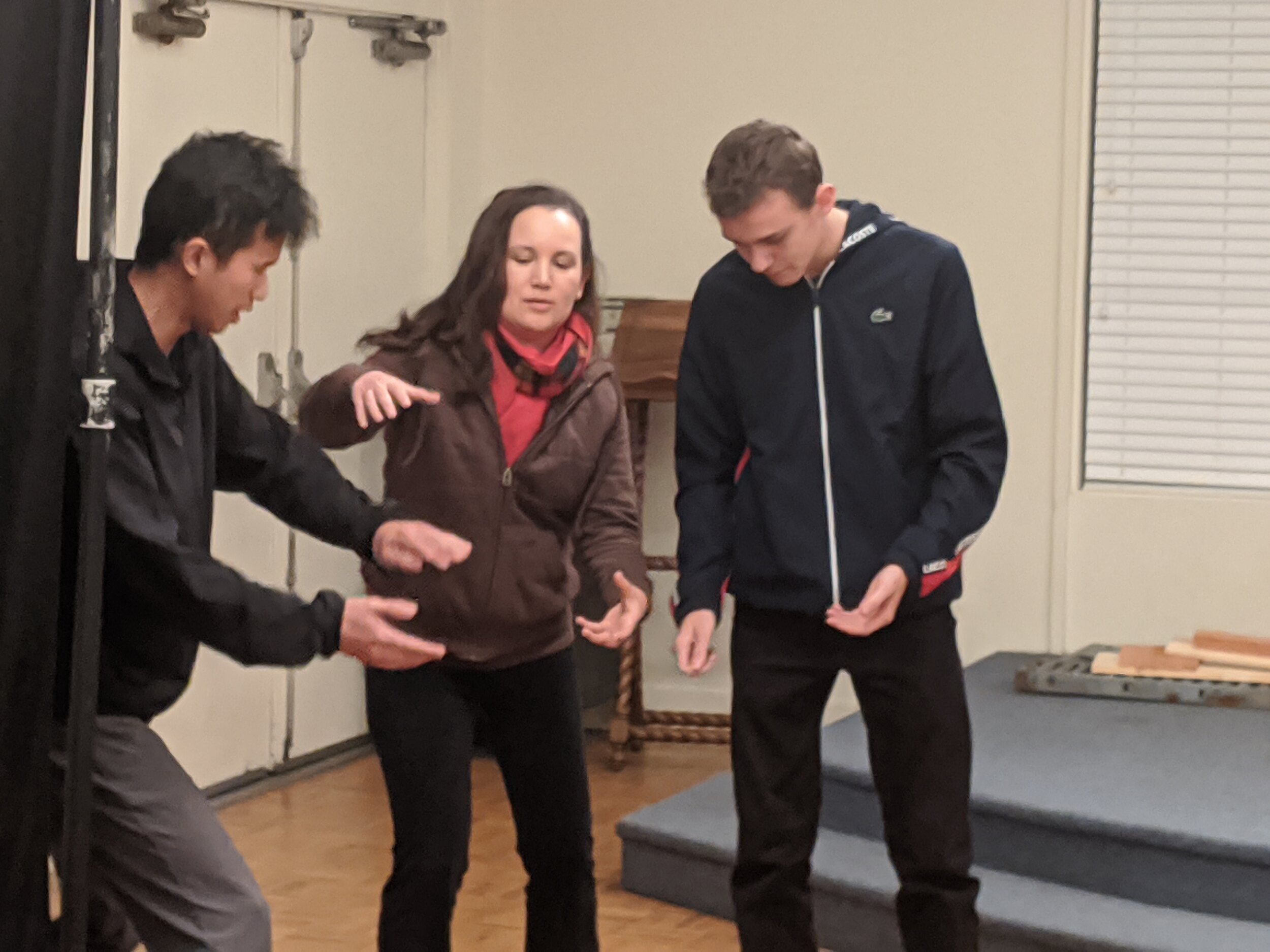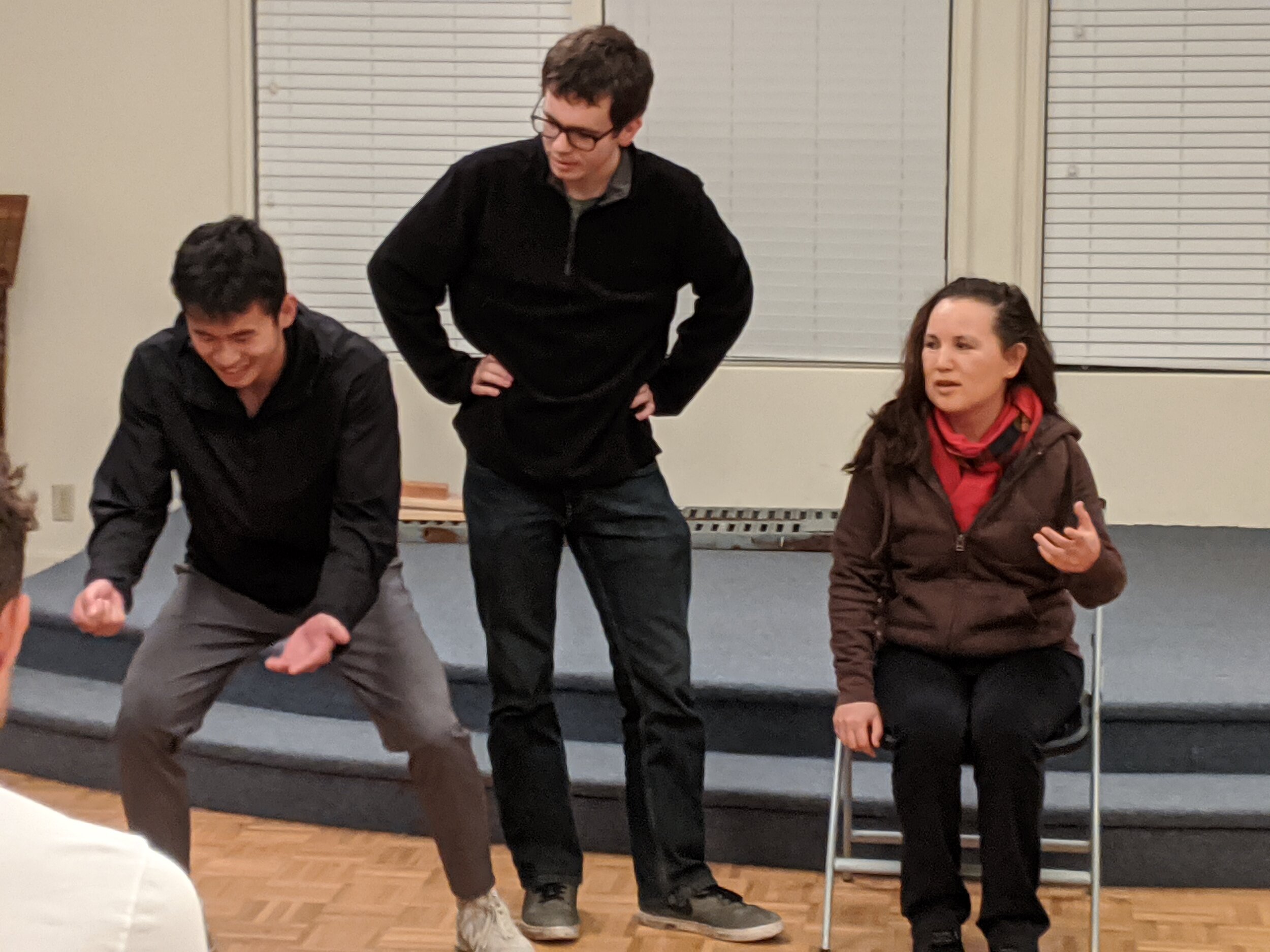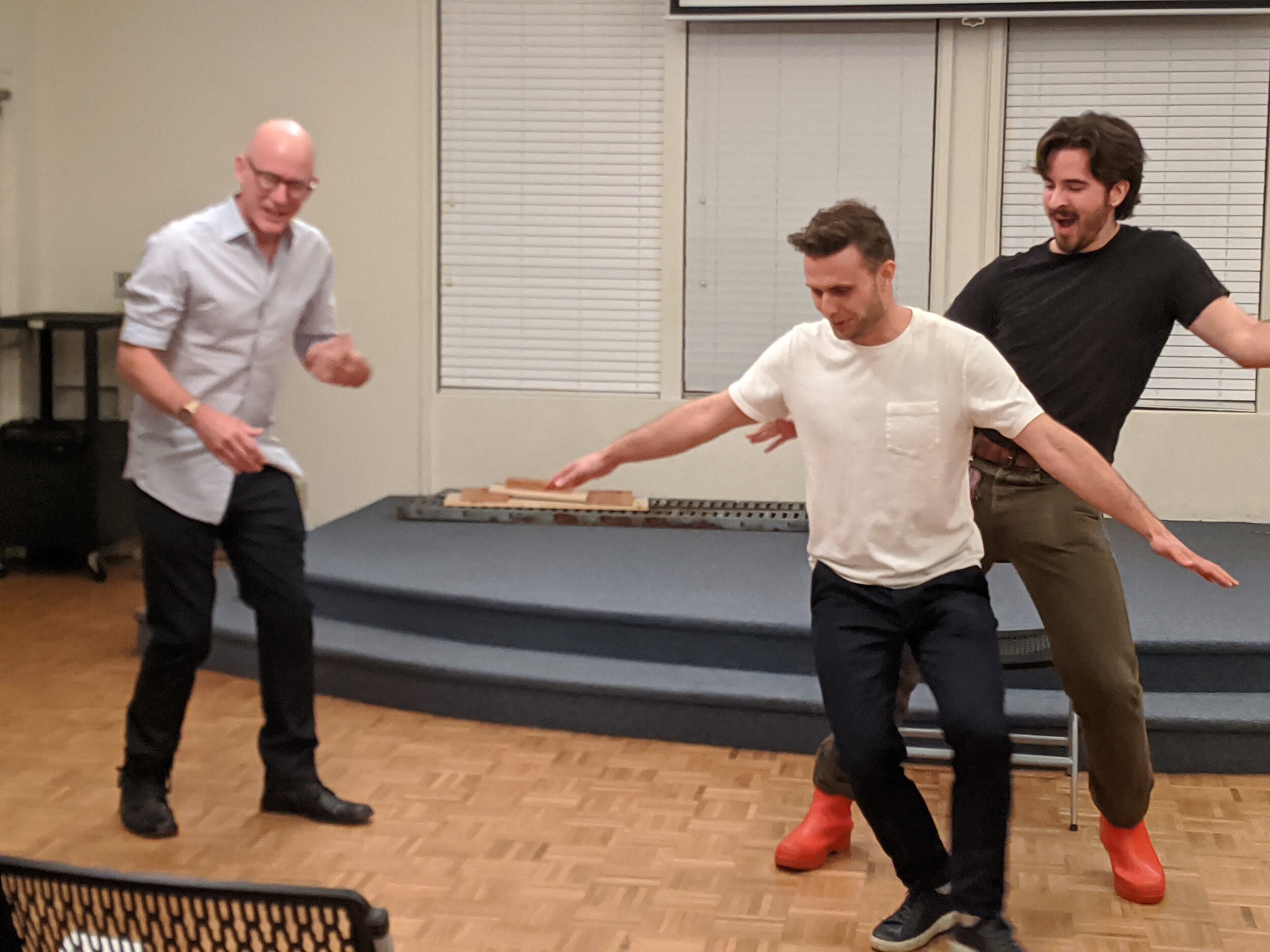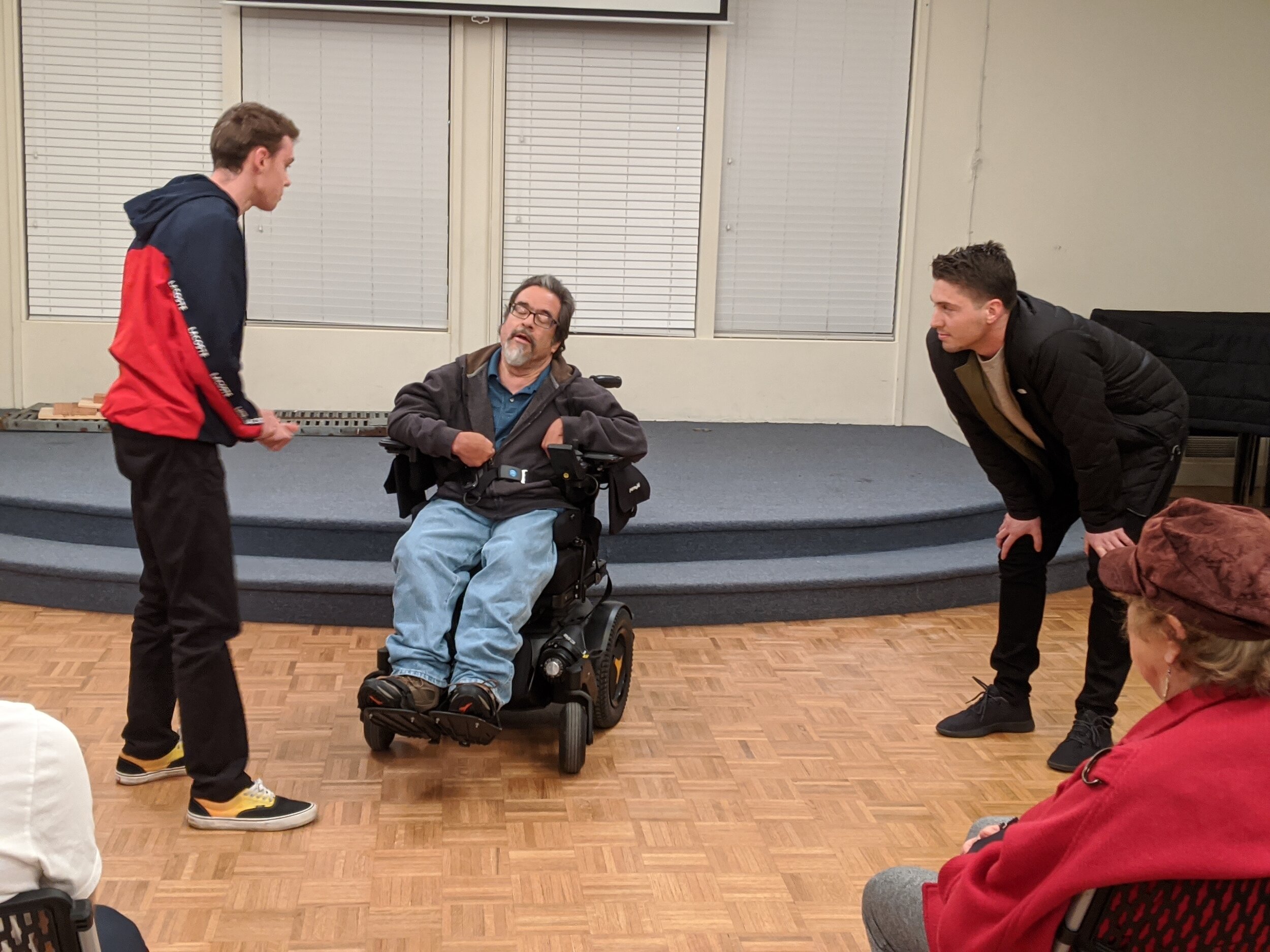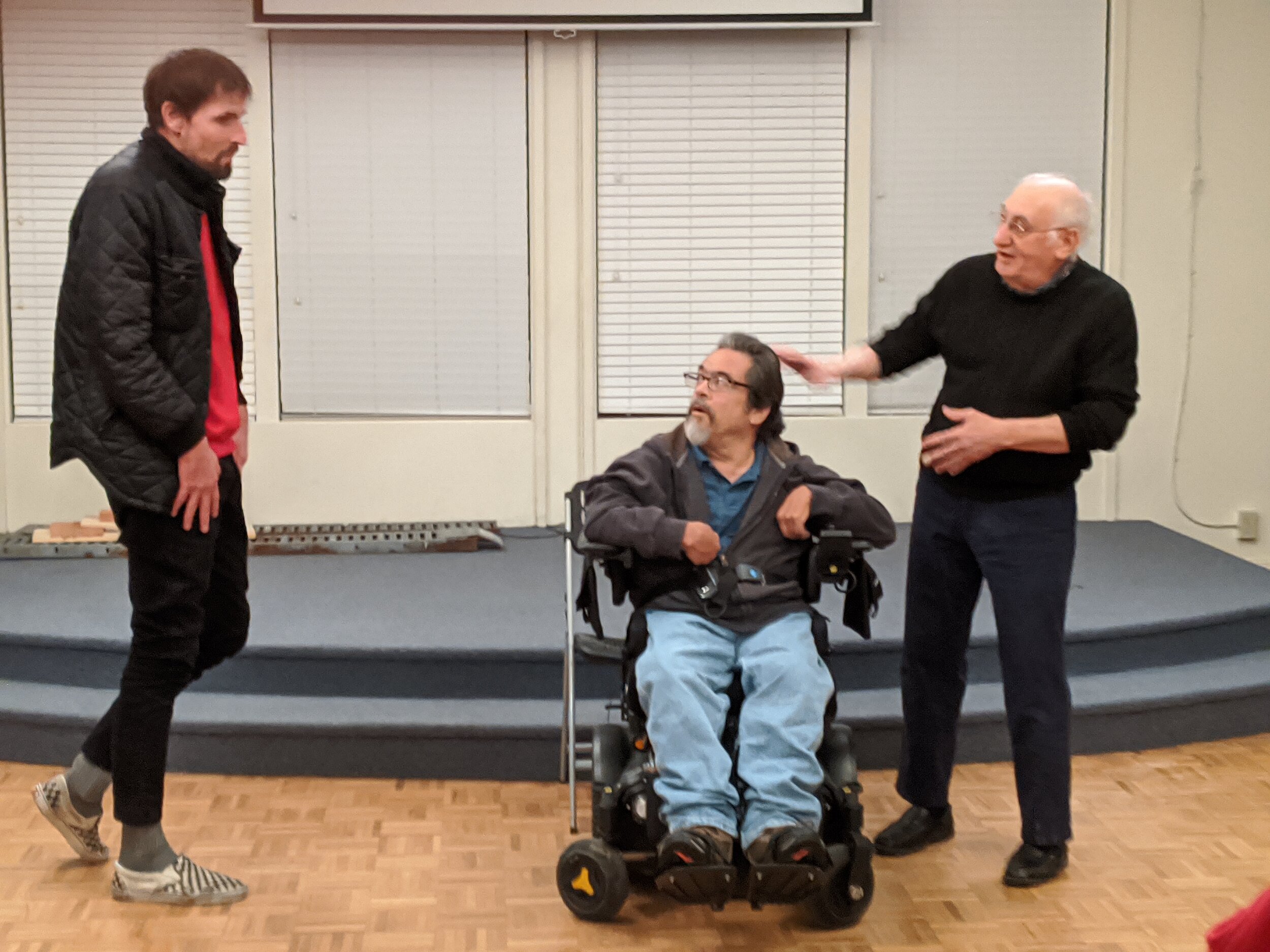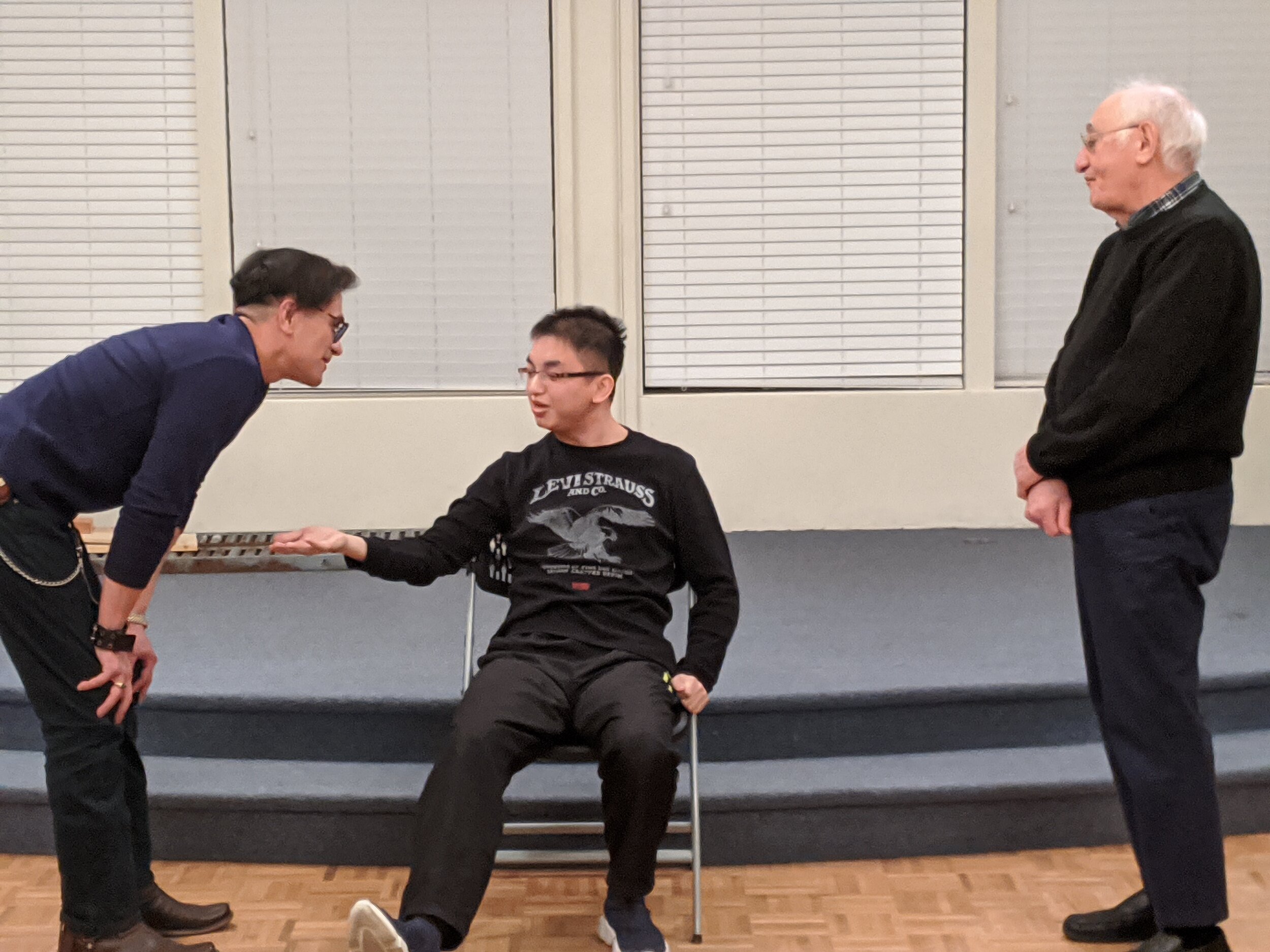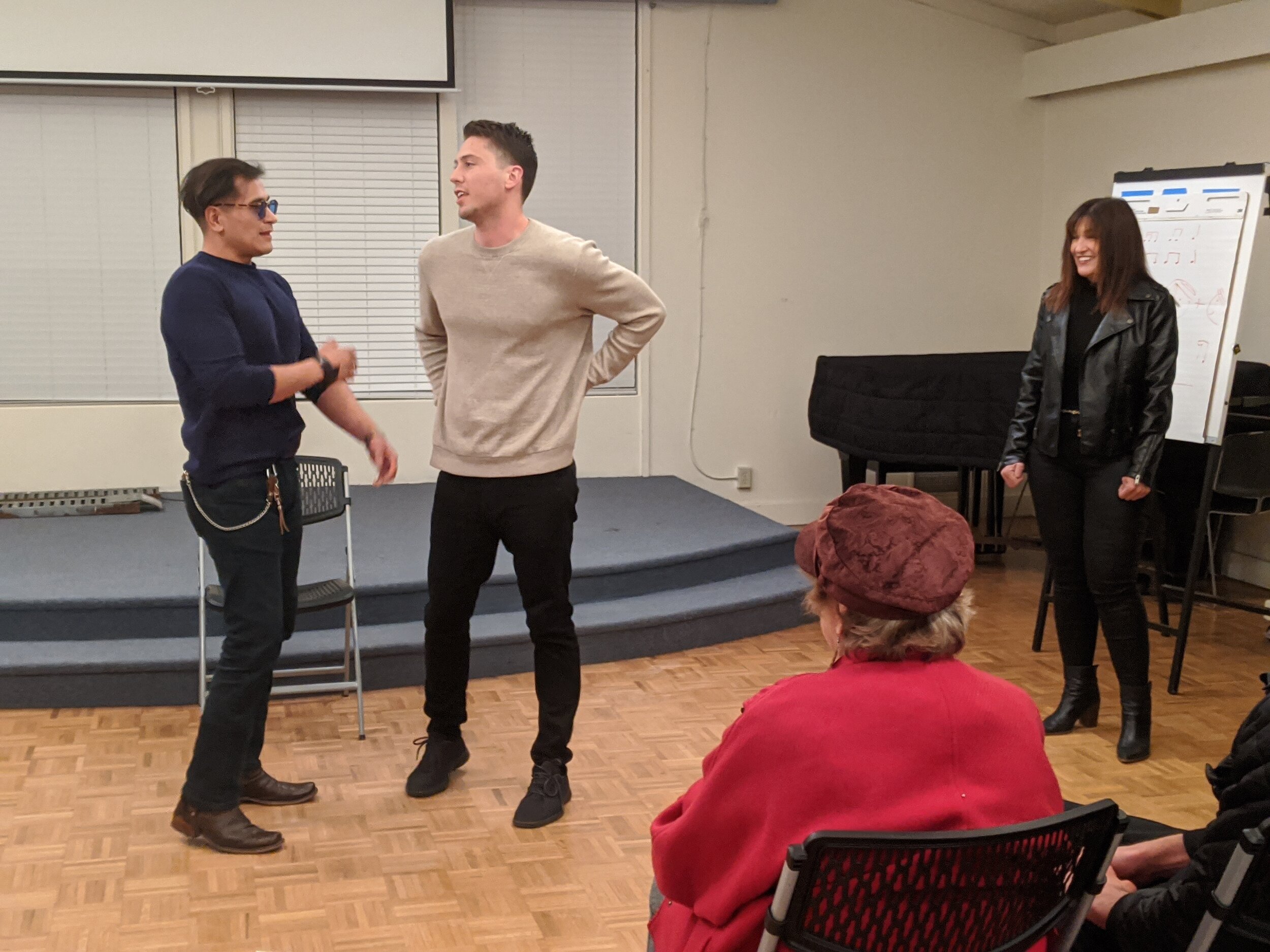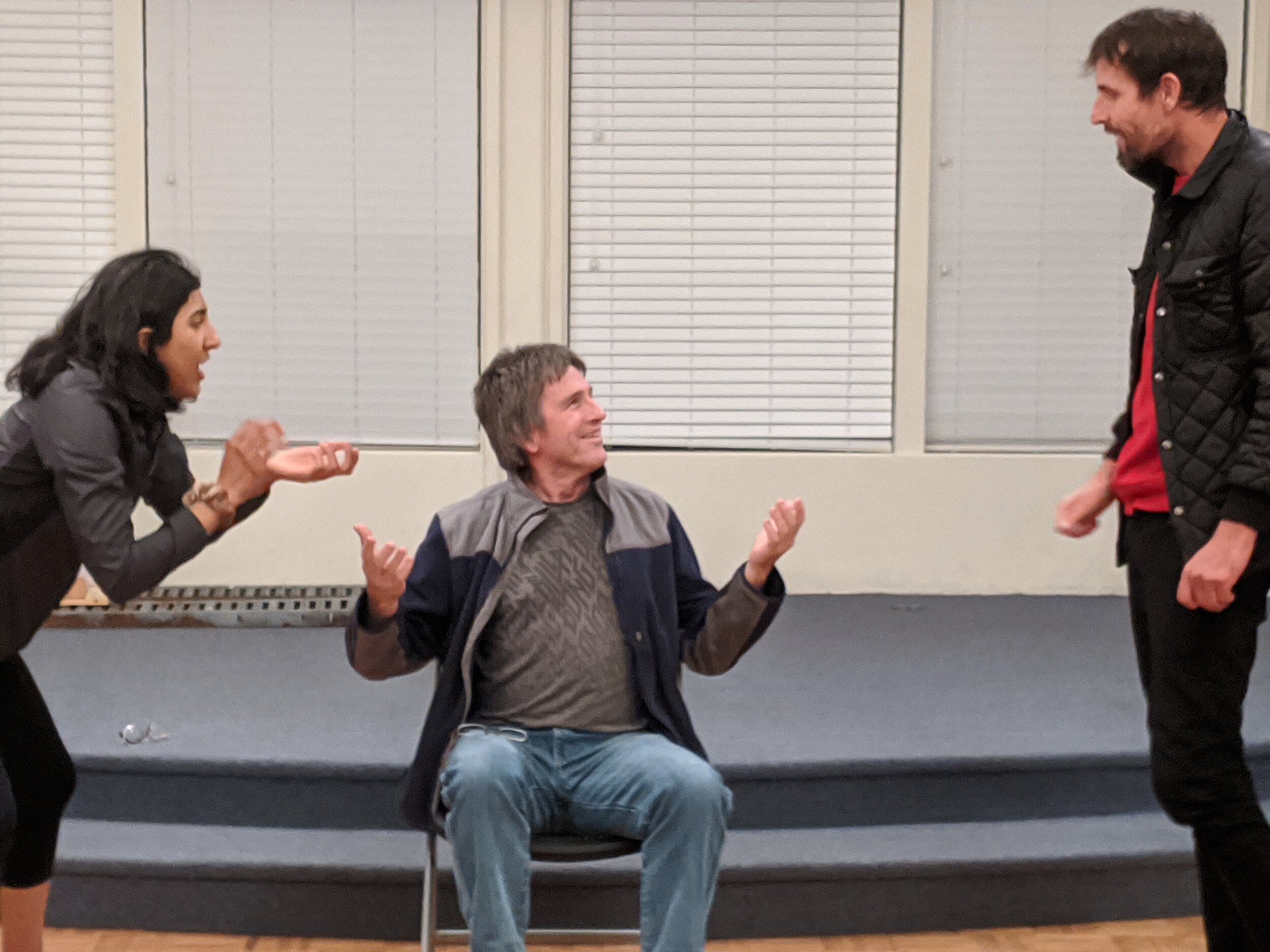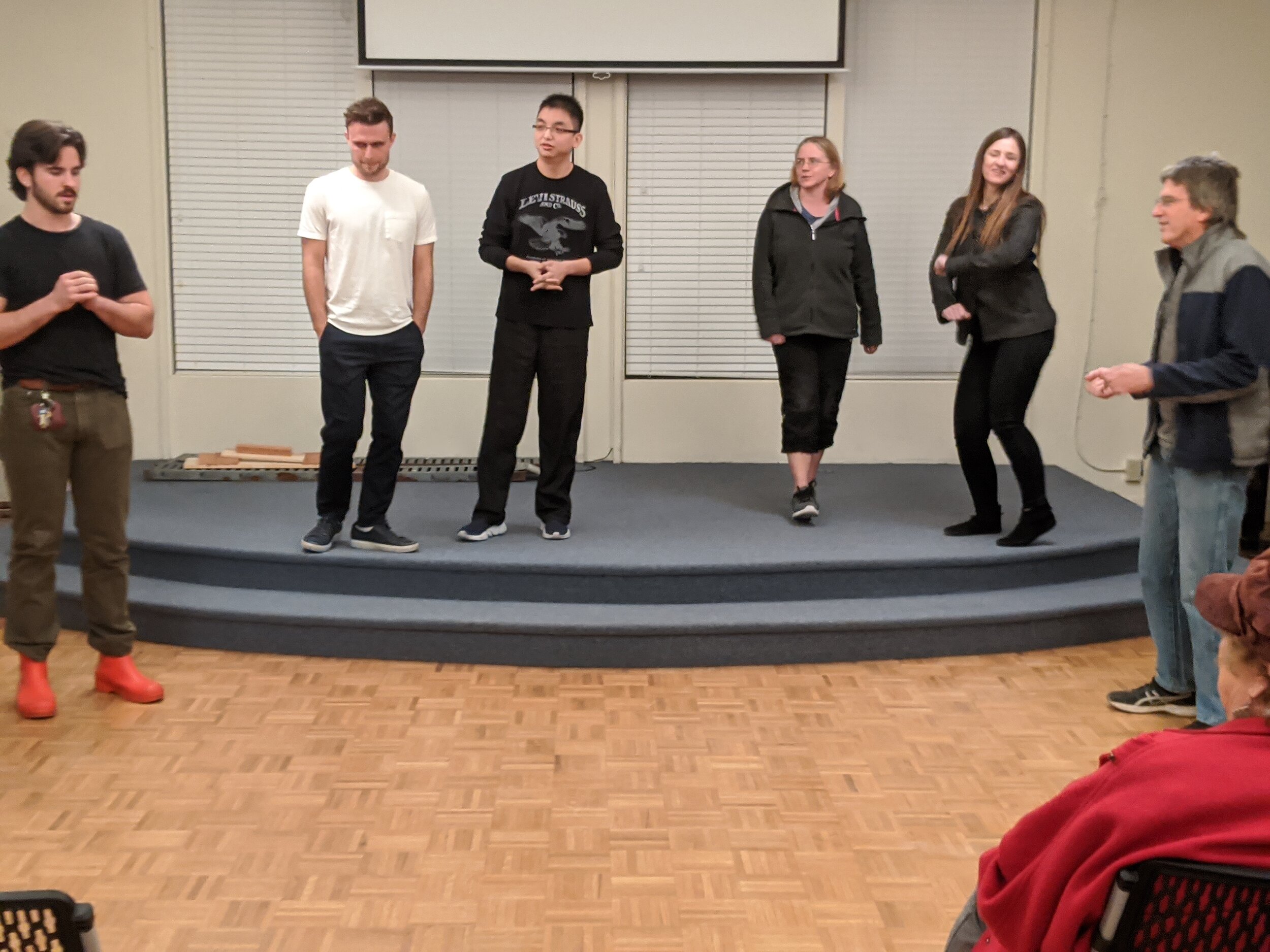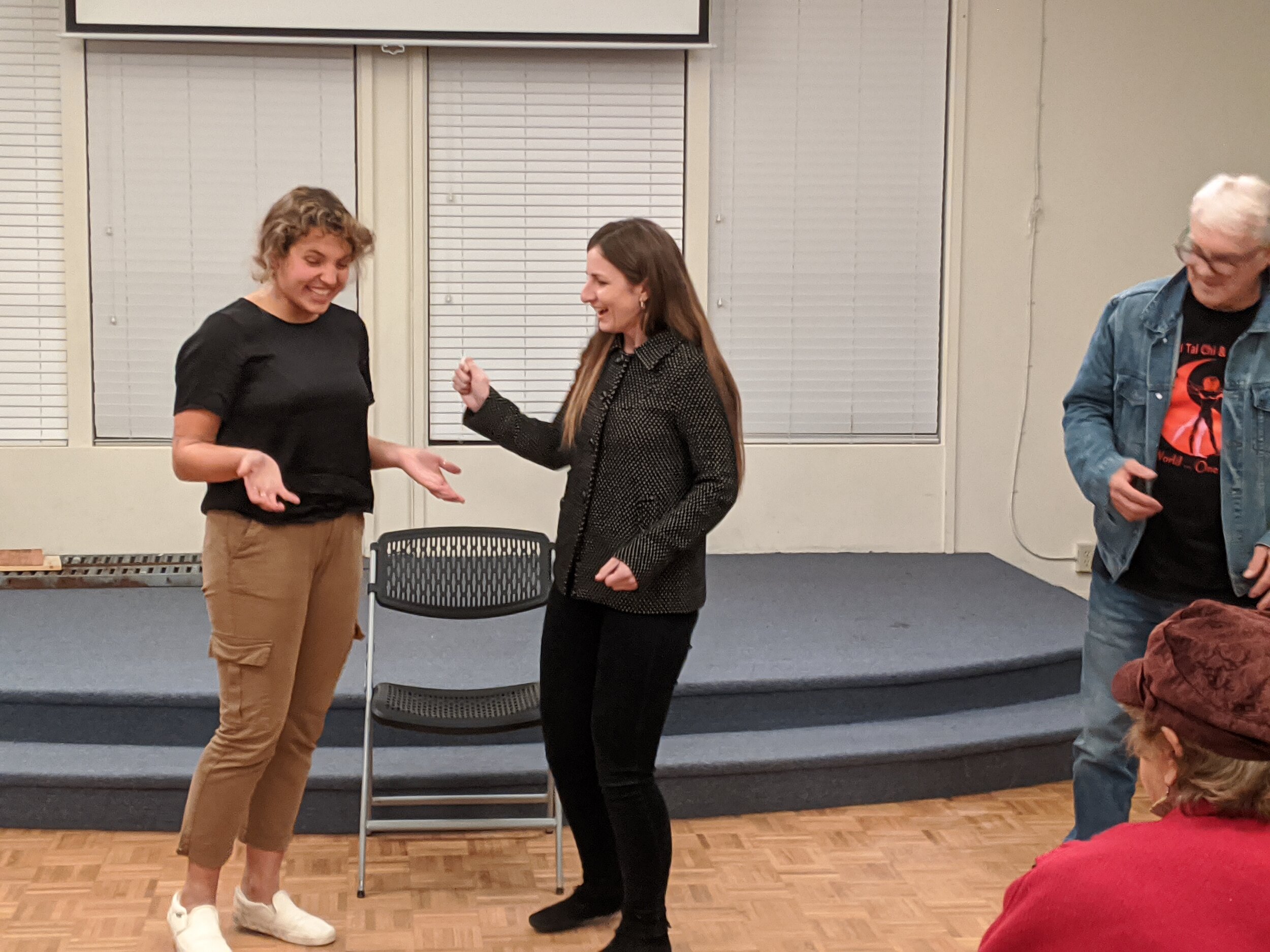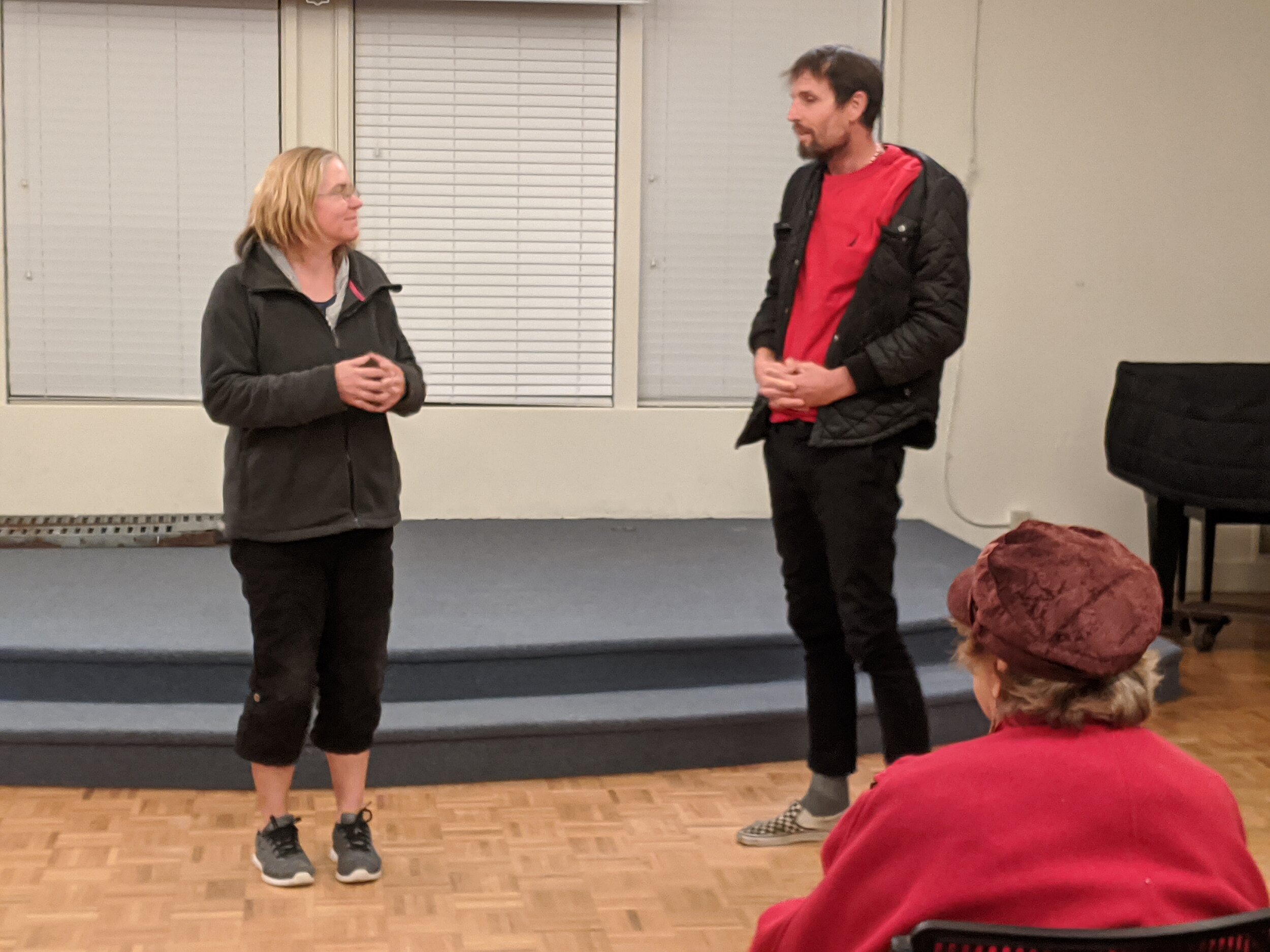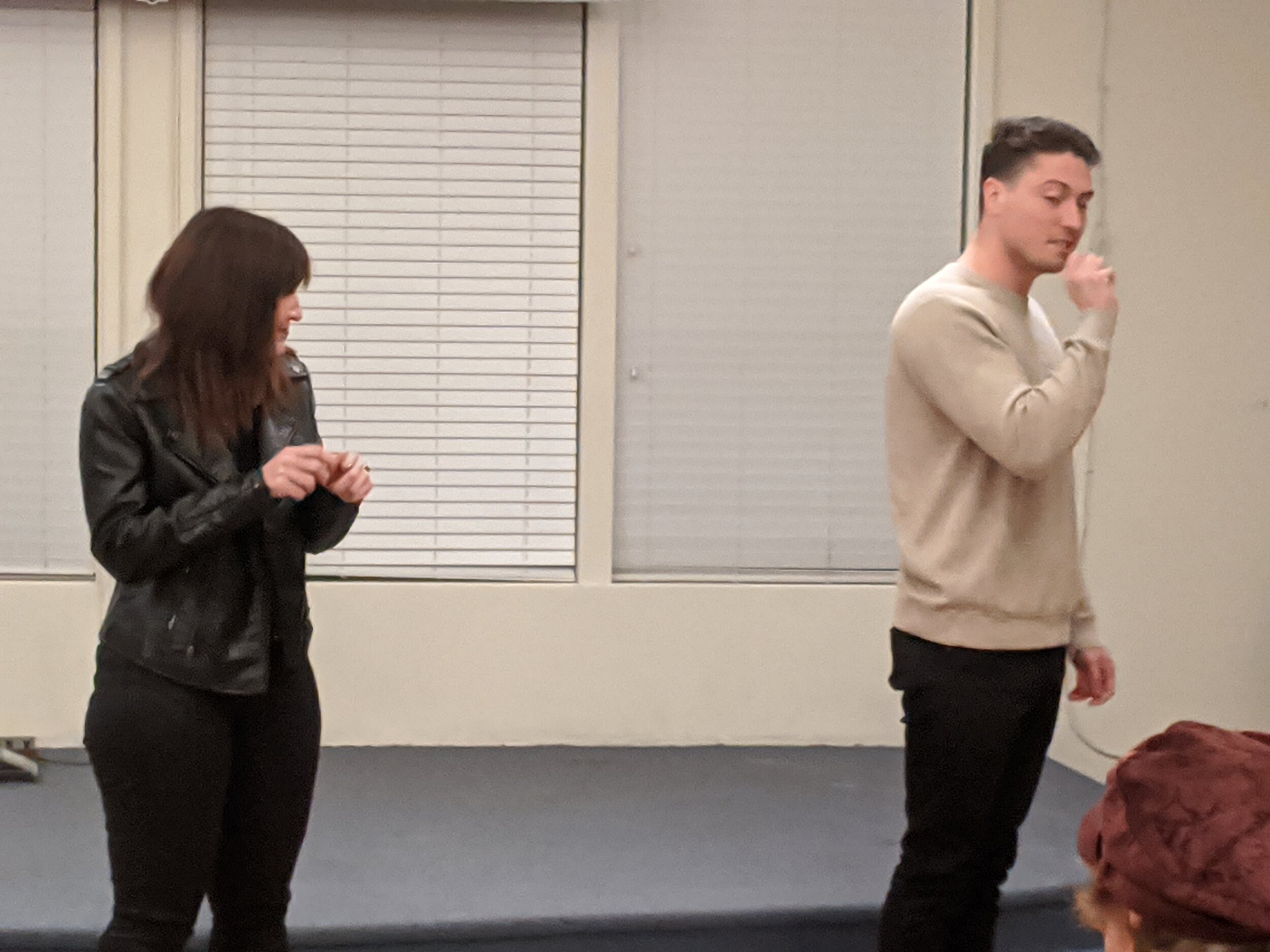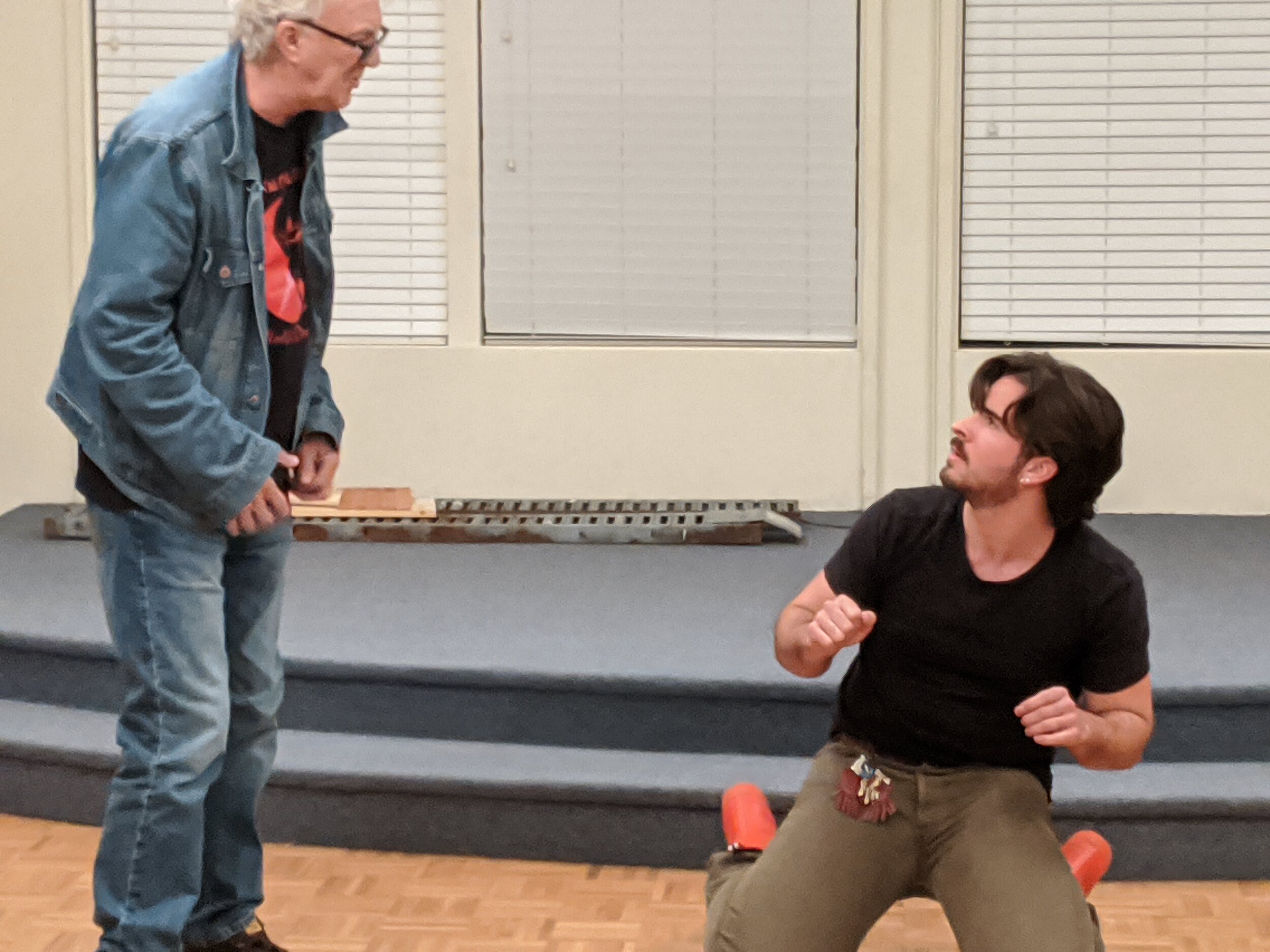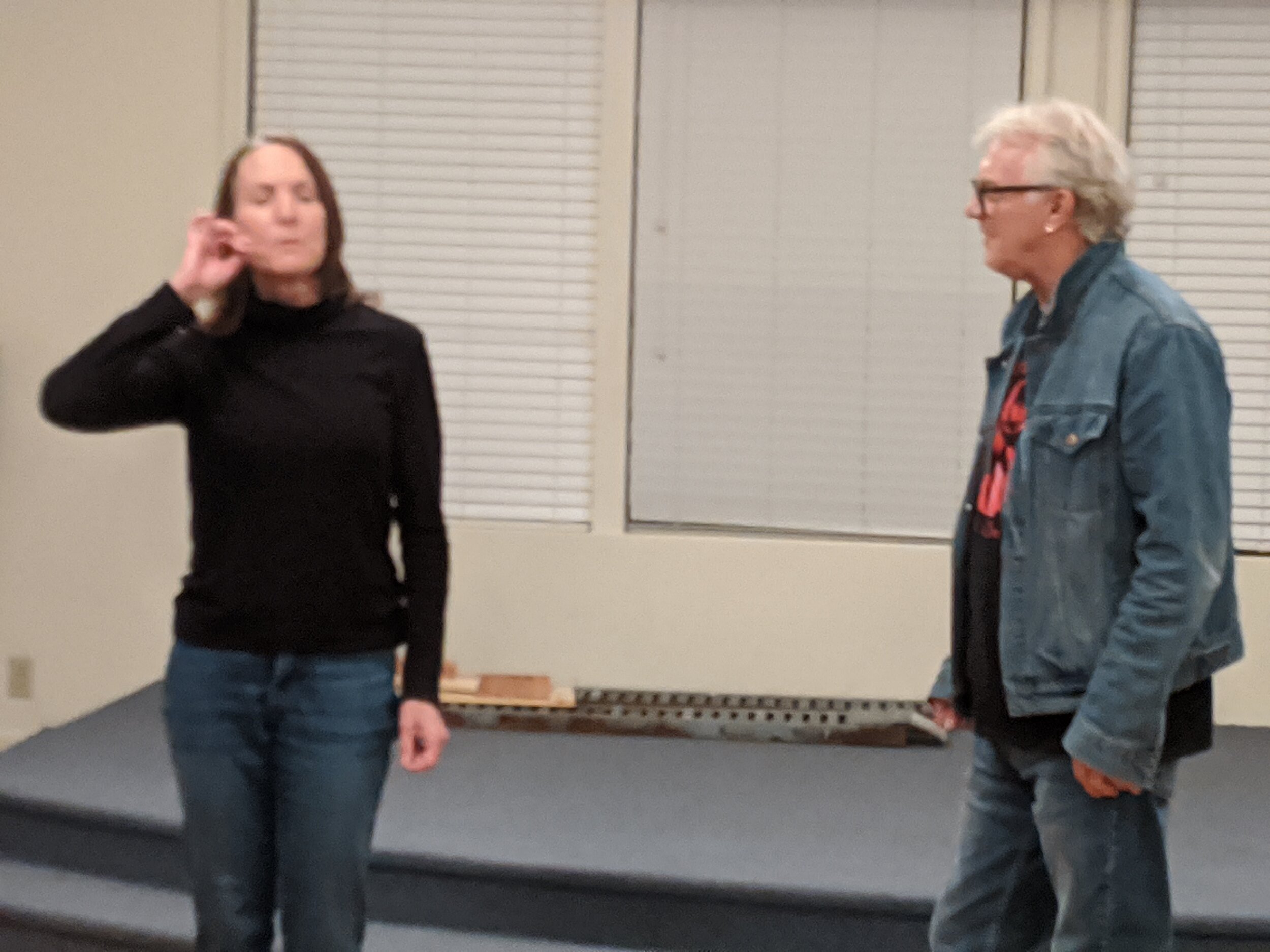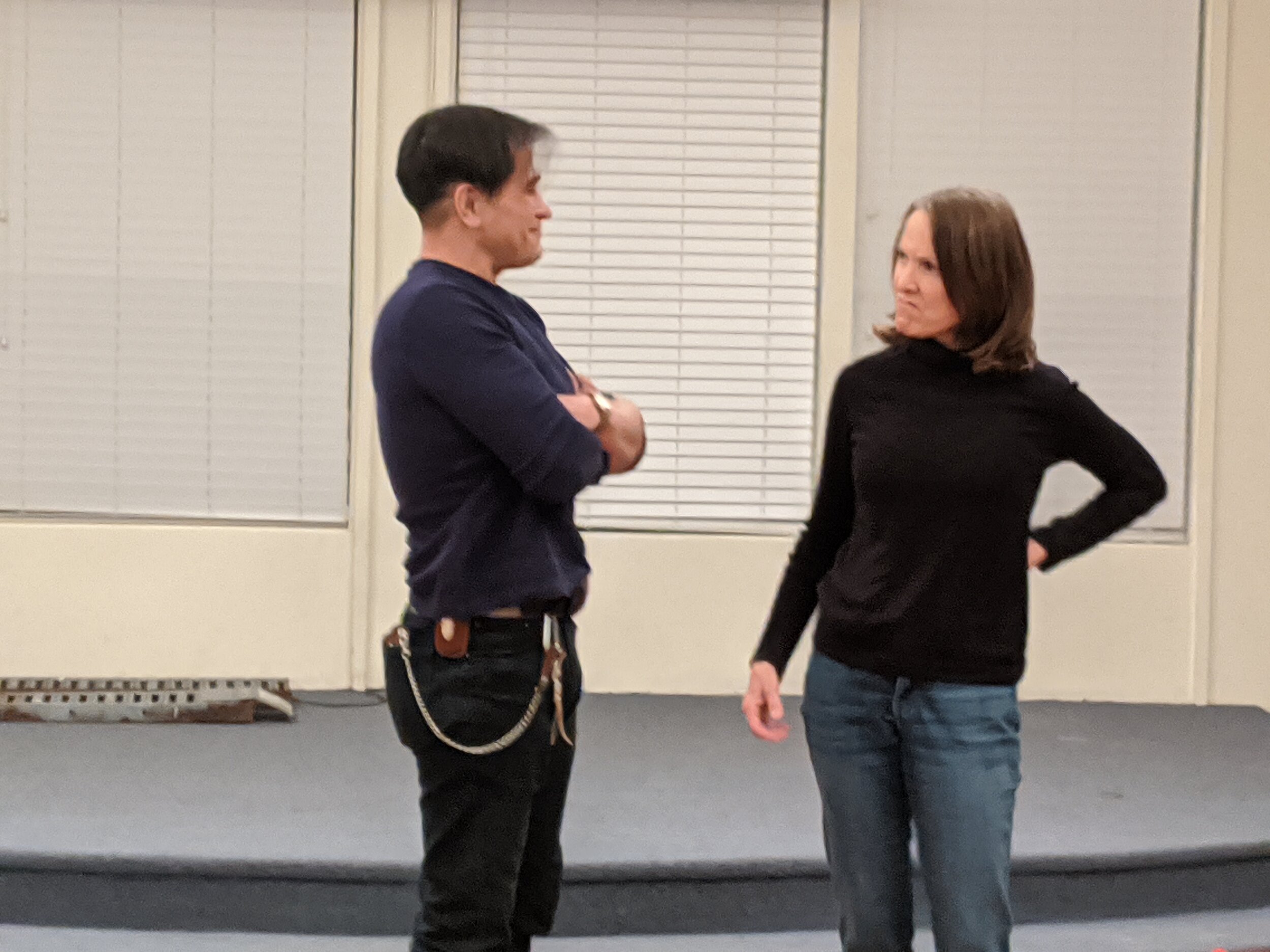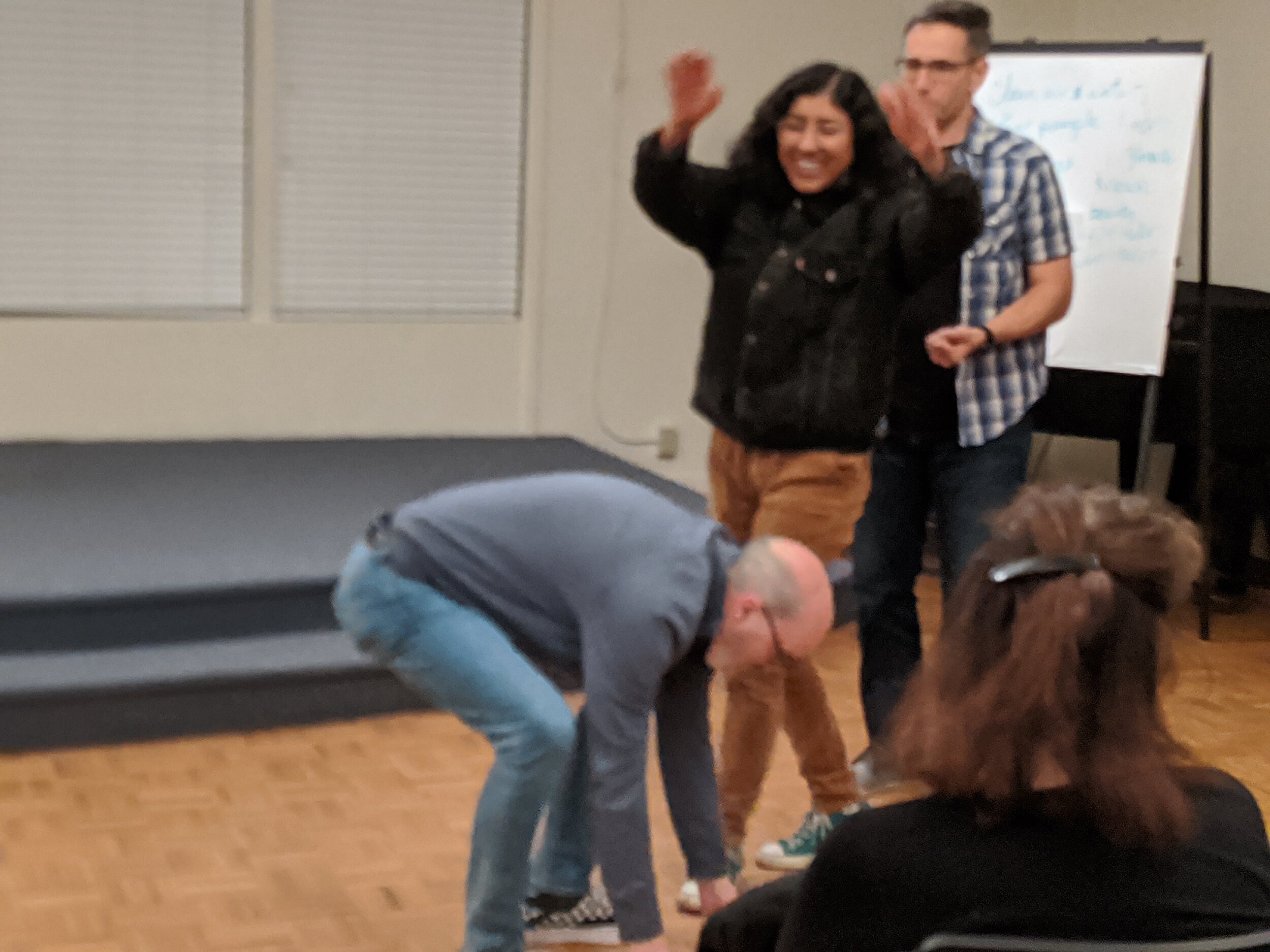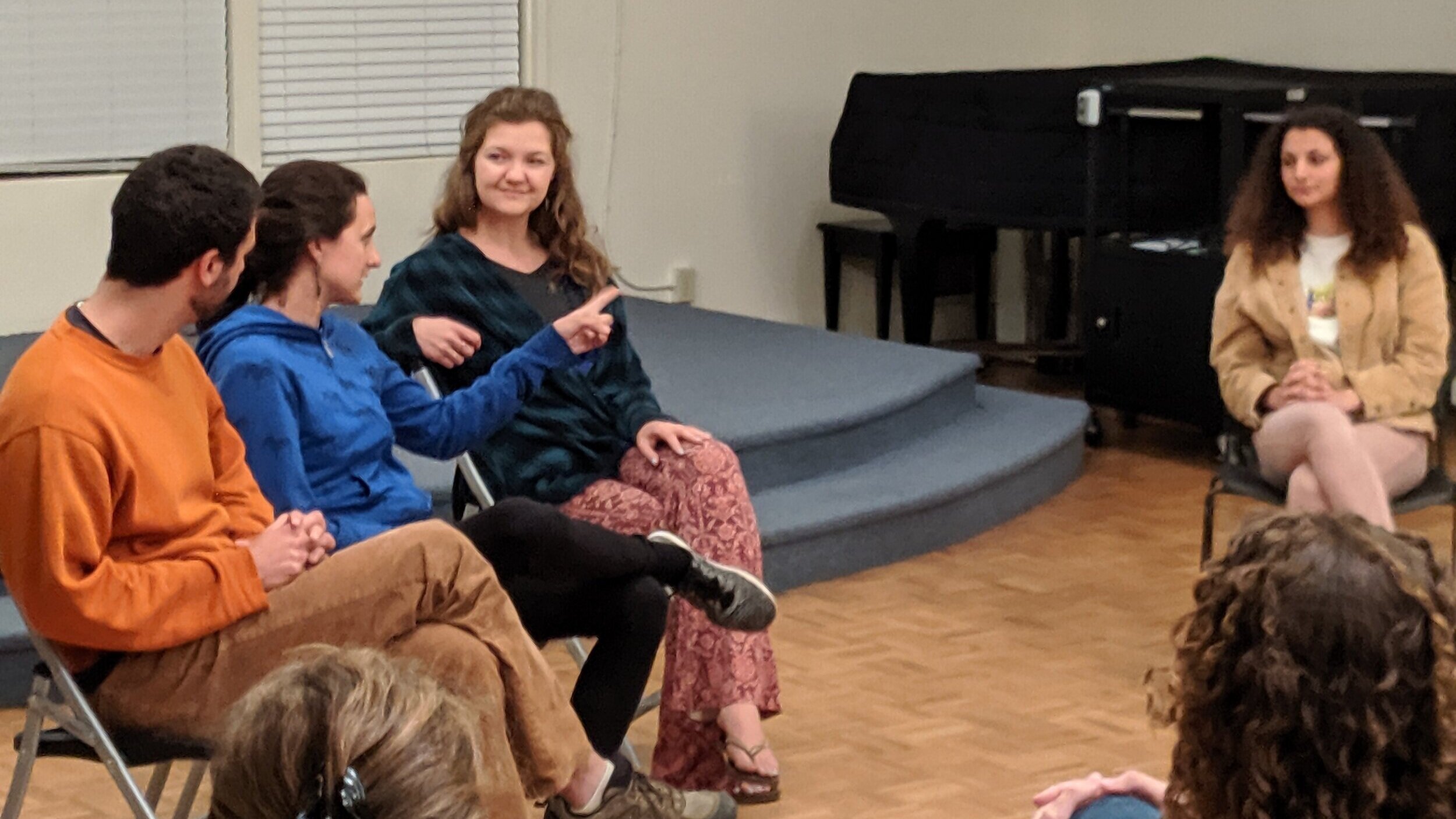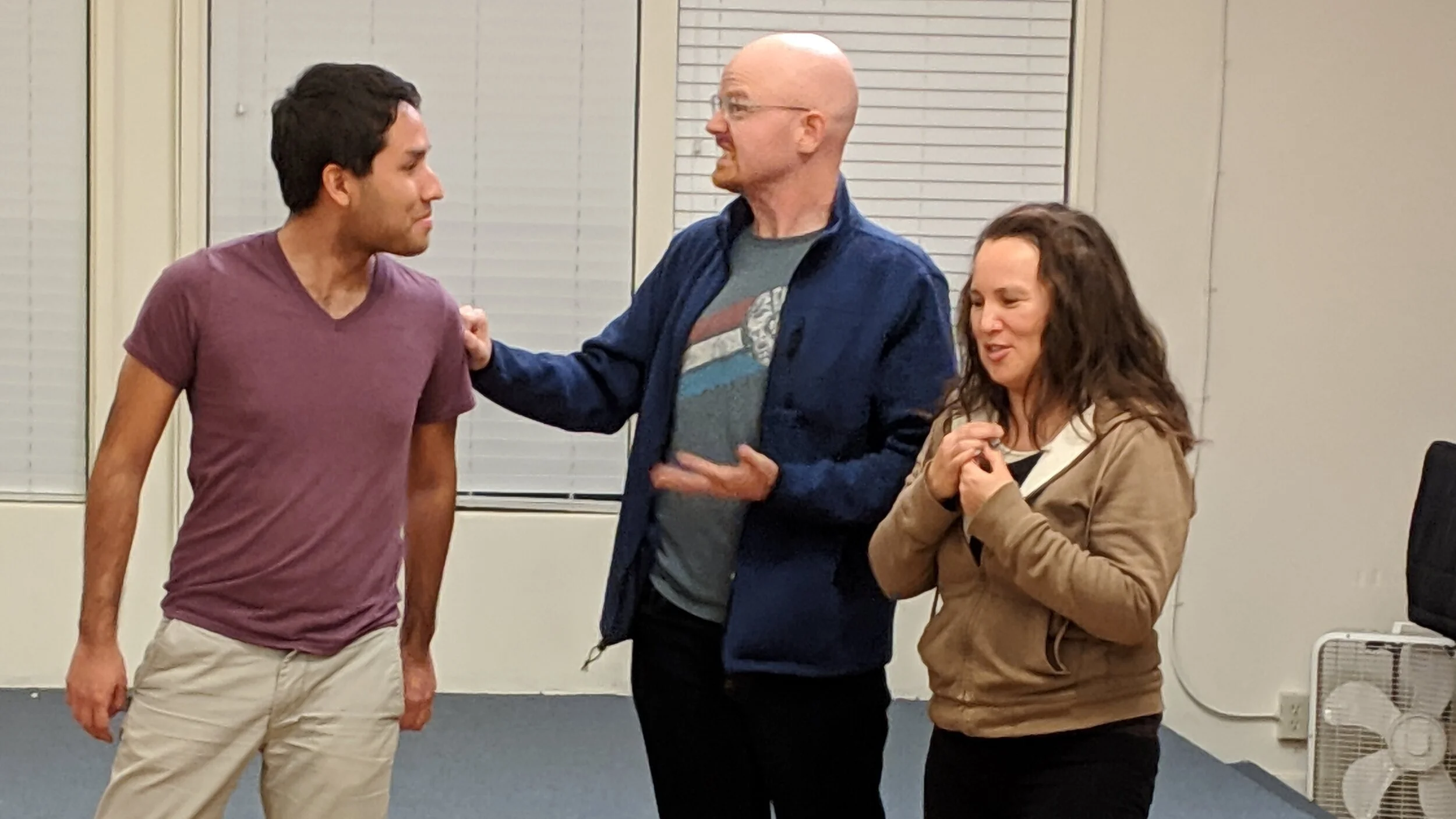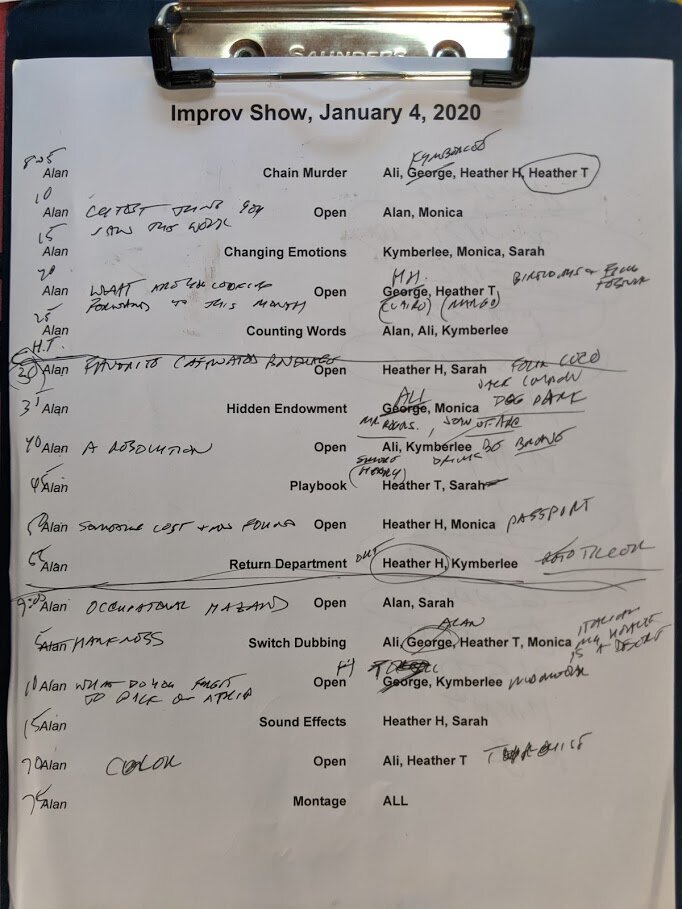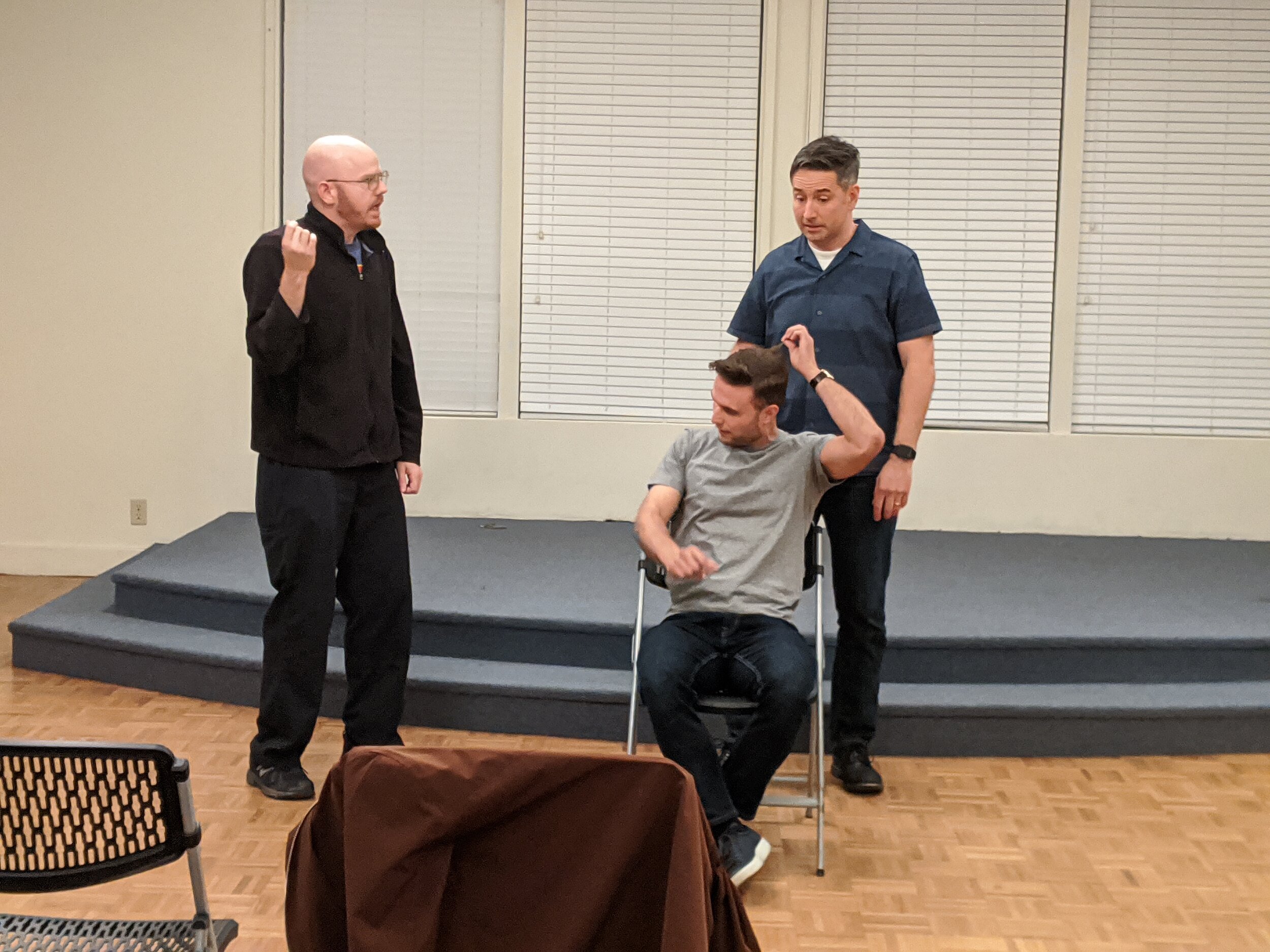“You’re just confusing everybody. Just call yourself the teacher!”
That was the the advice given to me some 30 years ago. It finally led me to acknowledge that I was an improv teacher.
The improv class we currently know started in 1989. I joined in December of that year when it had only been going a few weeks. I was brand new to improv and LOVED it!
Over the next few years the instructors changed, and I started performing along with the other students. The instructor at the time (Sharon Bettis) was a member of the performing troupe Kahoots!, and we learned a lot from her.
Unfortunately, around 1992 she was leaving town and planned on ending the class. Another player (Jim McRobie) and I decided to continue the class, but neither of us felt like we could teach. So we called ourselves ‘facilitators’ and basically just planned a bunch of games we could play each week.
Jim ended up leaving town, and it was down to me. I kept calling myself the facilitator, but as new players joined and the old crew left, I was giving more ‘notes’ and talking abut how to do improv more and more.
Finally, a very wise person approached me with quote, above.
Over the last 30 years, the class has gone through a lot of changes: the location (so many), the length of time (originally it was a 90 minute class), the size (we would often cancel because we couldn’t get 4 people to show up), and the syllabus (“we don’t have any kids”). But I’ve been the primary teacher, with substitutes filling in when I was travelling or sick.
That’s now going to change. Santa Barbara Improv has grown… a lot! We’ve been able to add teachers (Amy and George) along with new classes (Long Form Thursday nights). We now have 2 regular shows every month. We’ve recovered from the COVID downturn and our Wednesday night classes have grown to regularly be larger than 20 people.
And we’ll be adding more classes, shows, and workshops going forward. We’re also adding more teachers. And because of that, I’m able to make some changes to the Wednesday night workshop that I’ve been wanting to do for a while now.
I’m going to drop down to teaching Wednesday nights every other week. And the weeks that I don’t teach, we’ll rotate through a pool of (currently) five other instructors. There are a lot of reasons for this. The most important is that I want new players to hear other people talk about improv. I think we all learn different things from other perspectives, and my teaching style doesn’t always resonate with everyone. Other people will teach the same concept I’ve talked about, but they will explain it in a different way, and some folks will hear that better. That’s all to the good.
This will also give me some space to develop a new improv class I’ve had rattling around in my head. My plan is to offer a Level 2/Performance class. All the details haven’t been worked out, so you’ll hear more about it in a future blog entry.
This one is about the new instructors, and how I plan to incorporate them. And, to assure everyone that the Wednesday night class will continue in it’s same overall form: drop in, open to all levels, and a welcoming introduction to Santa Barbara Improv as well as improv in general.
Currently, the rotating roster of additional instructors consists of: Holly Mae Haddock, Linsey Kasehagen, Kymberlee Weil, Kimberly Herriman, and Robert Karl. As we get the scheduling down, I’ll start adding the name of the instructor to the calendar events on the website. We’ll also start posting info about the instructors on the website and on social media.
And this is just one of the changes that are happening around here. More will be announced on social media and discussed here in the blog. Let me (or any of us) know what you think!
Alan



